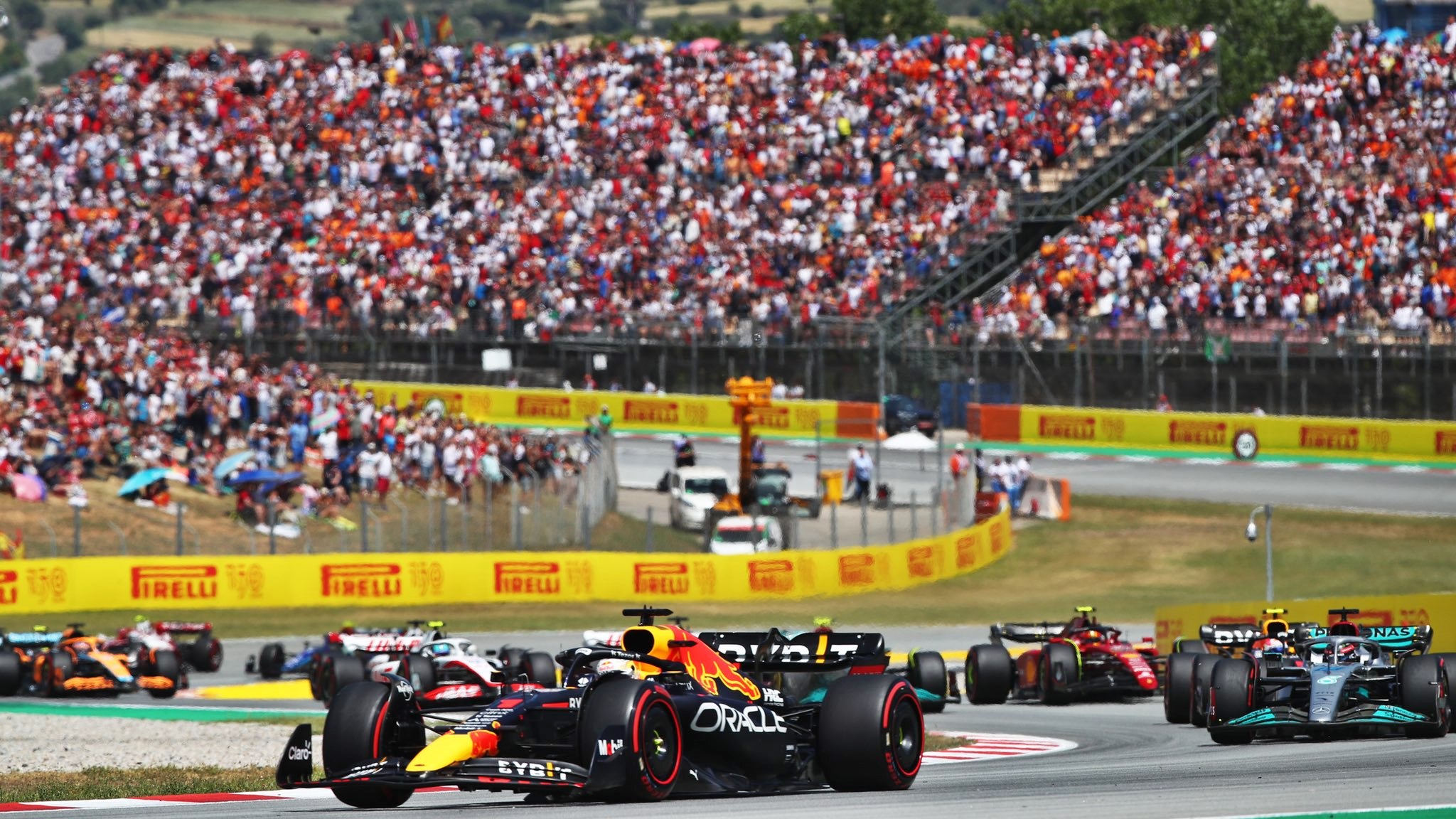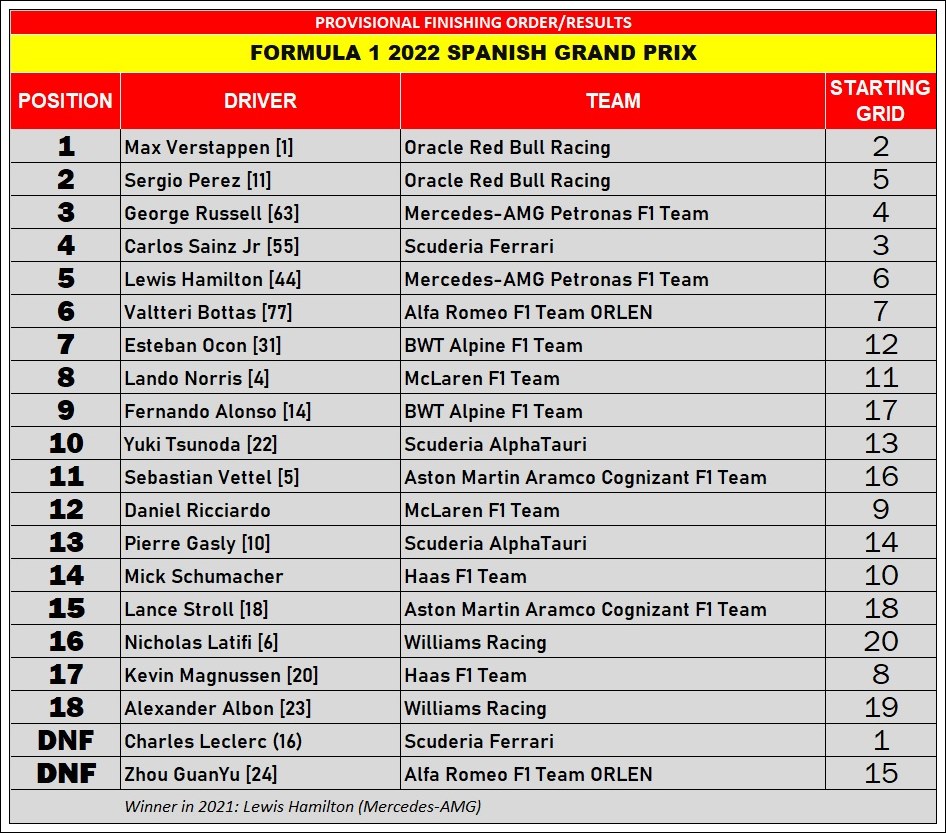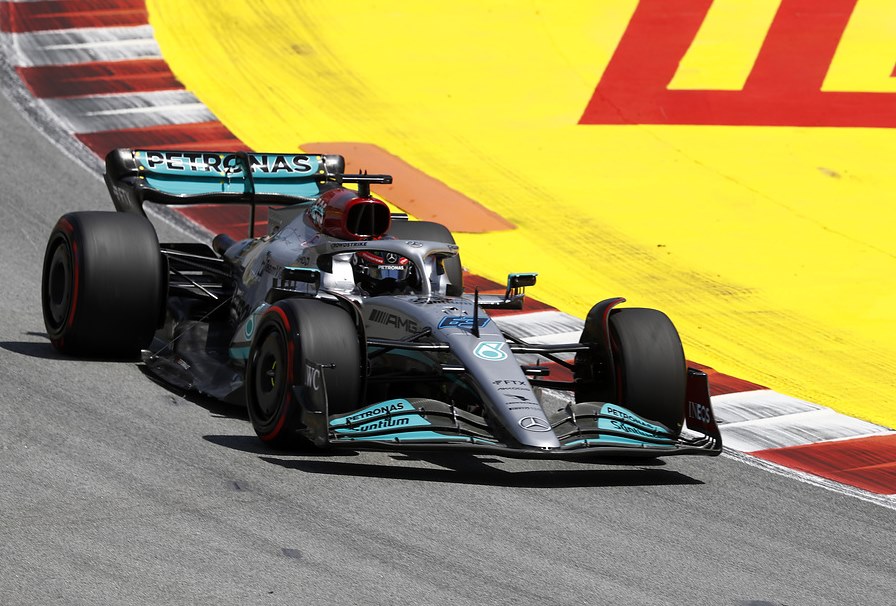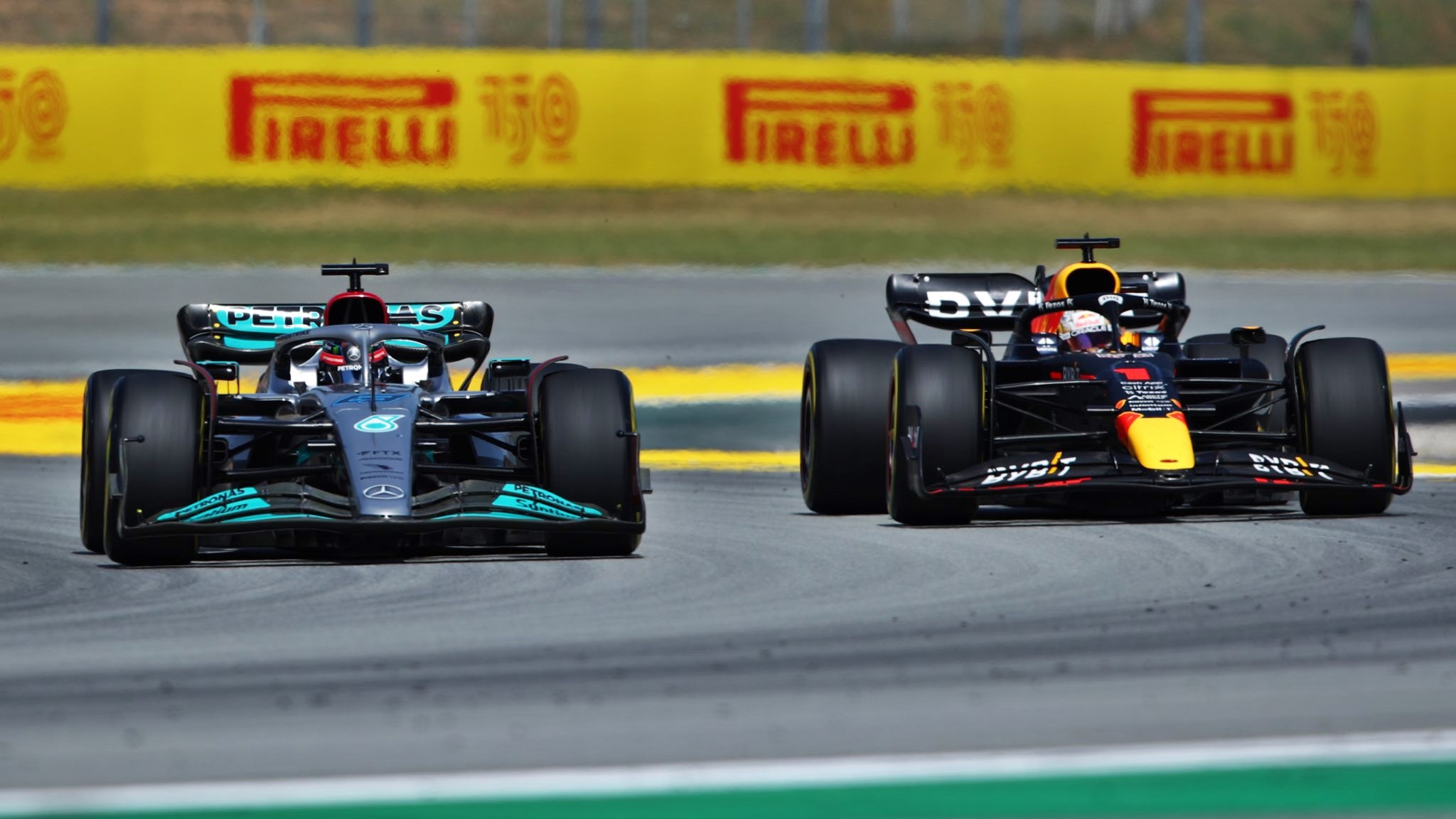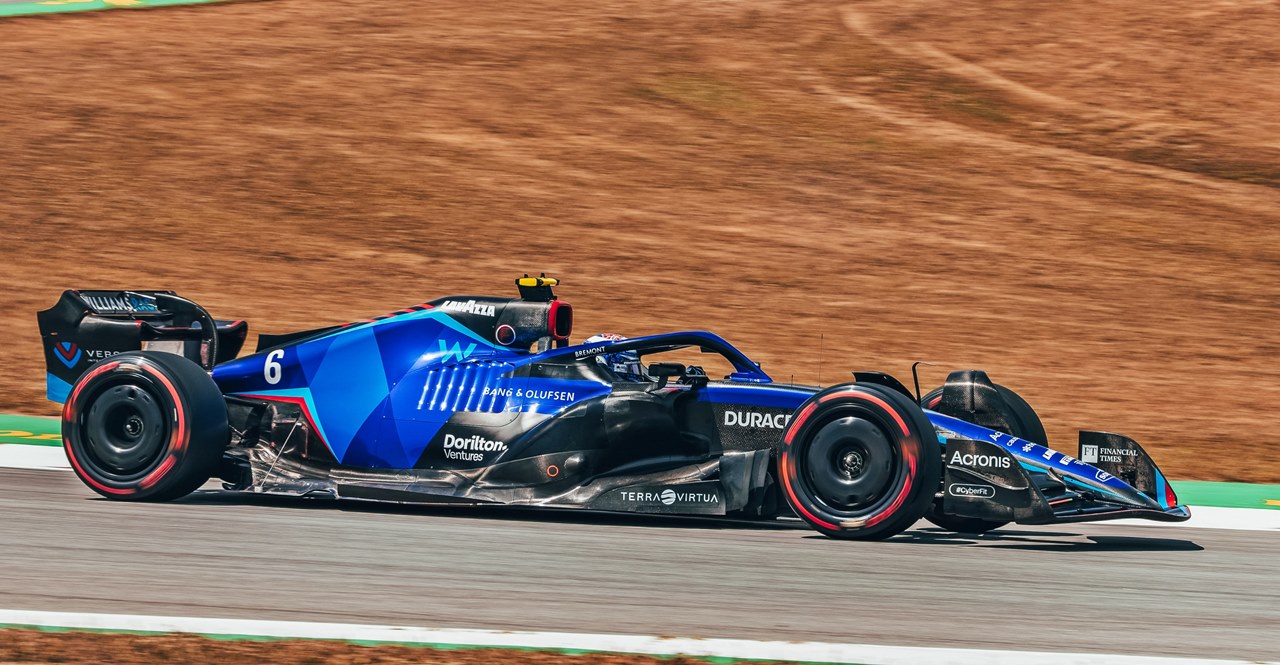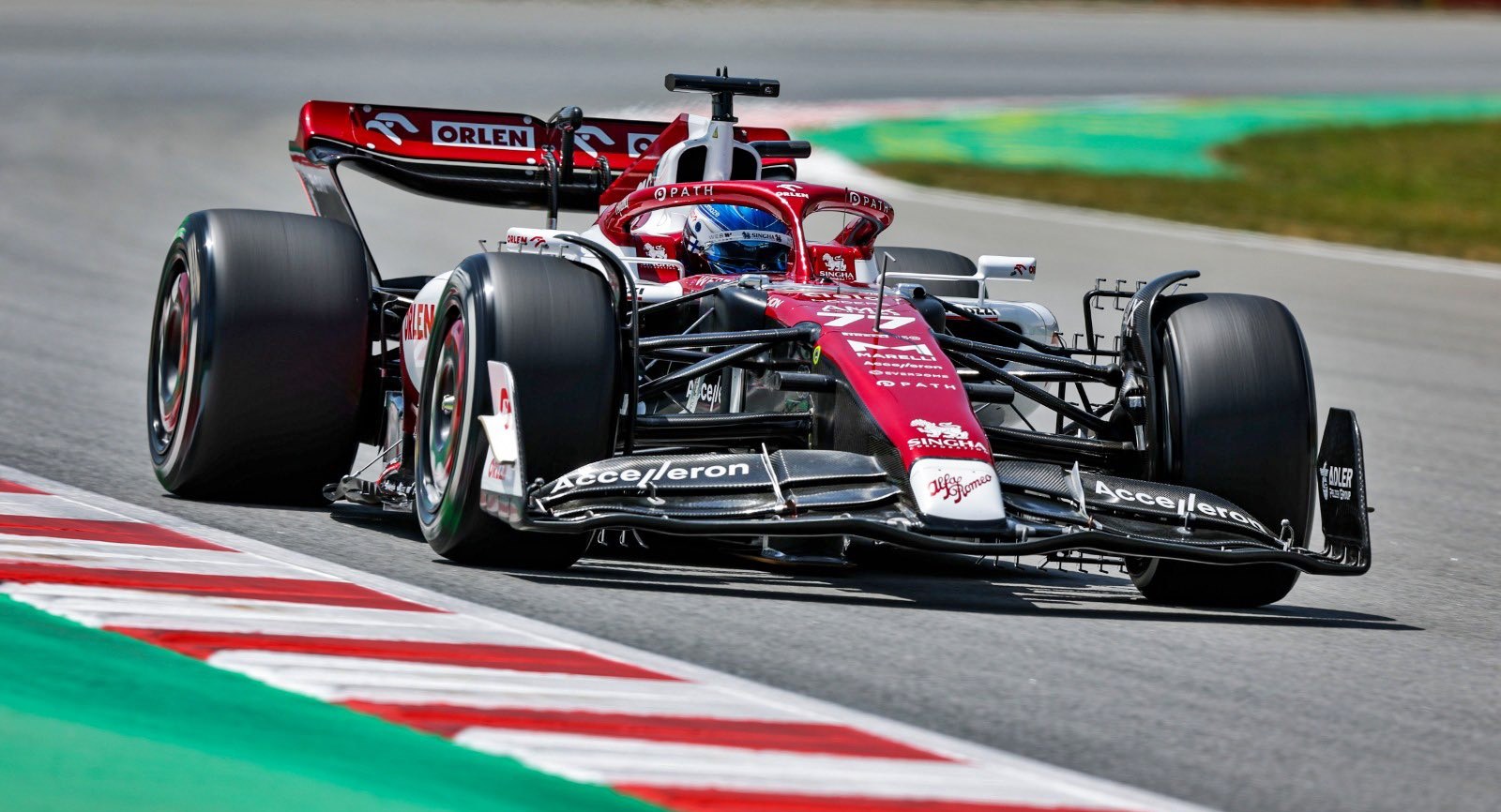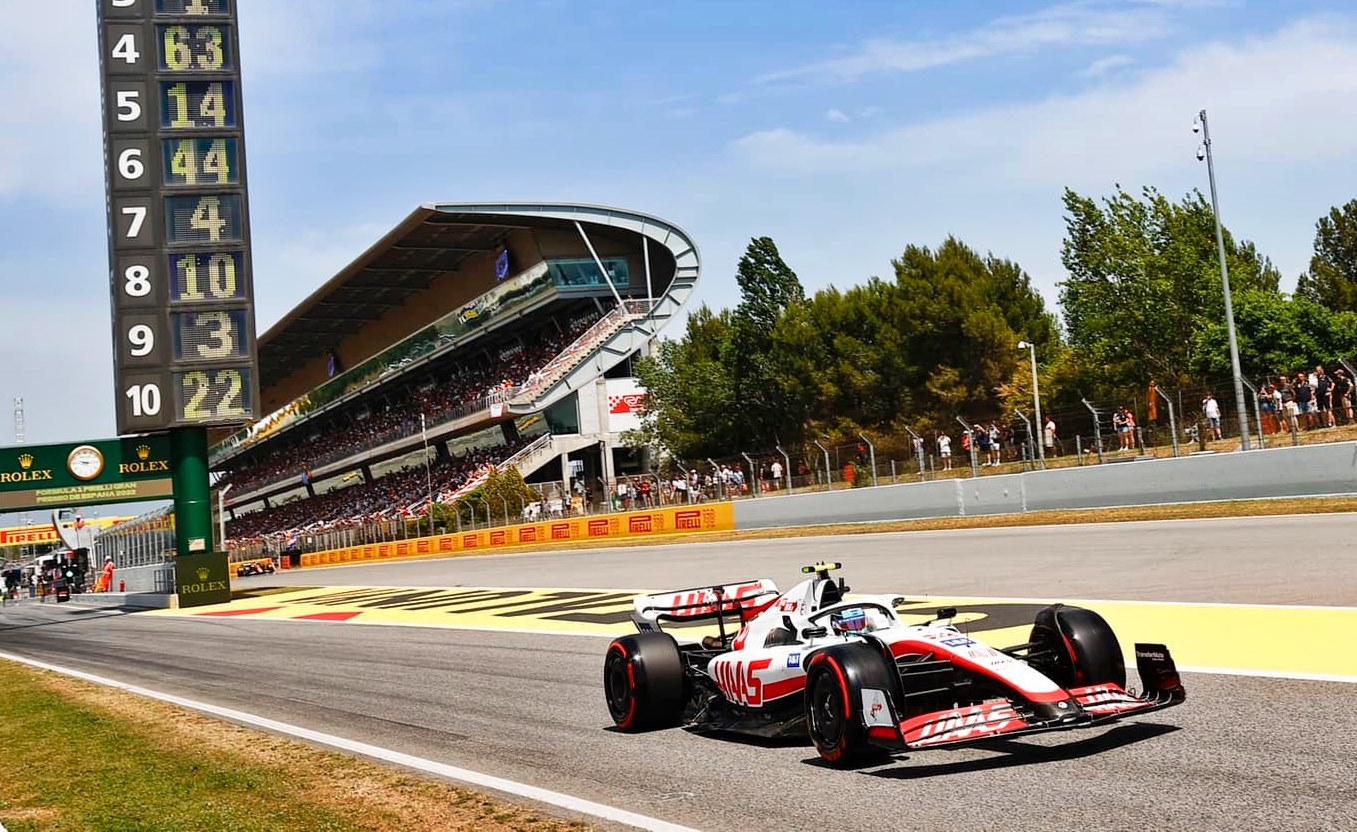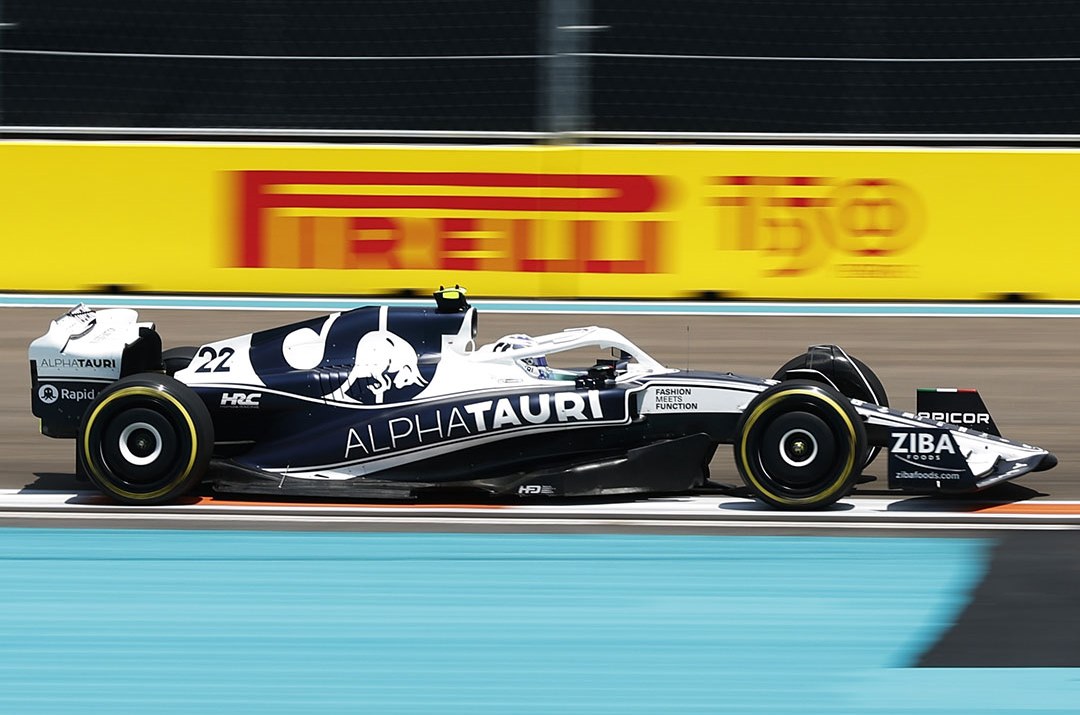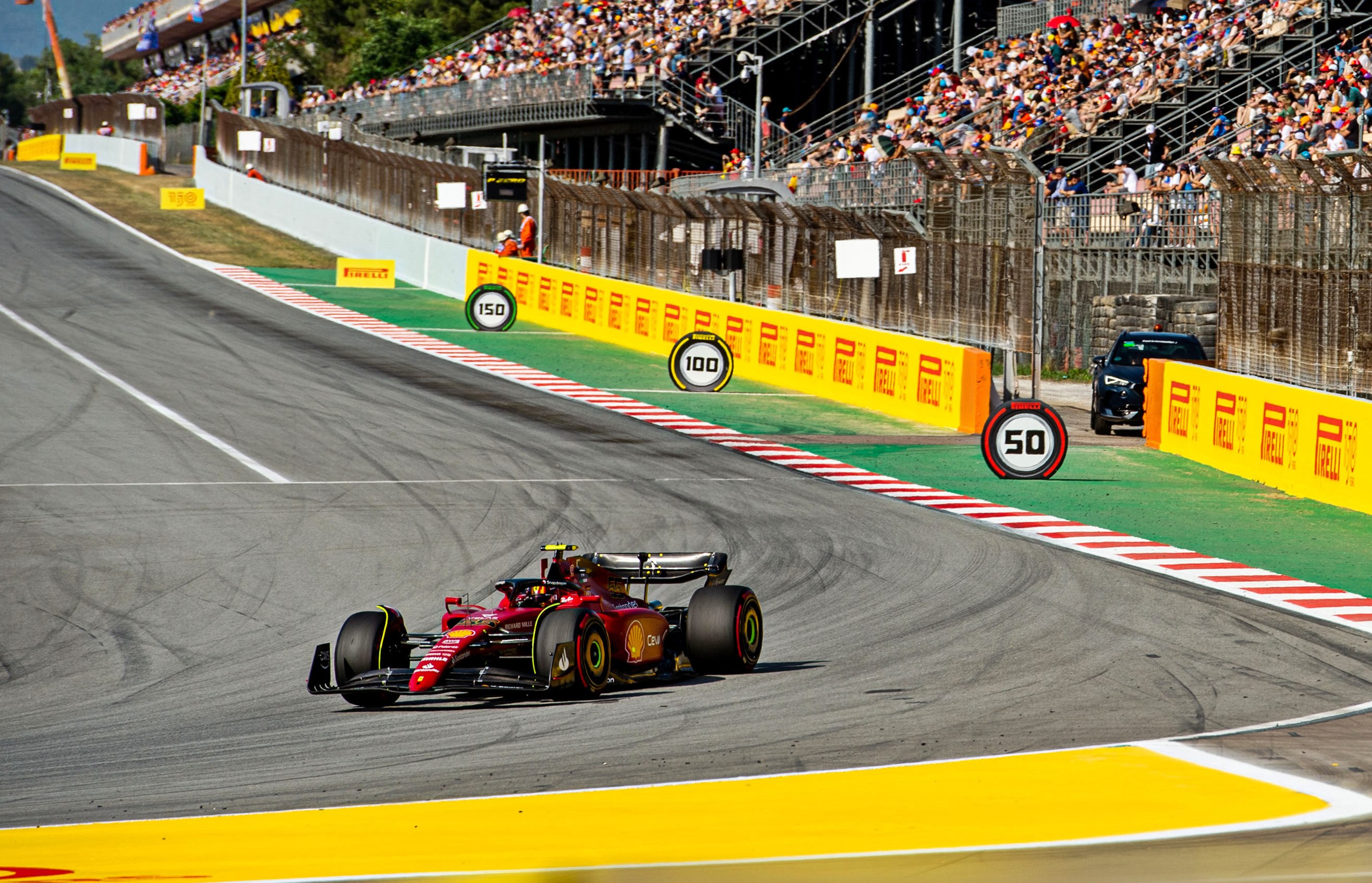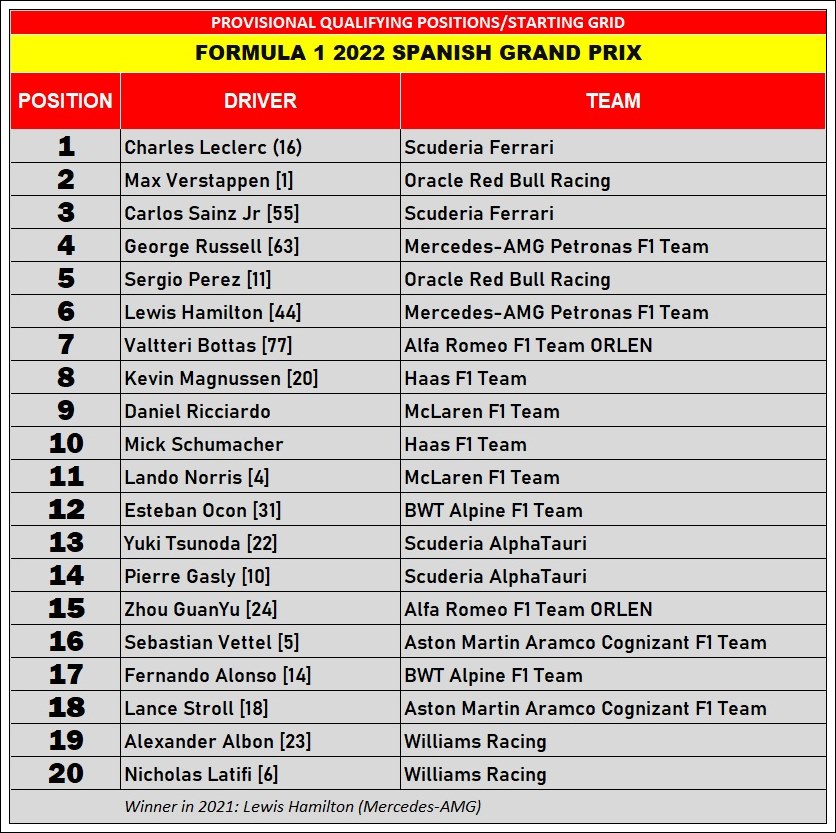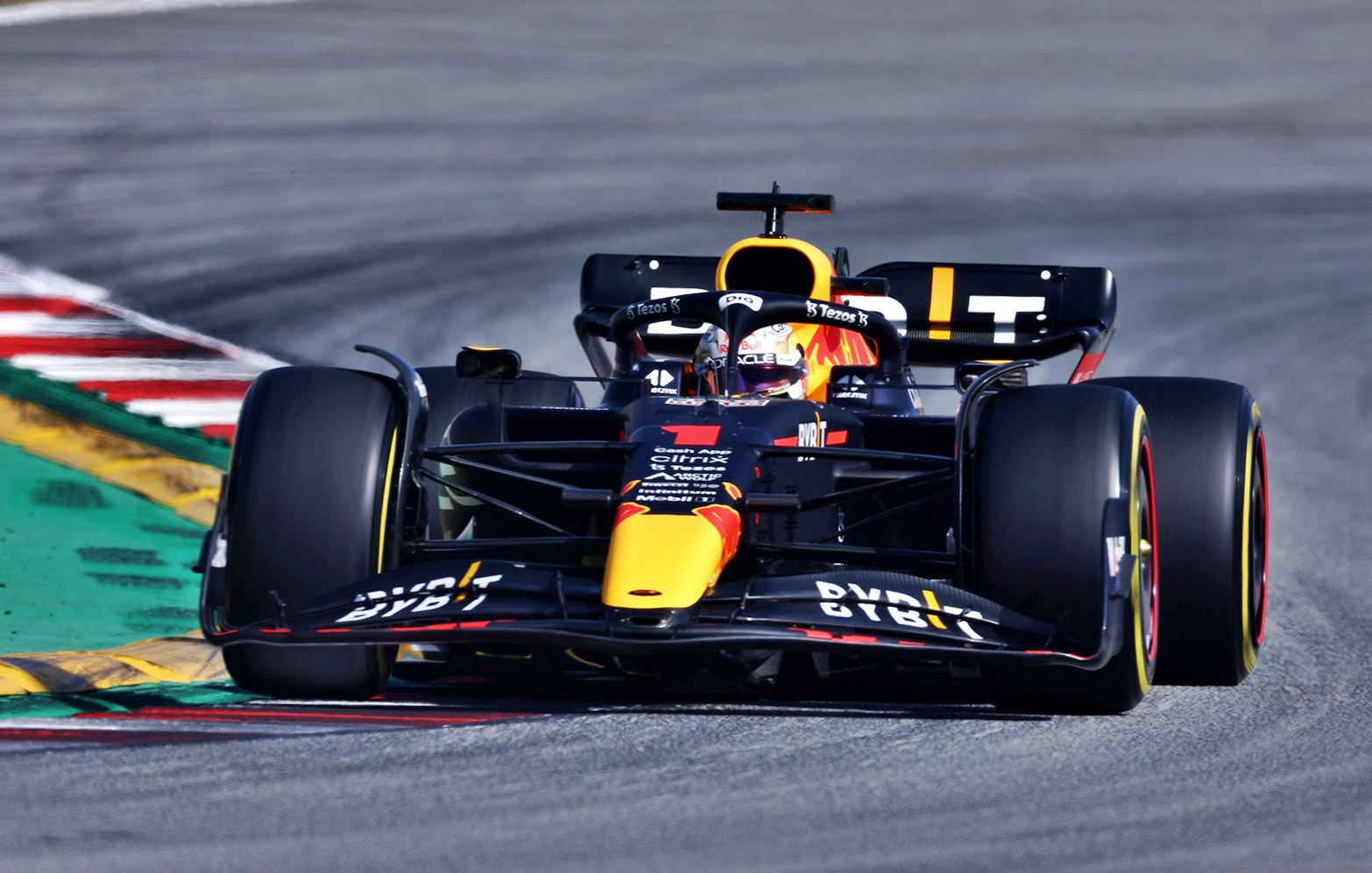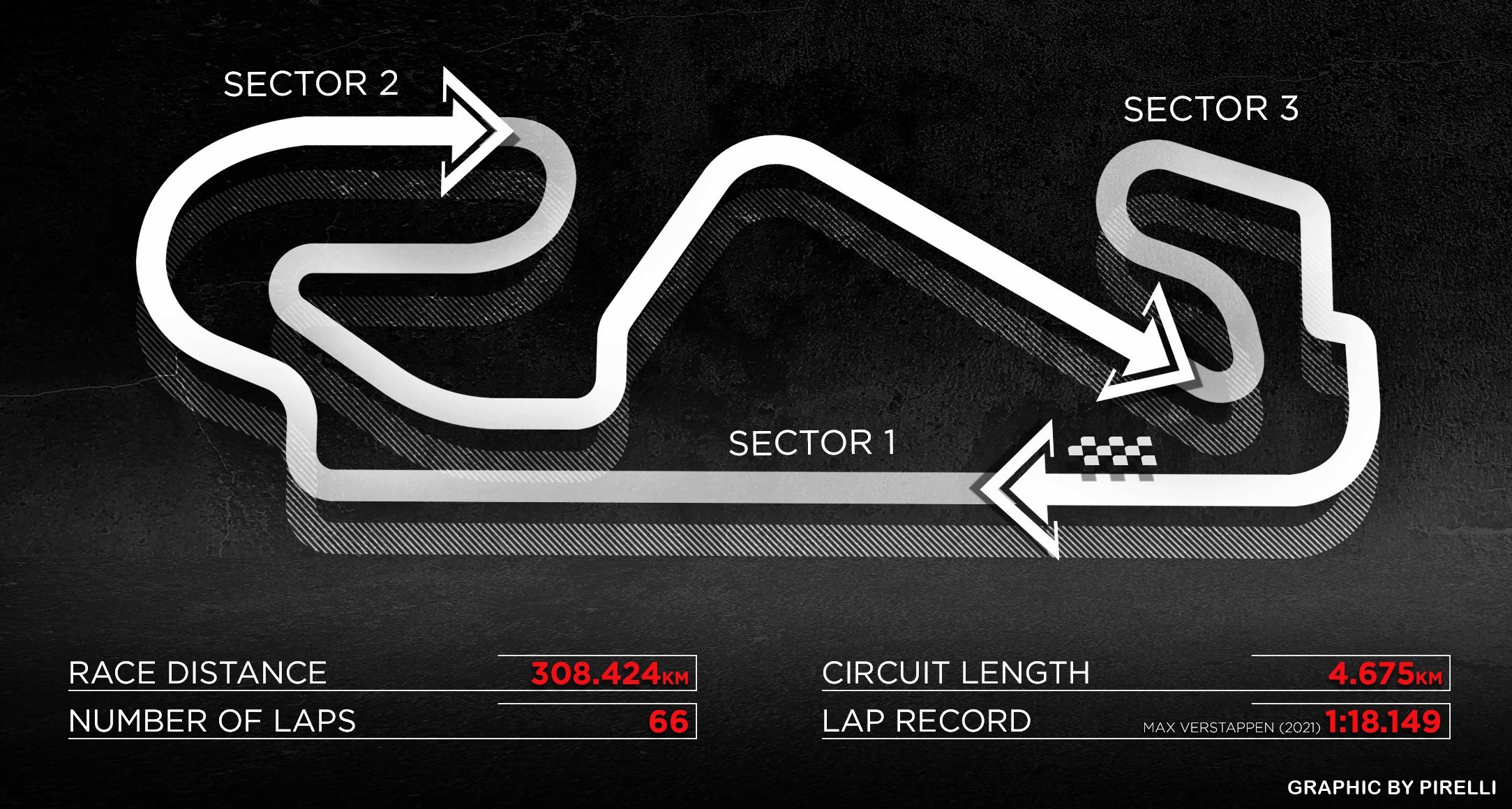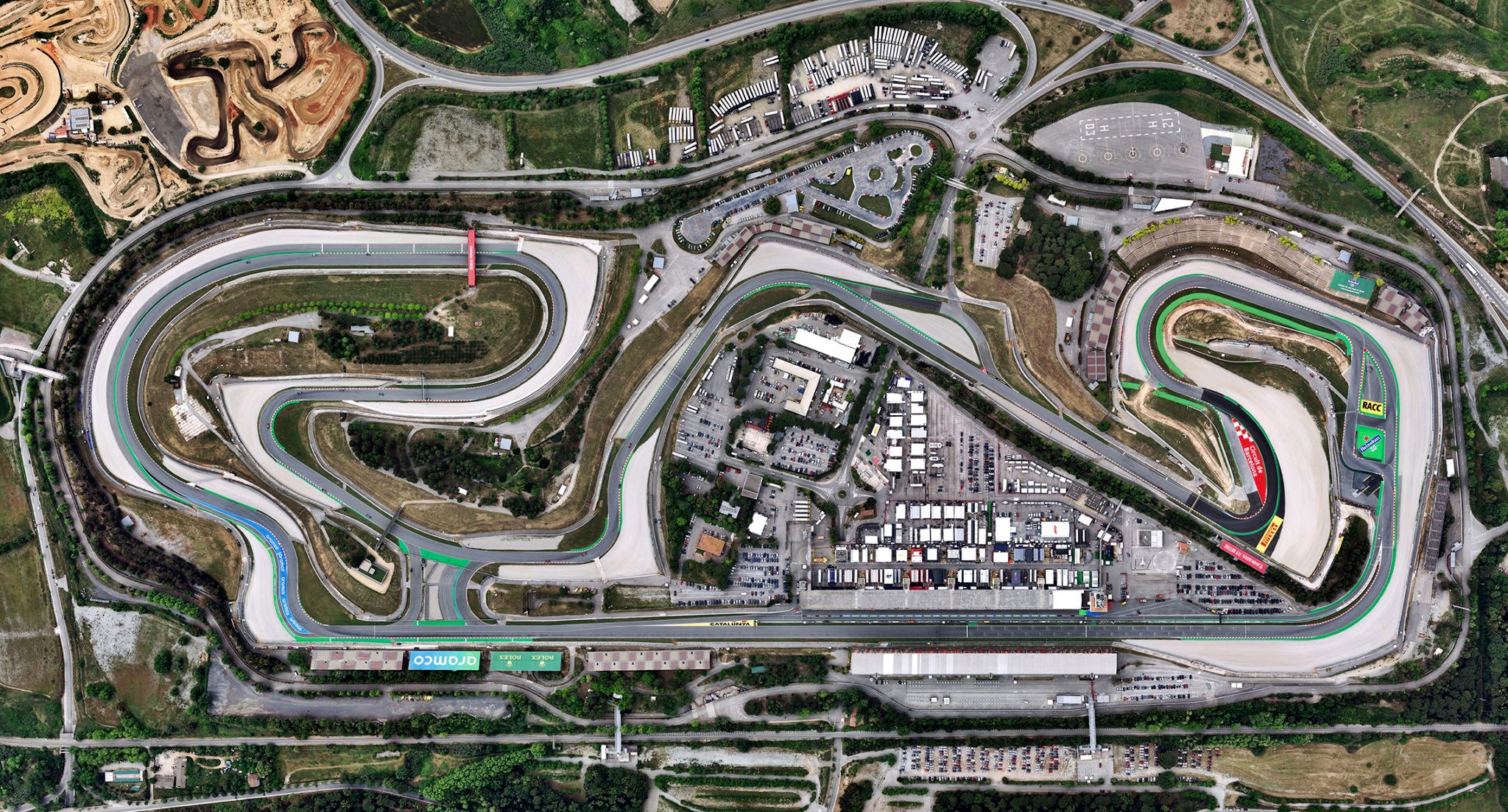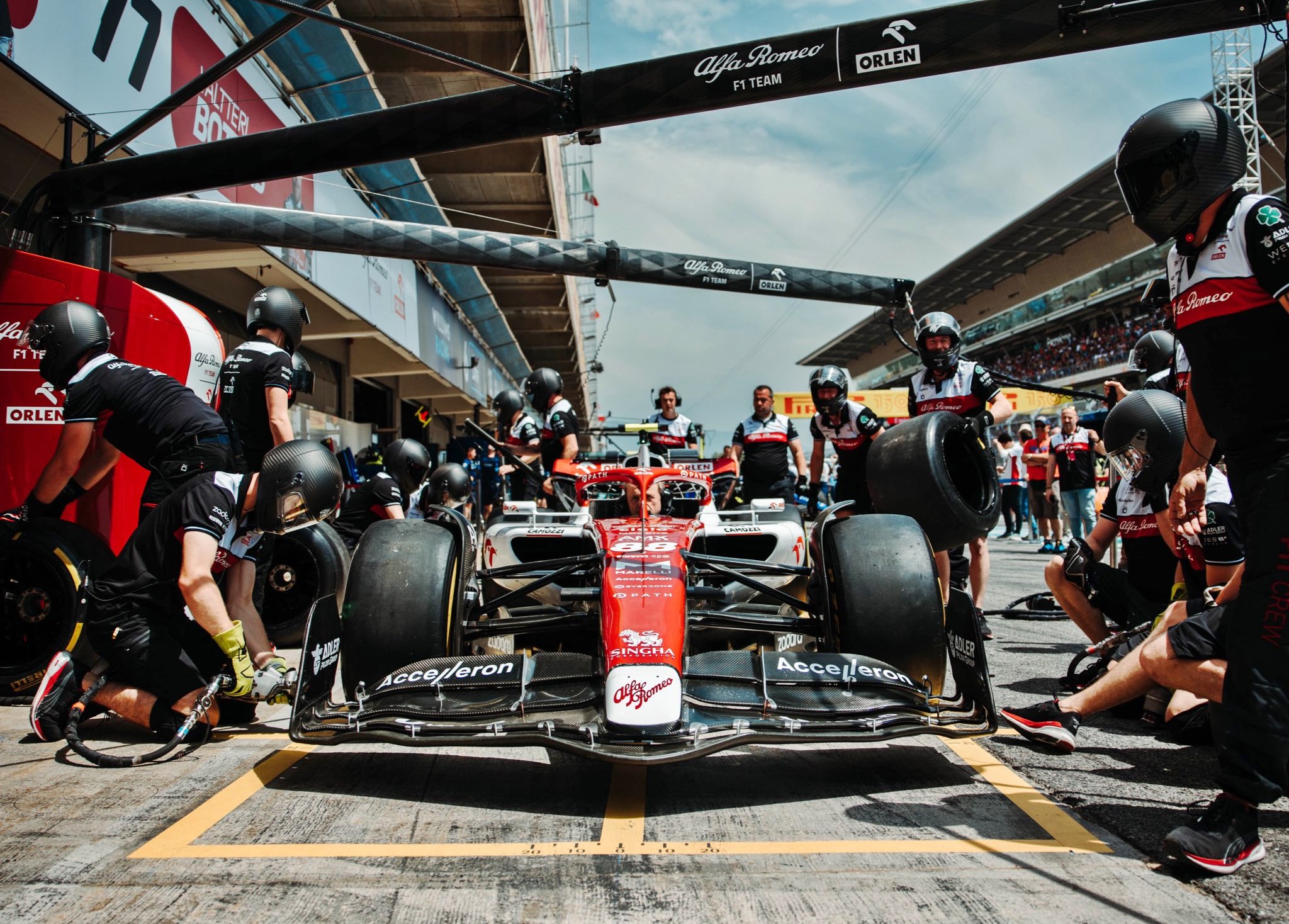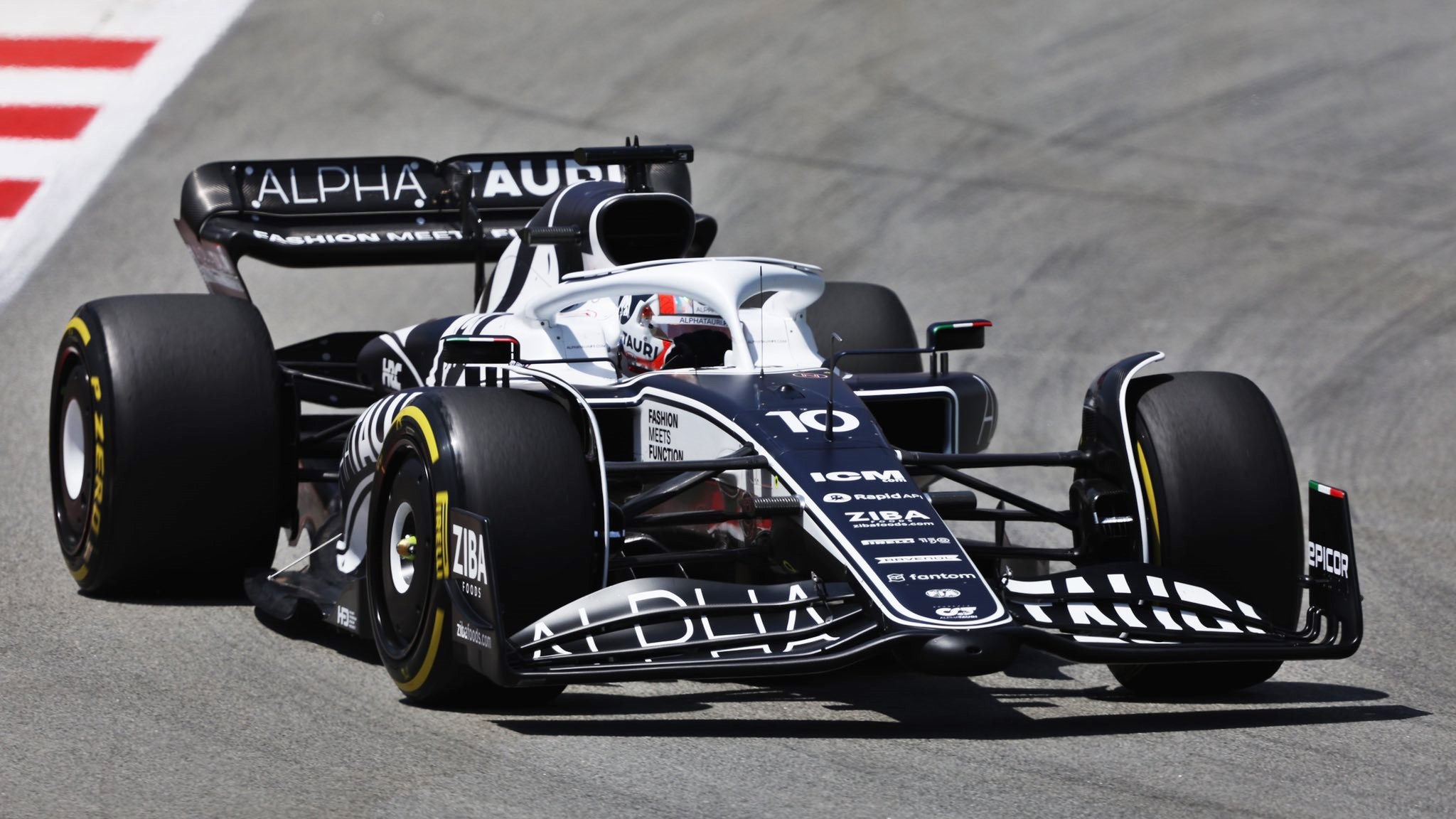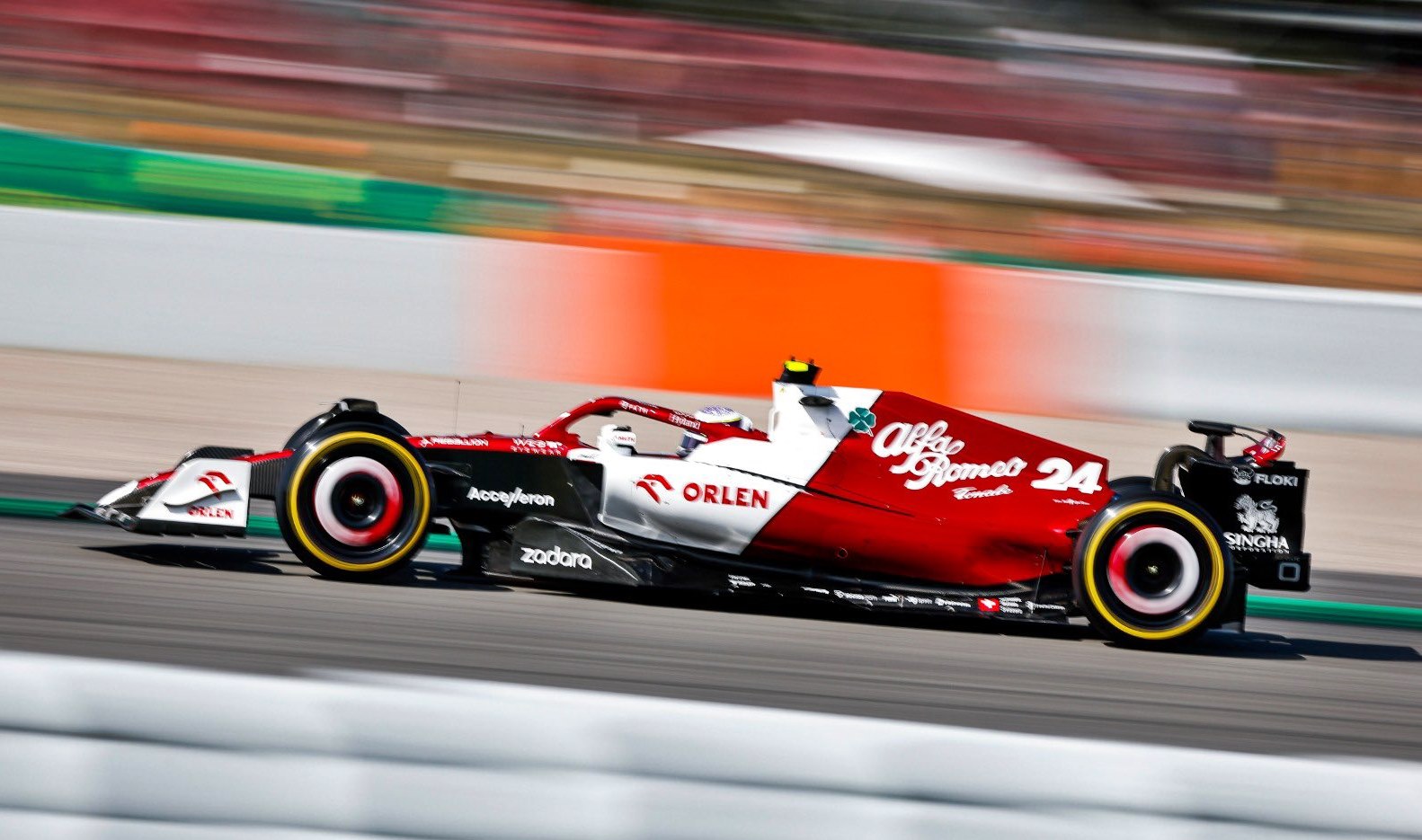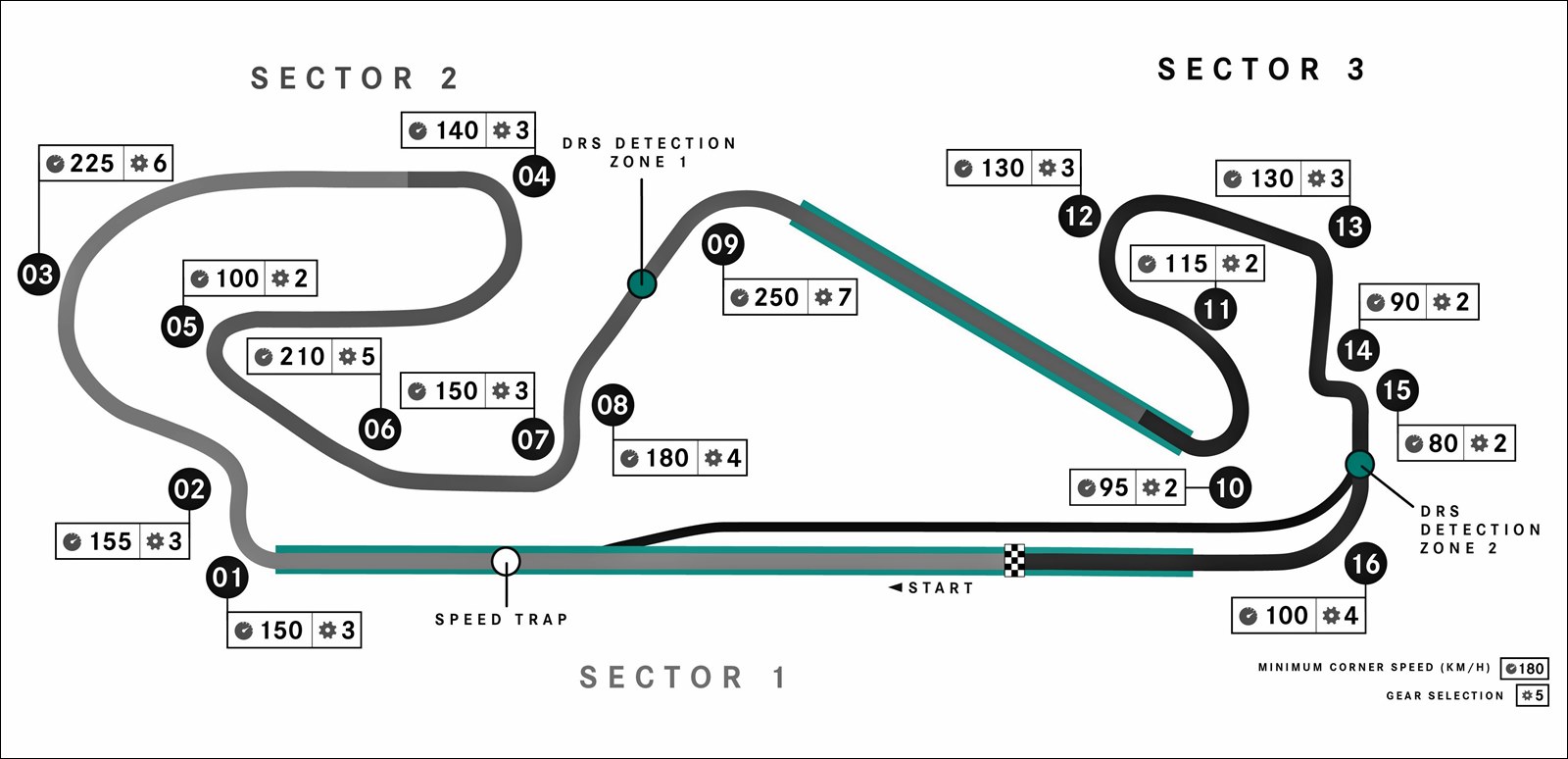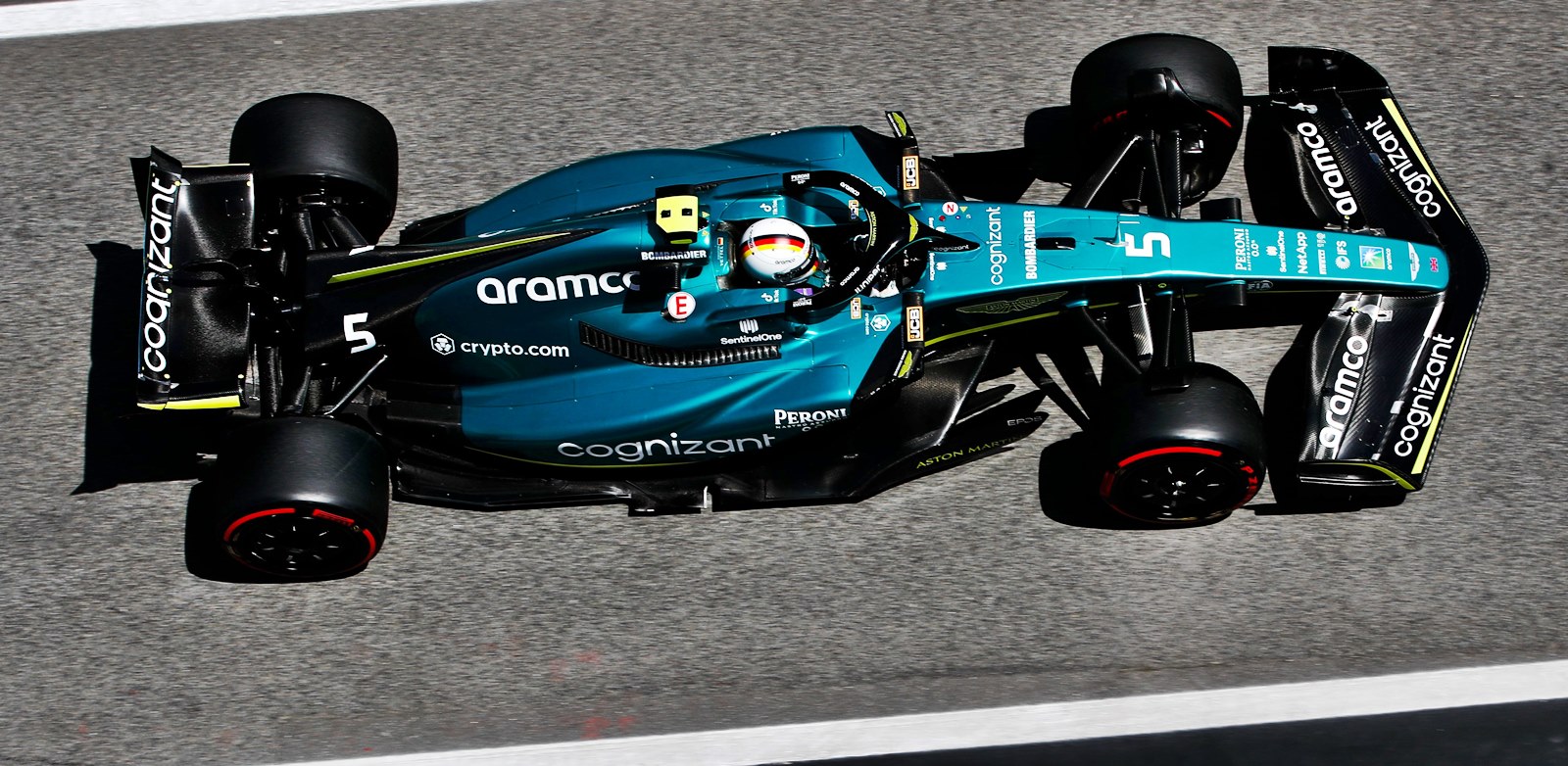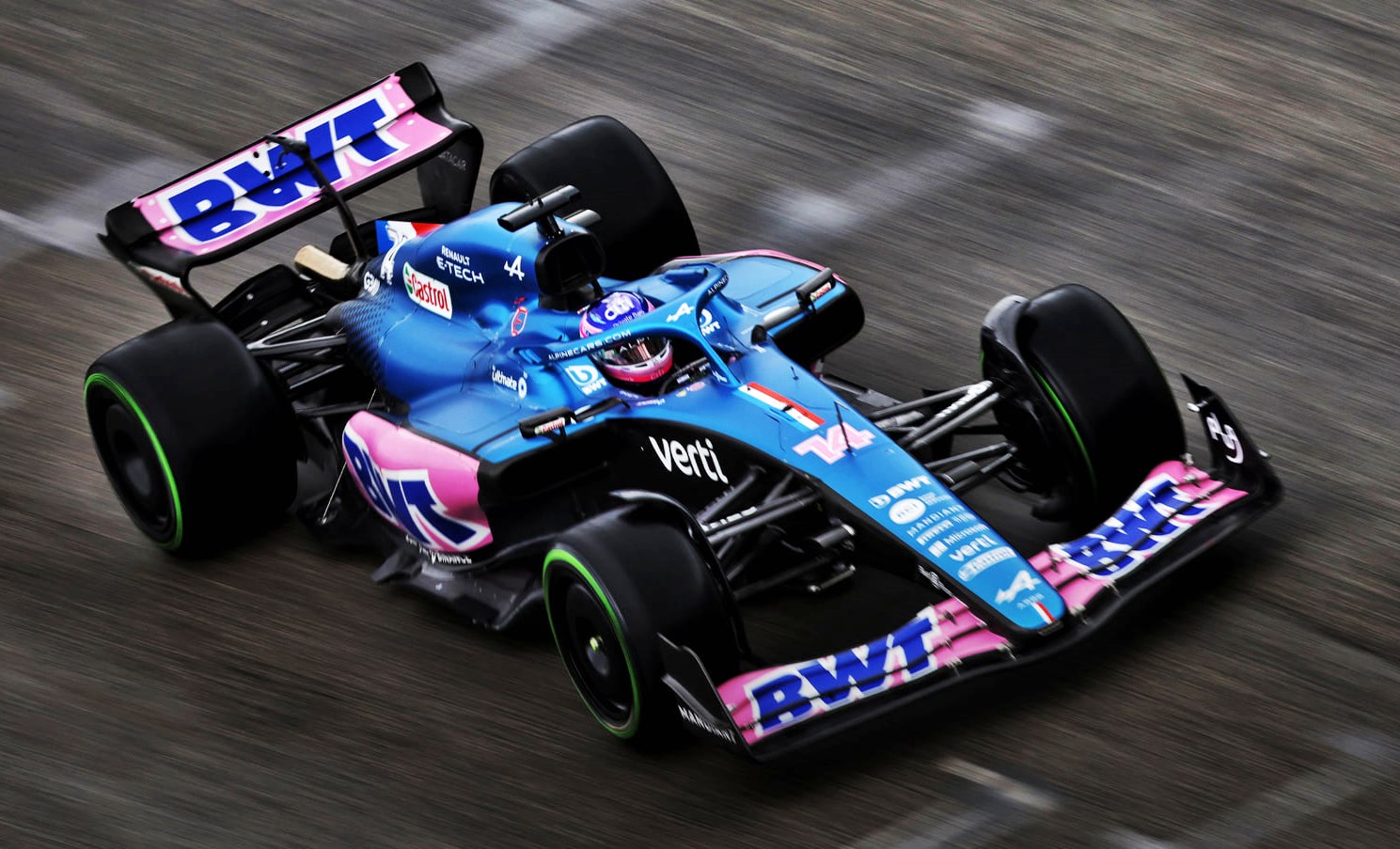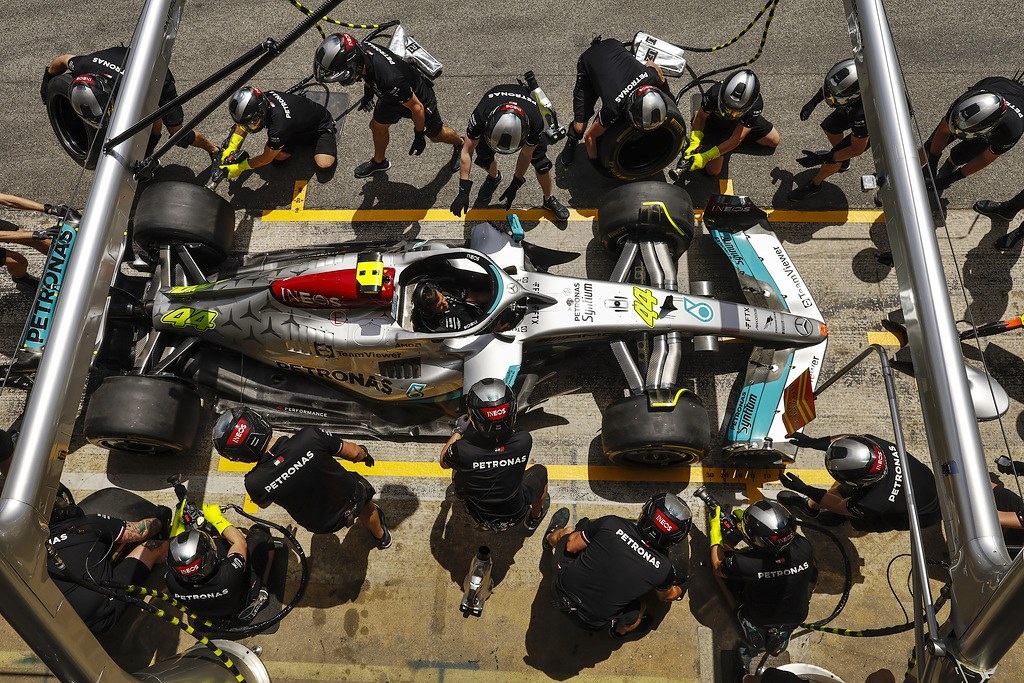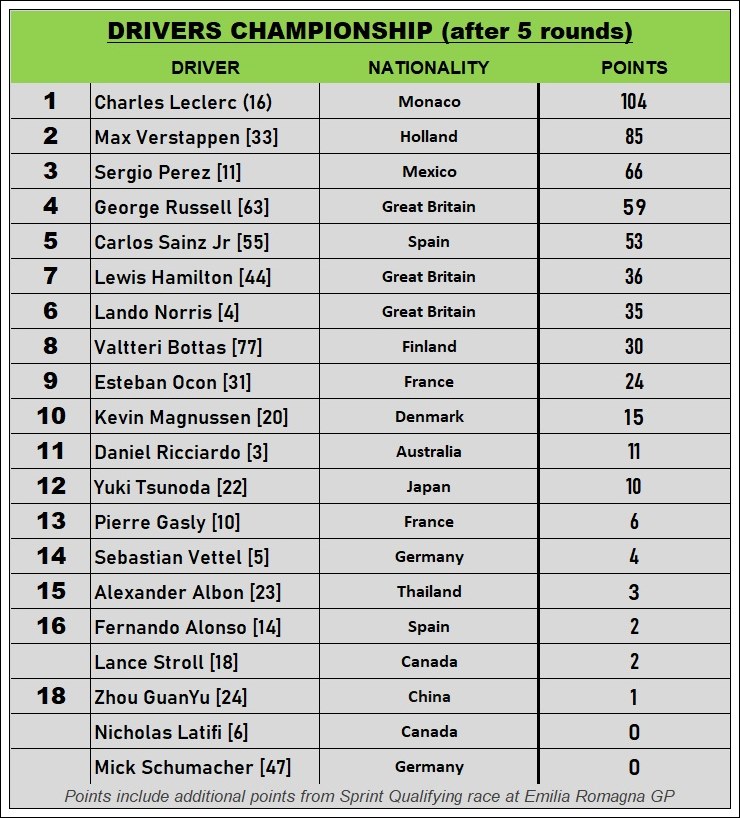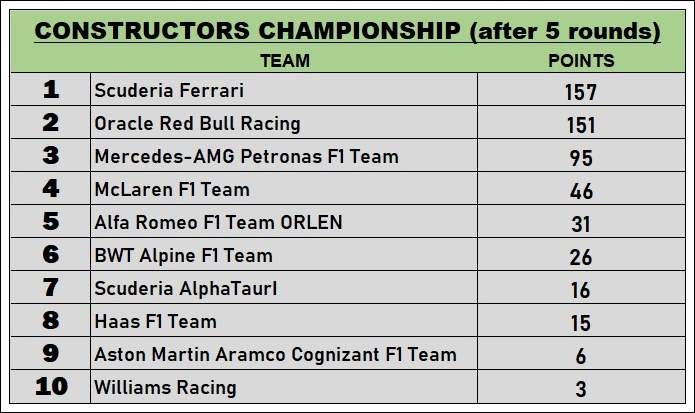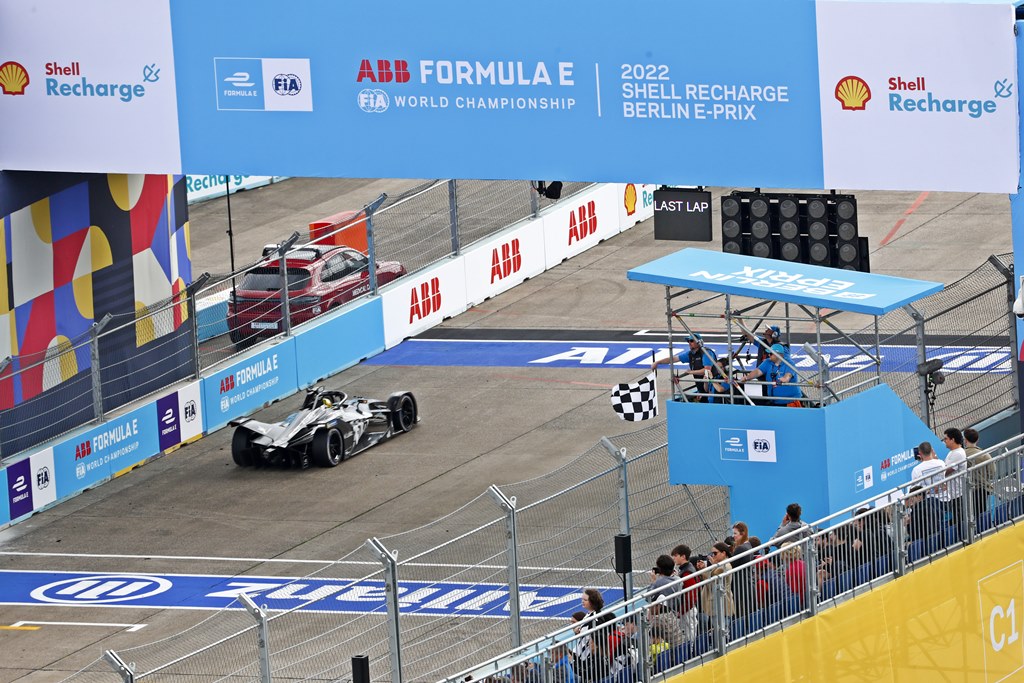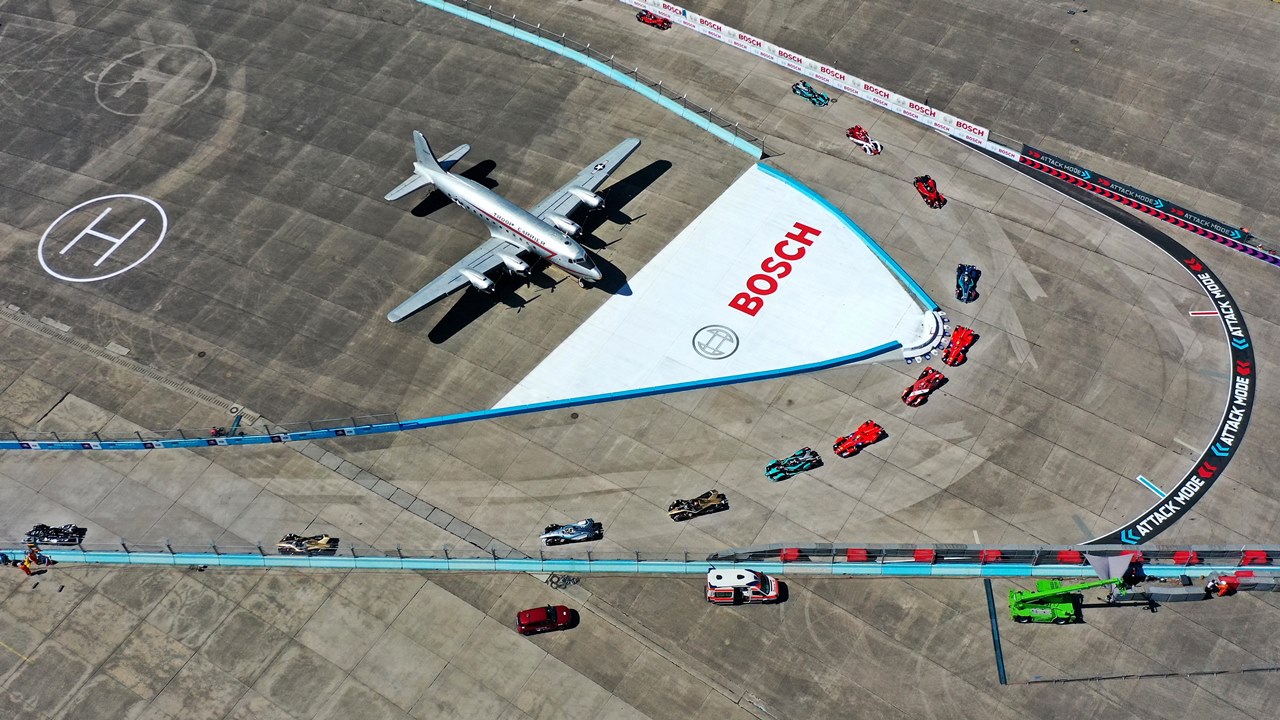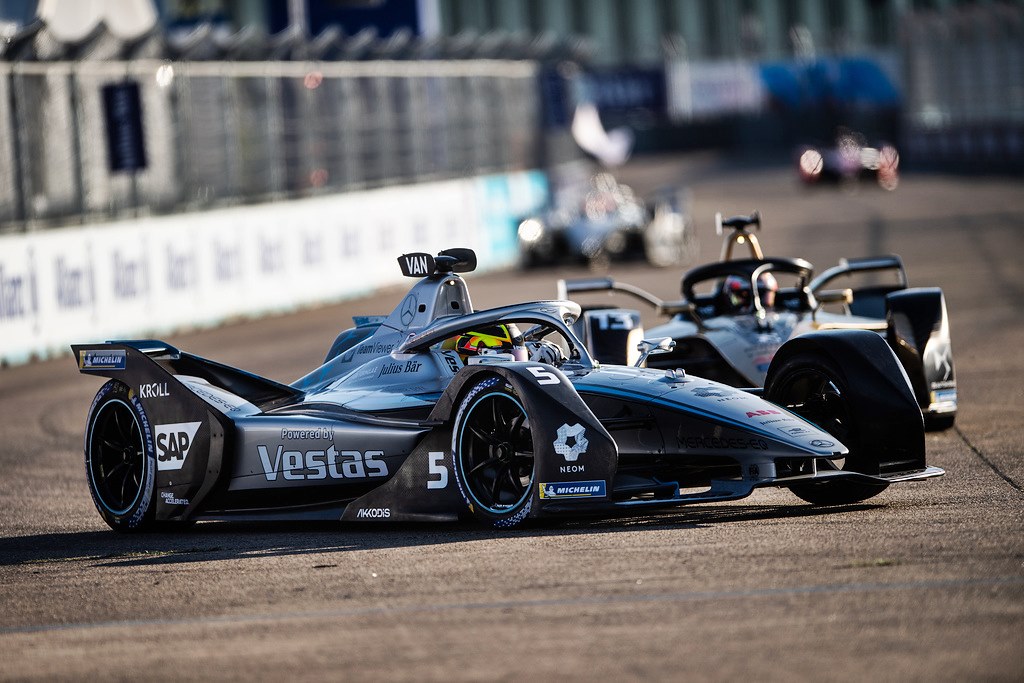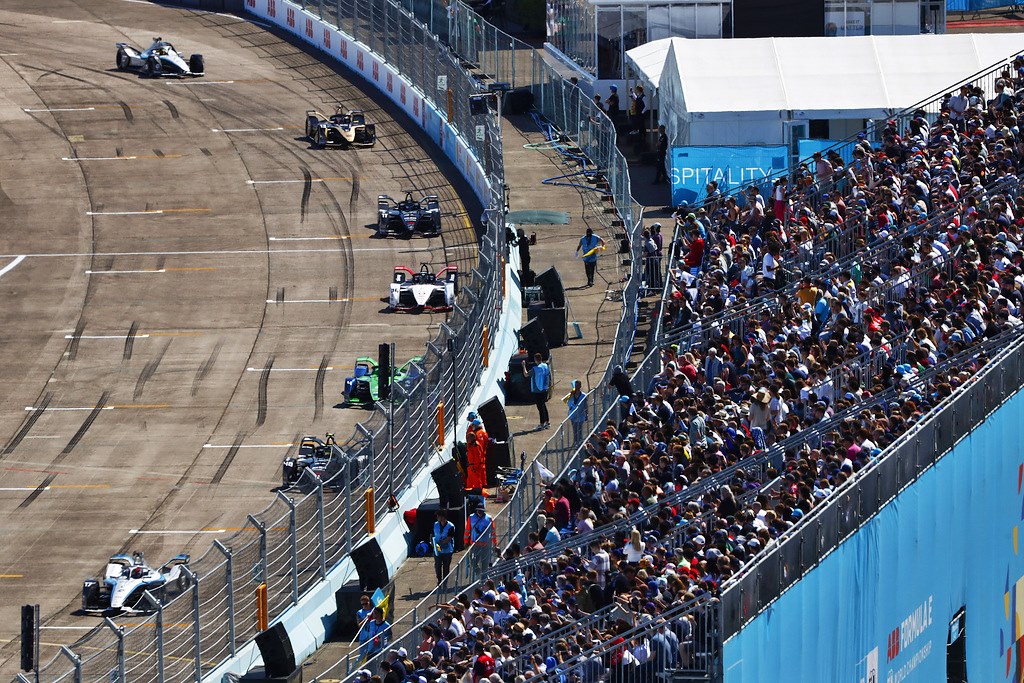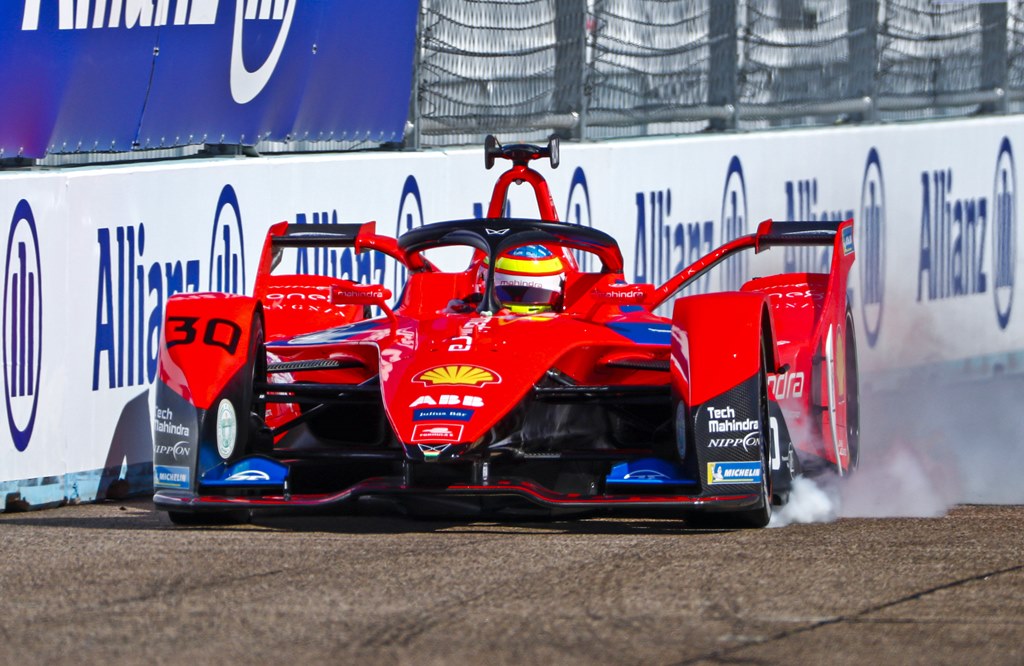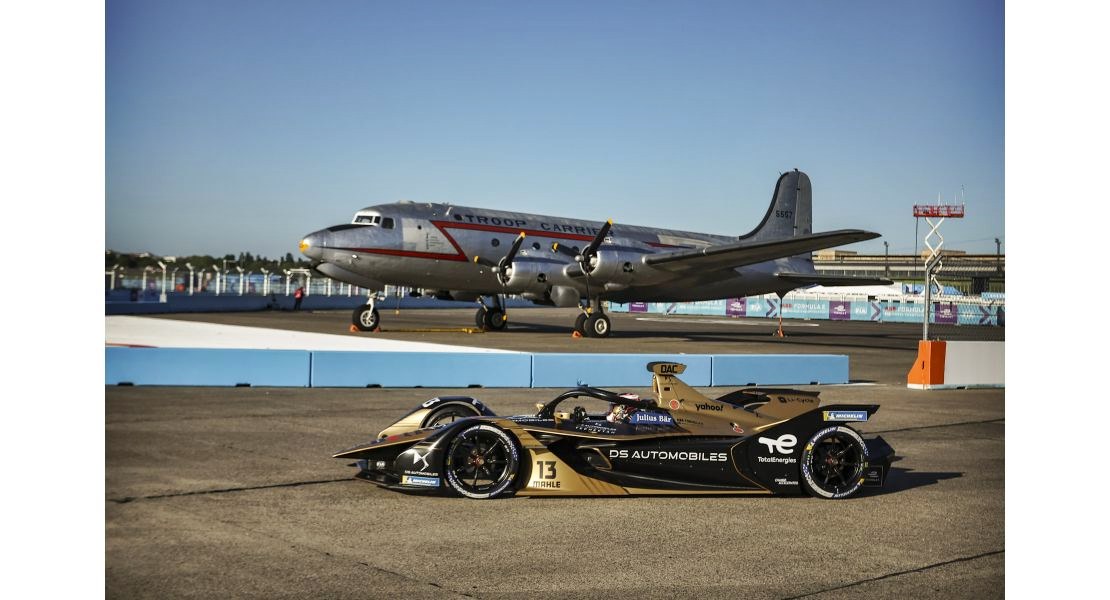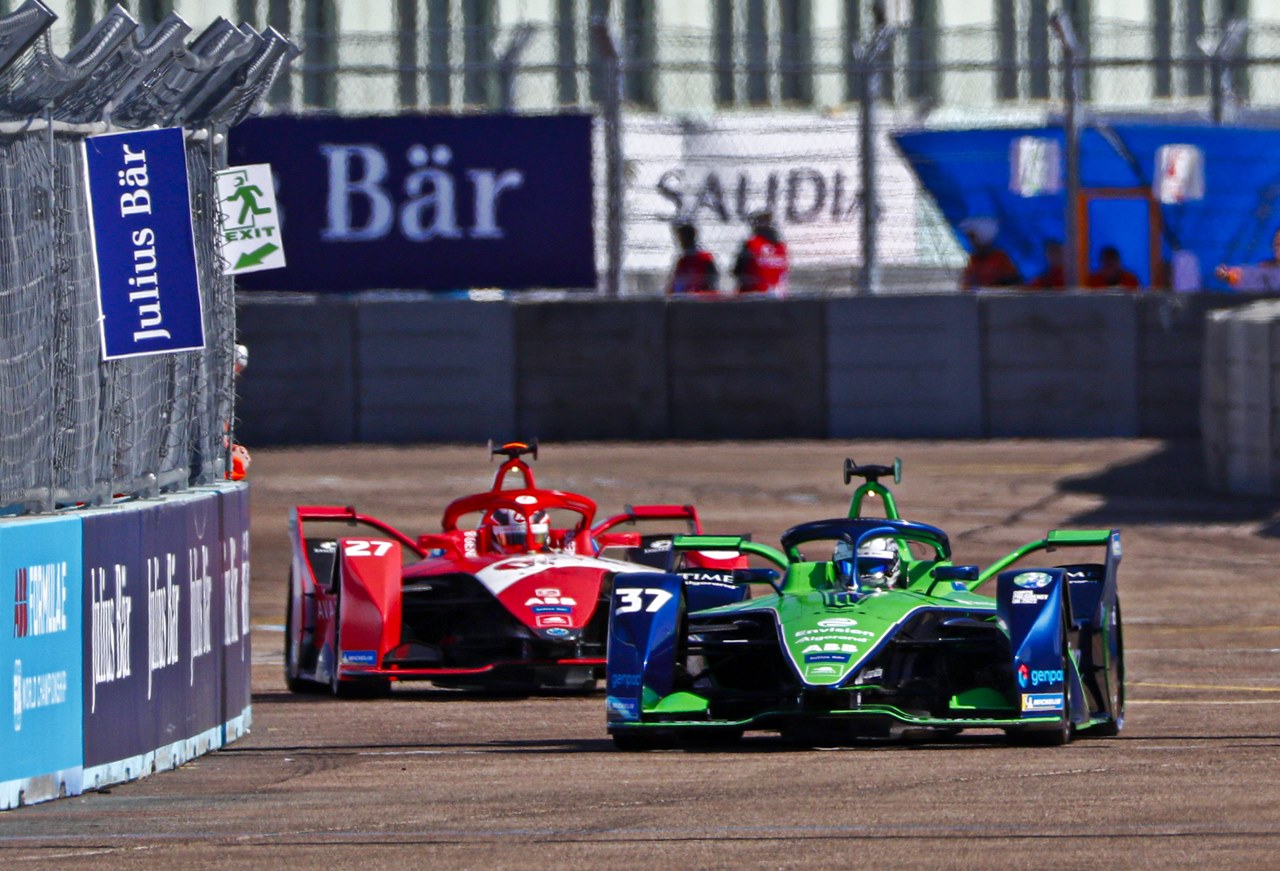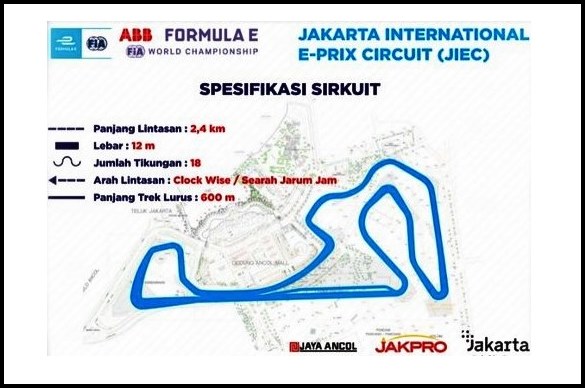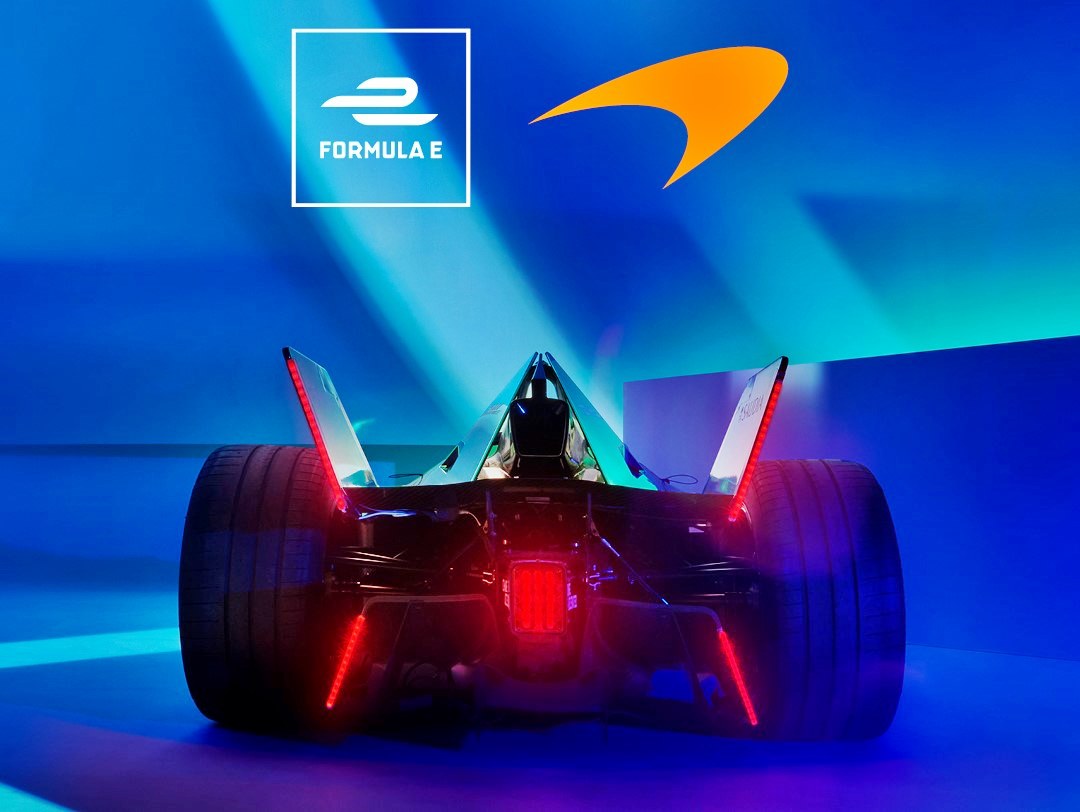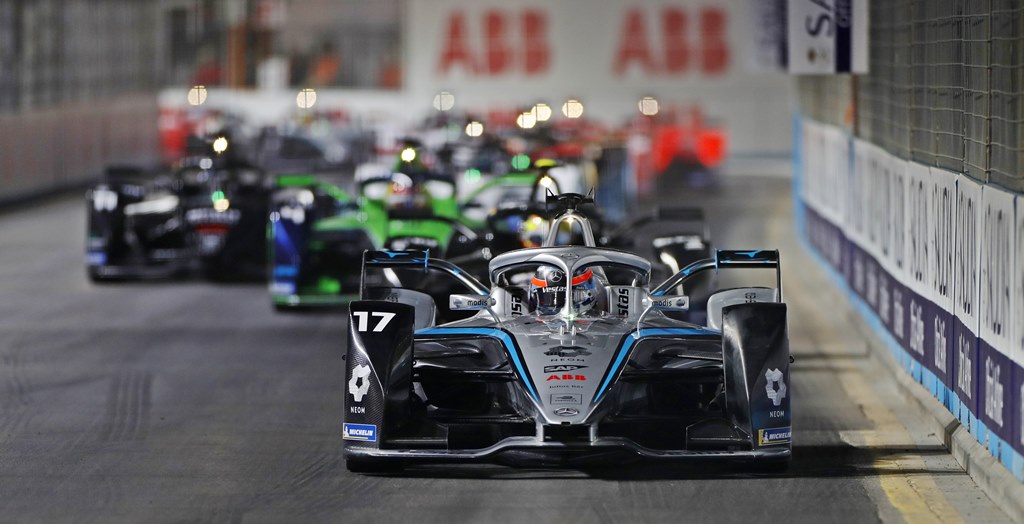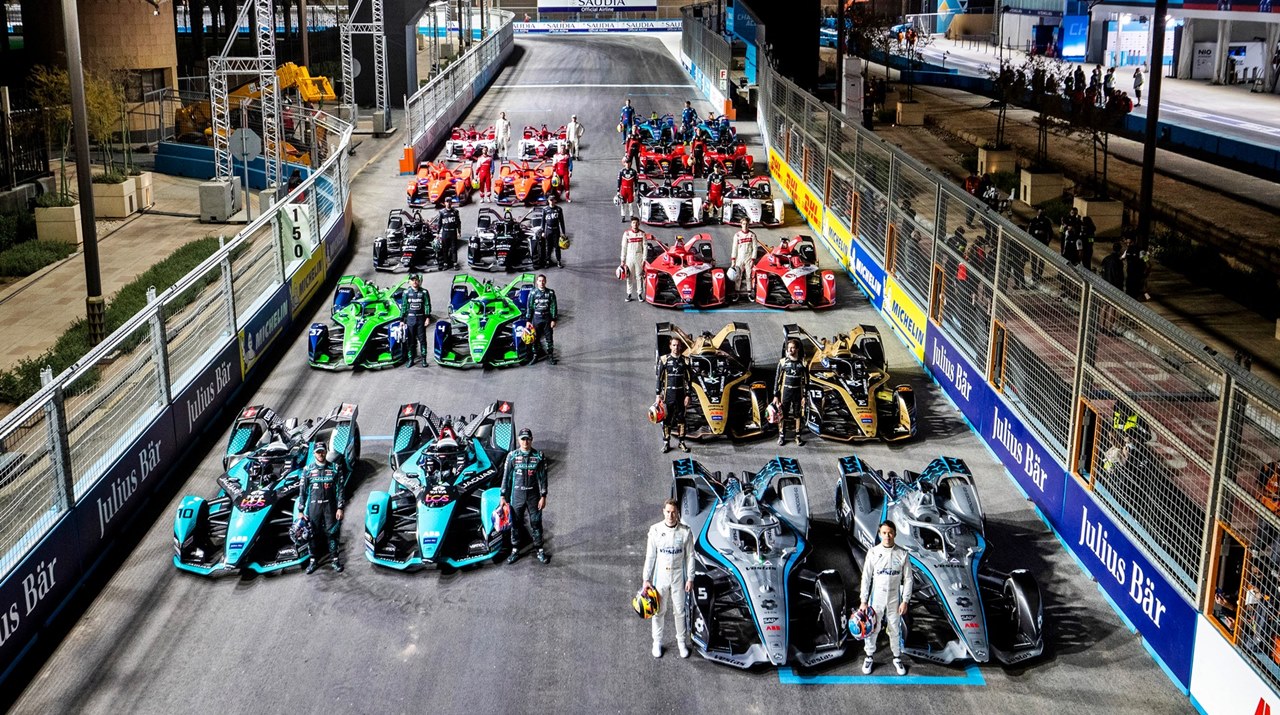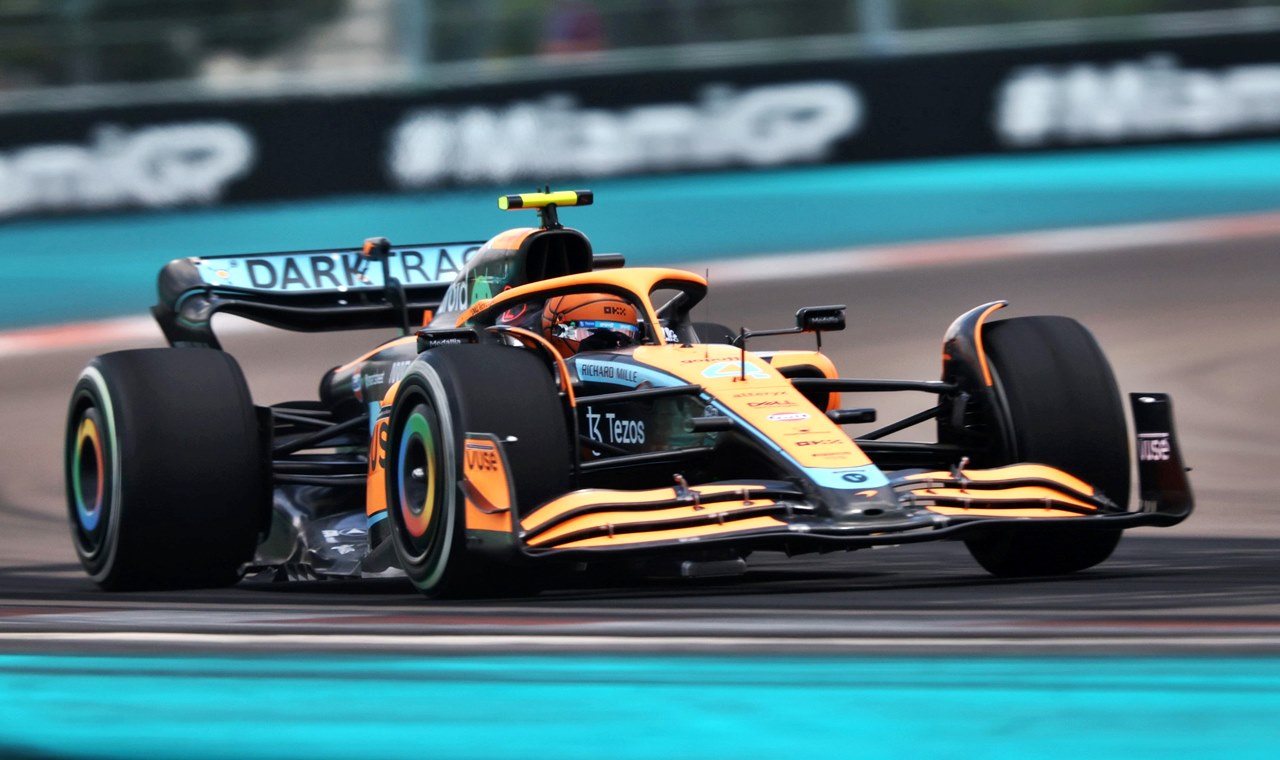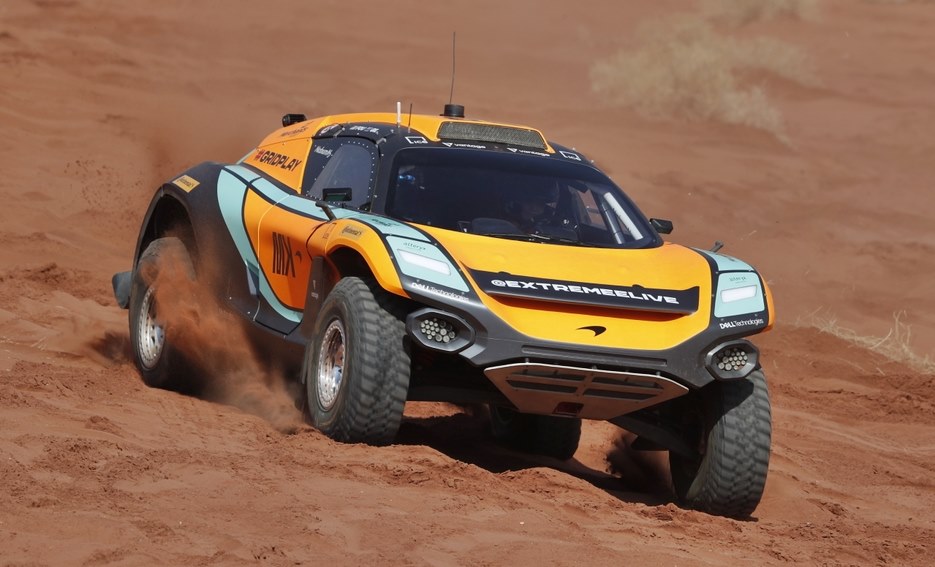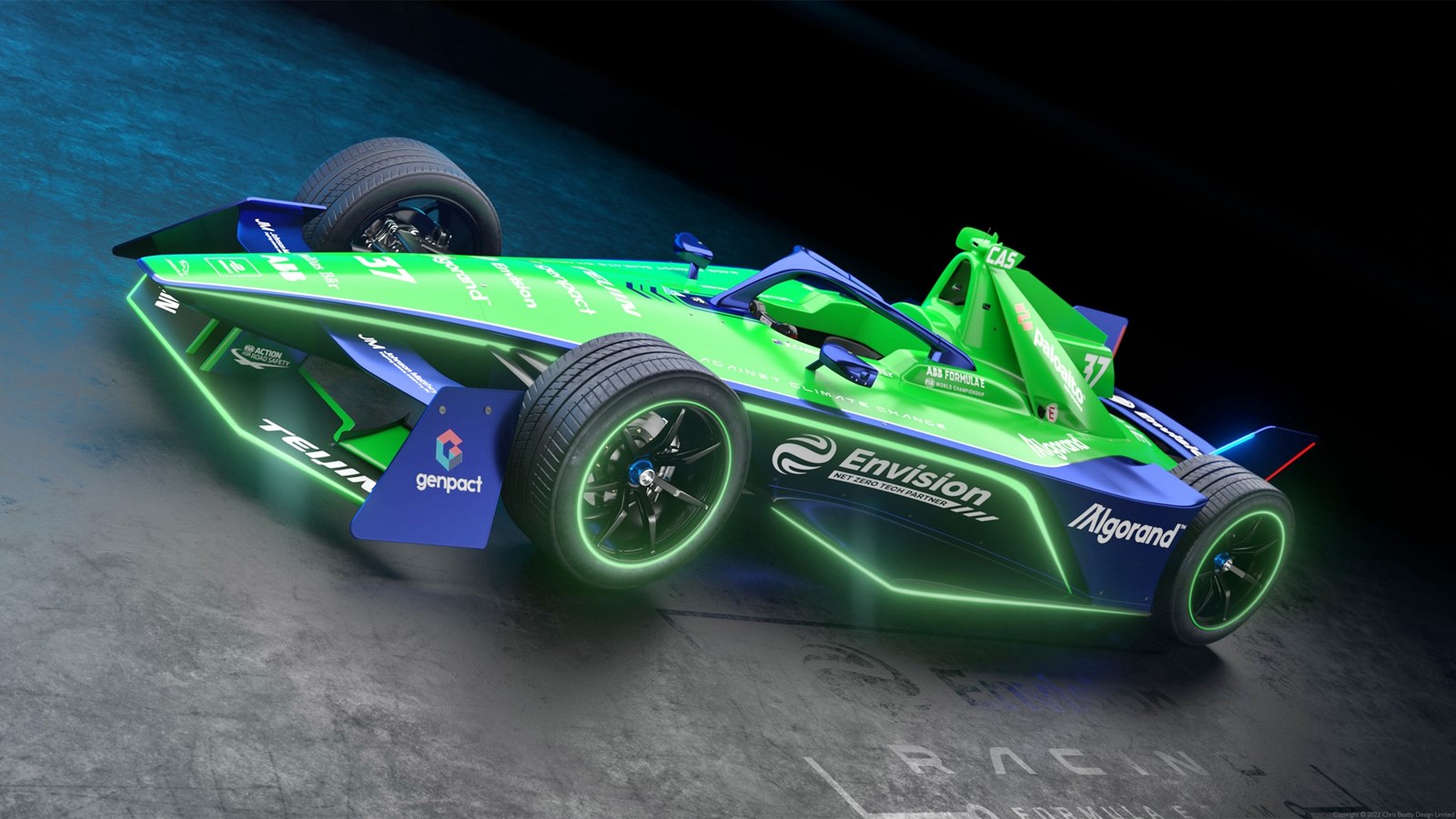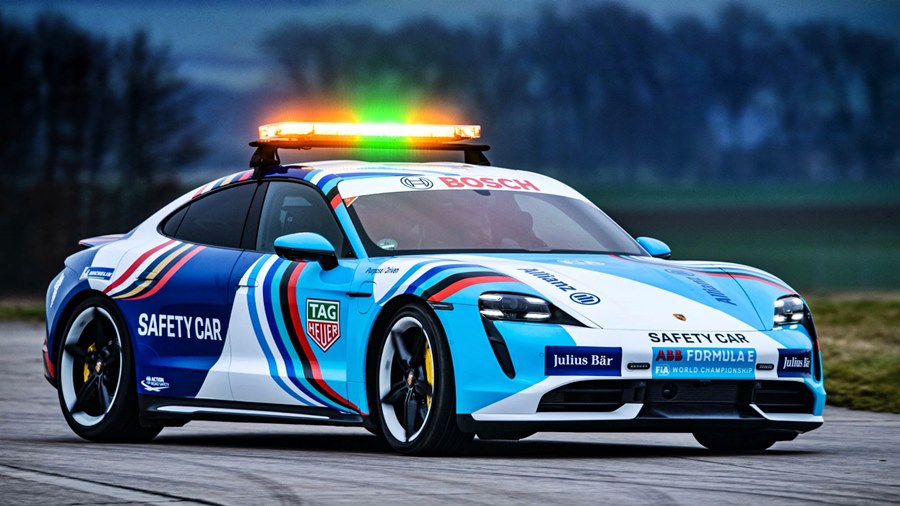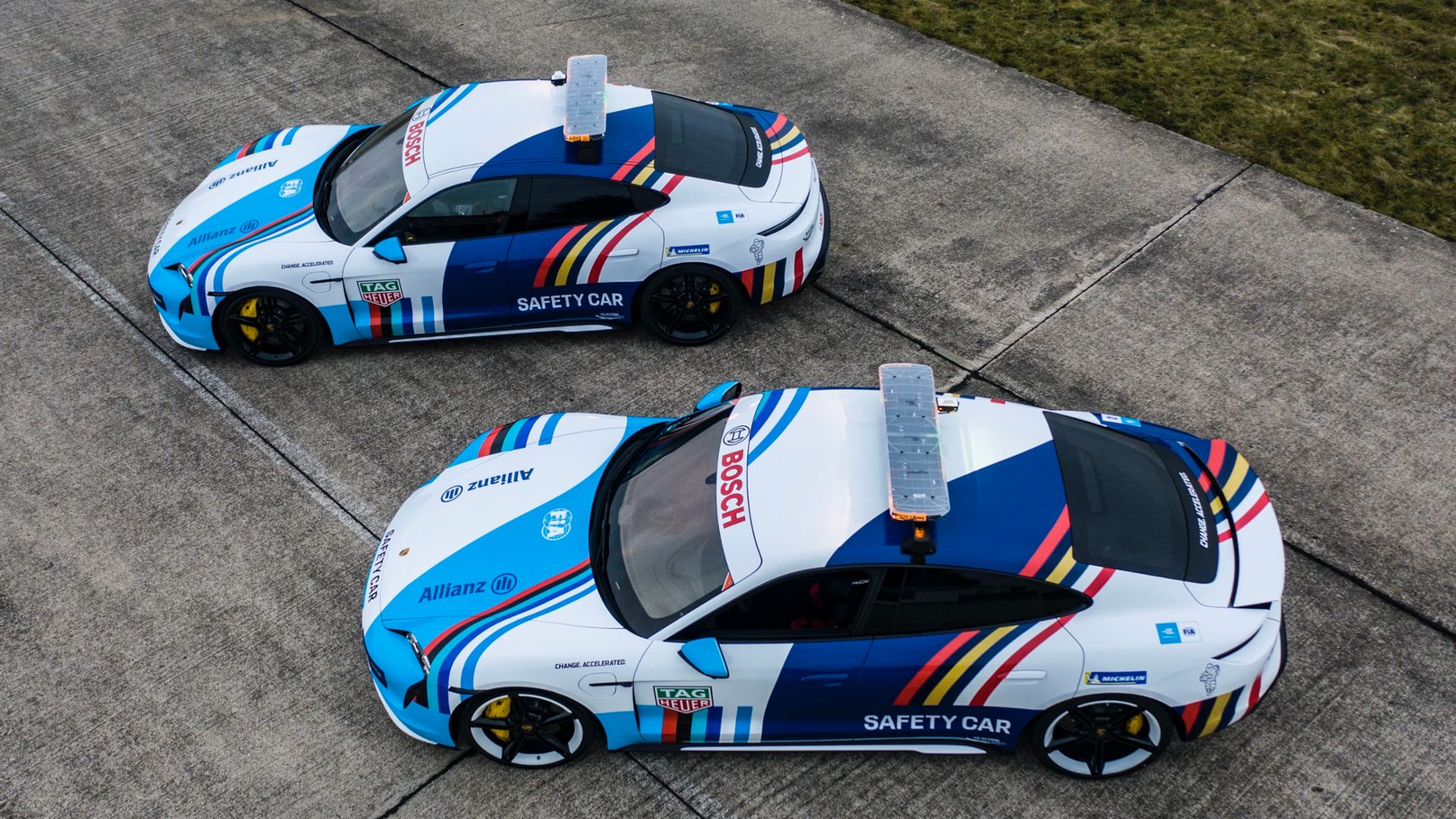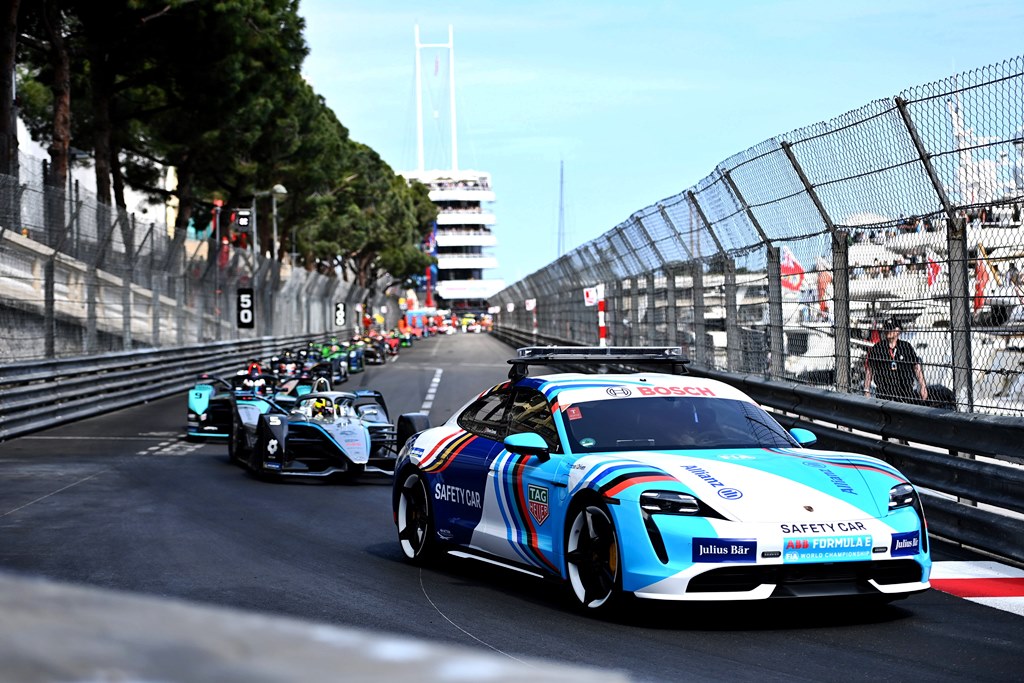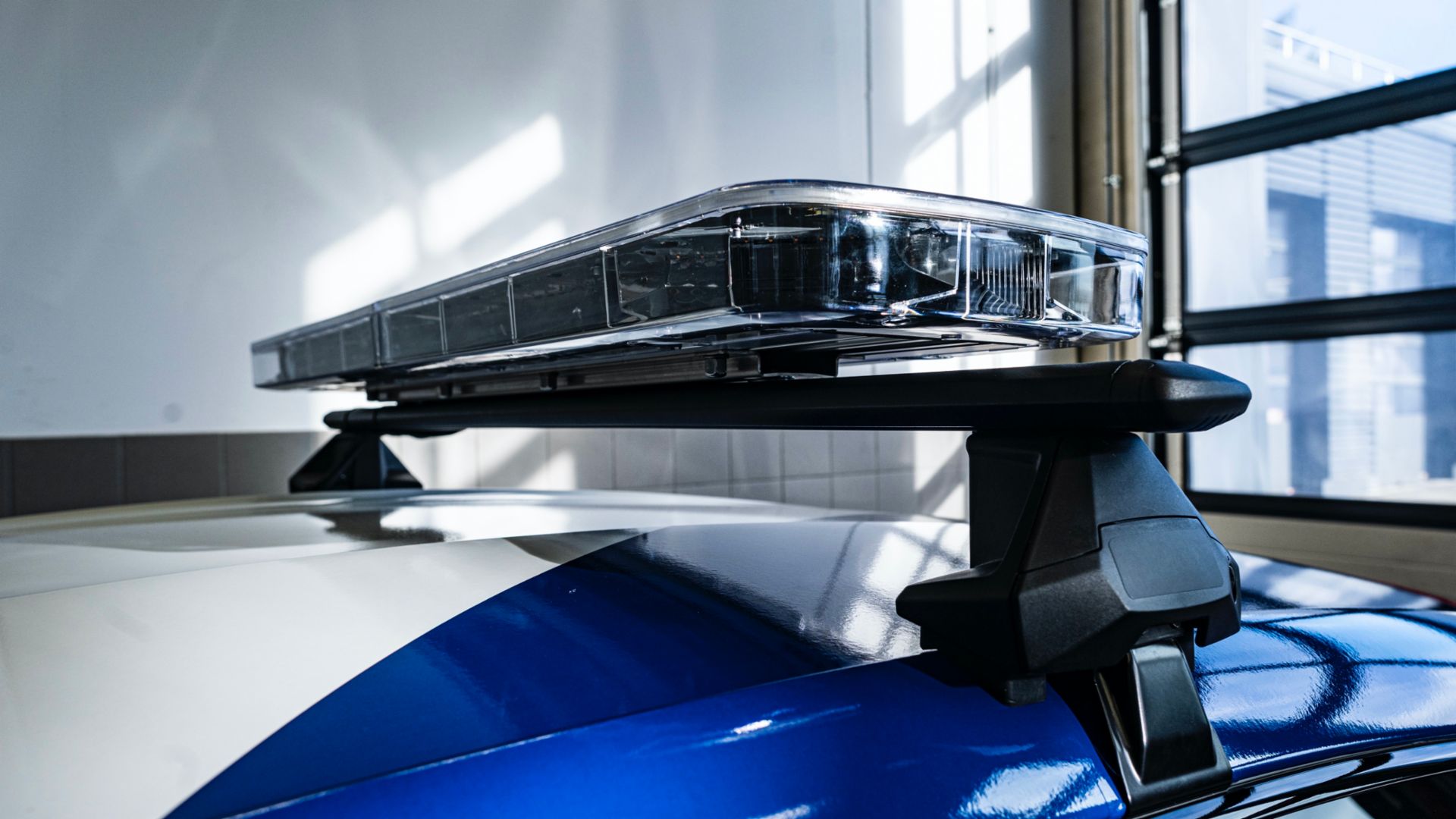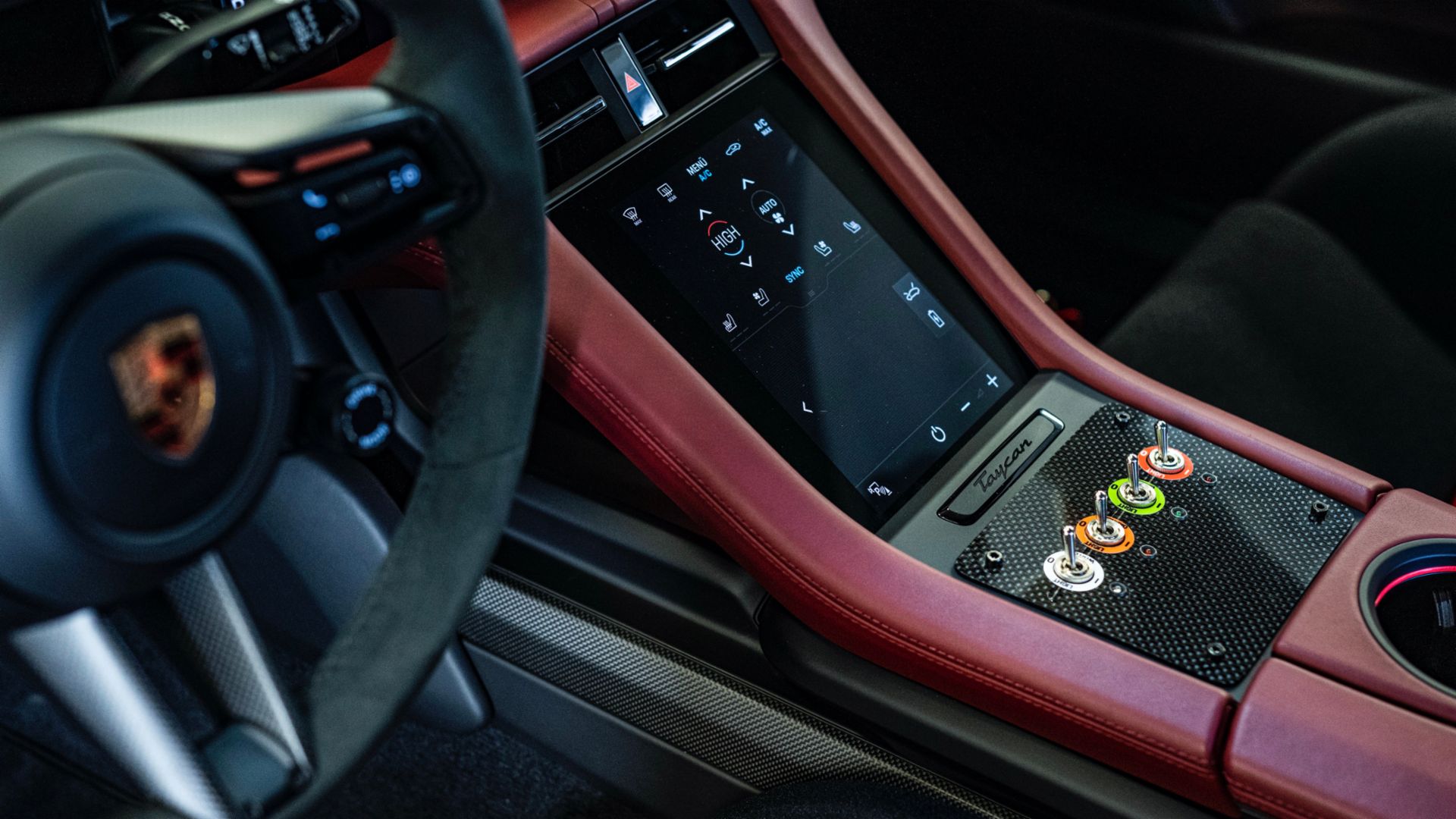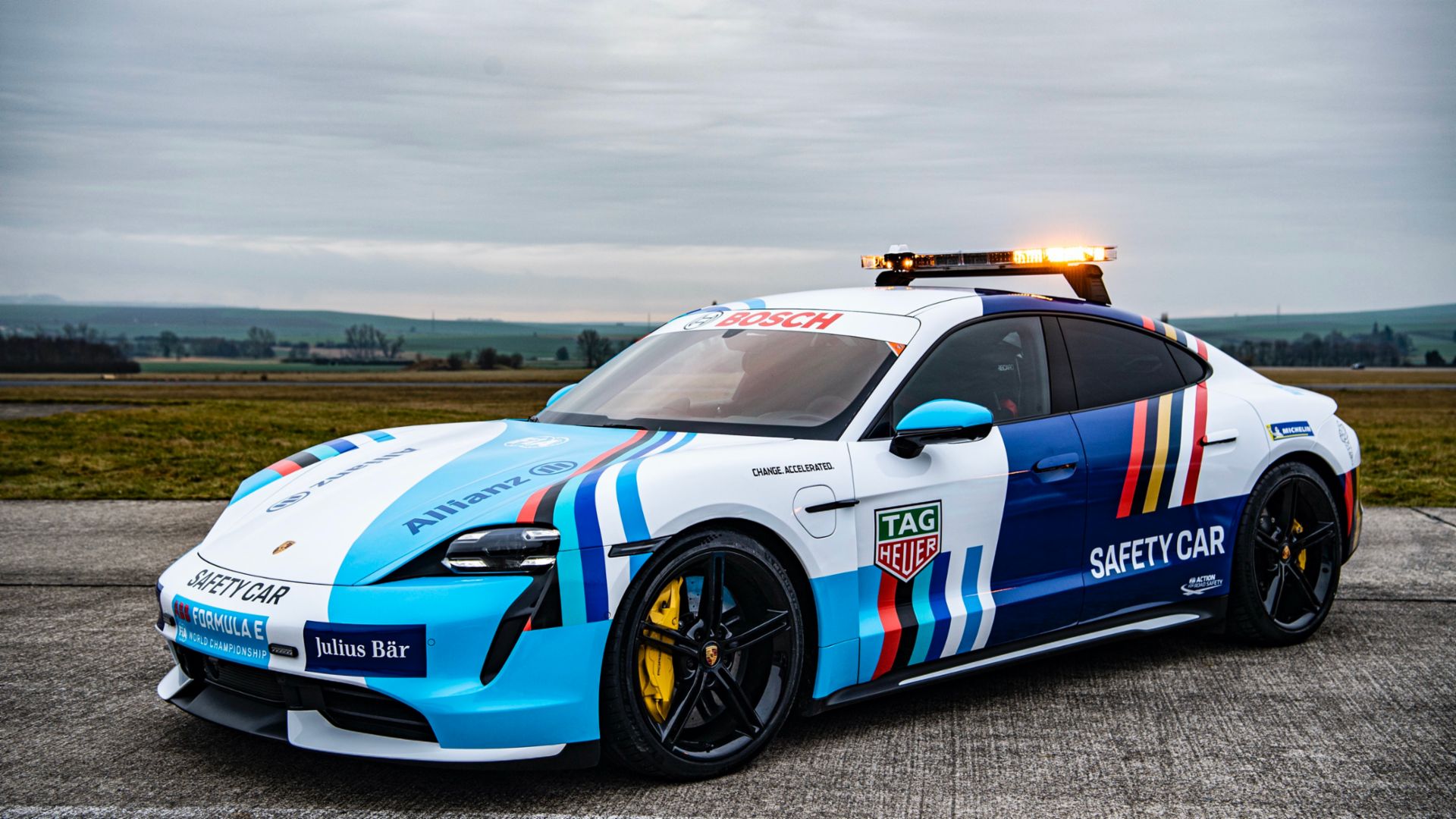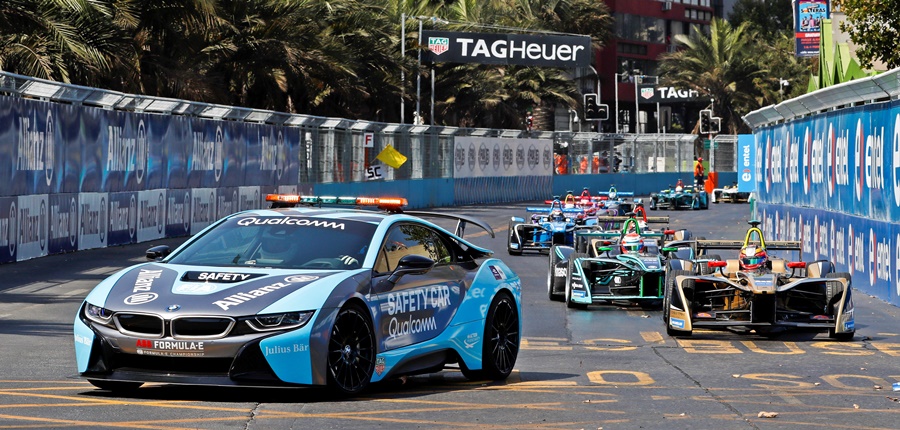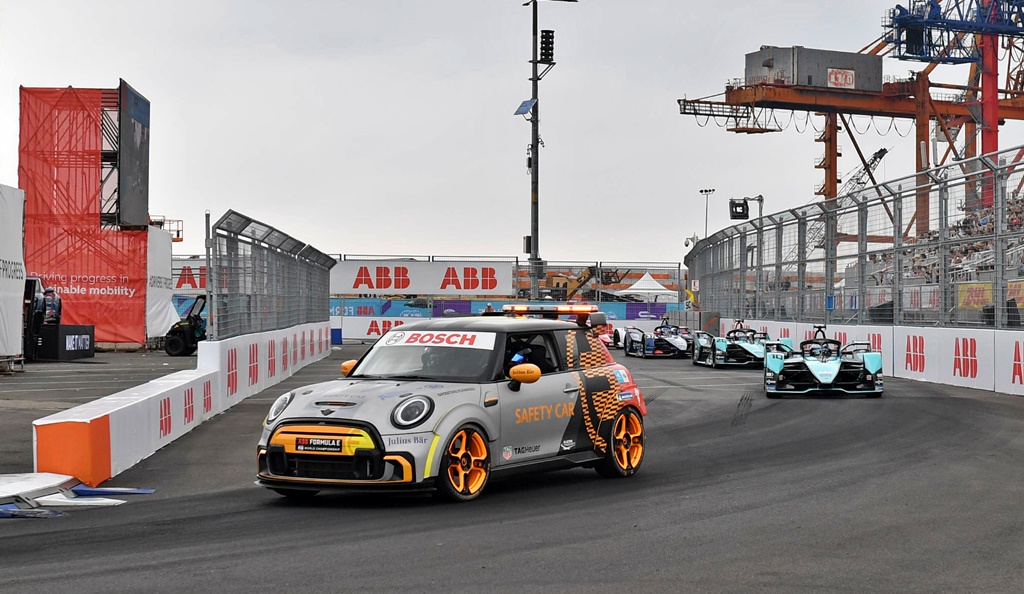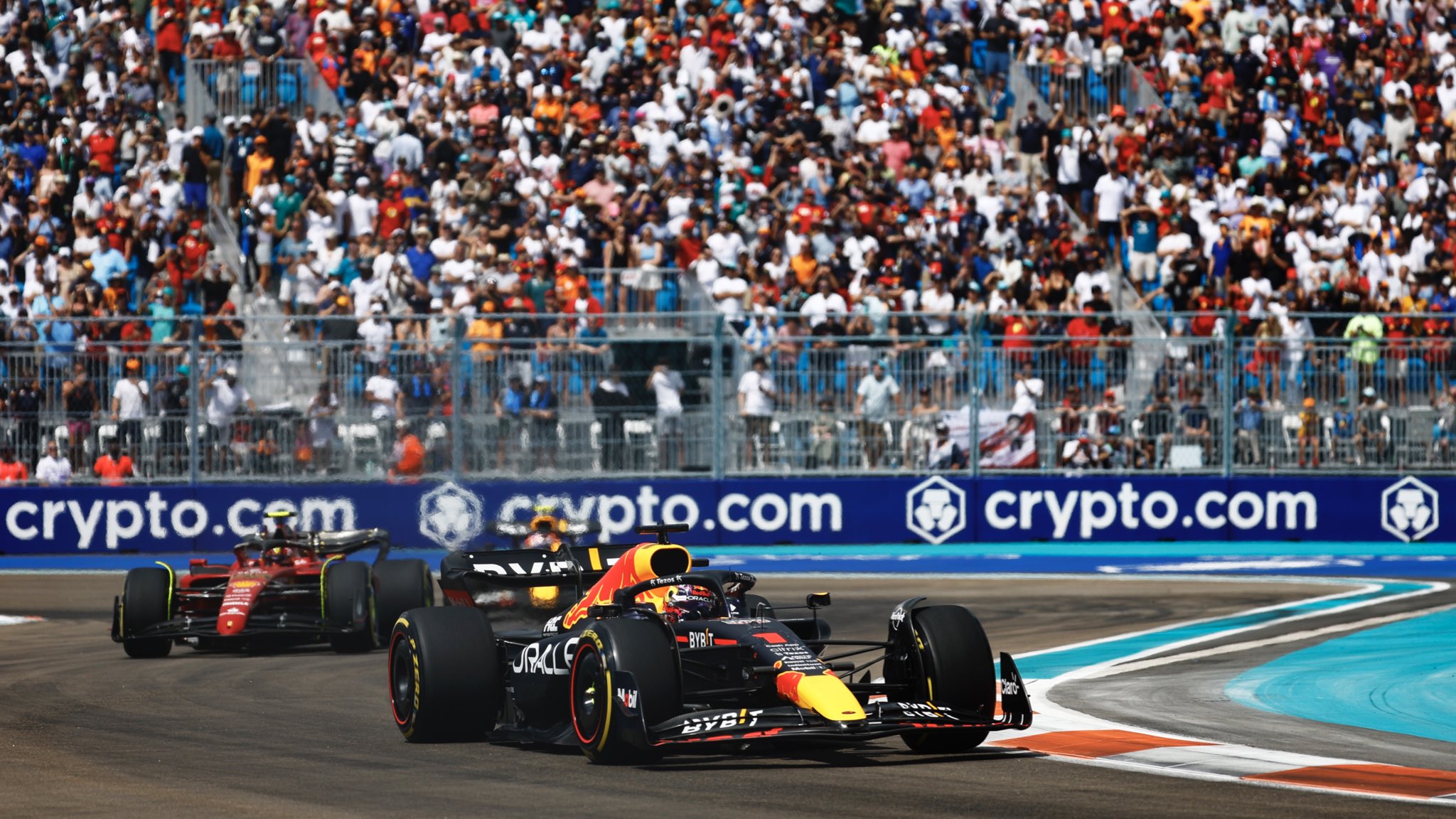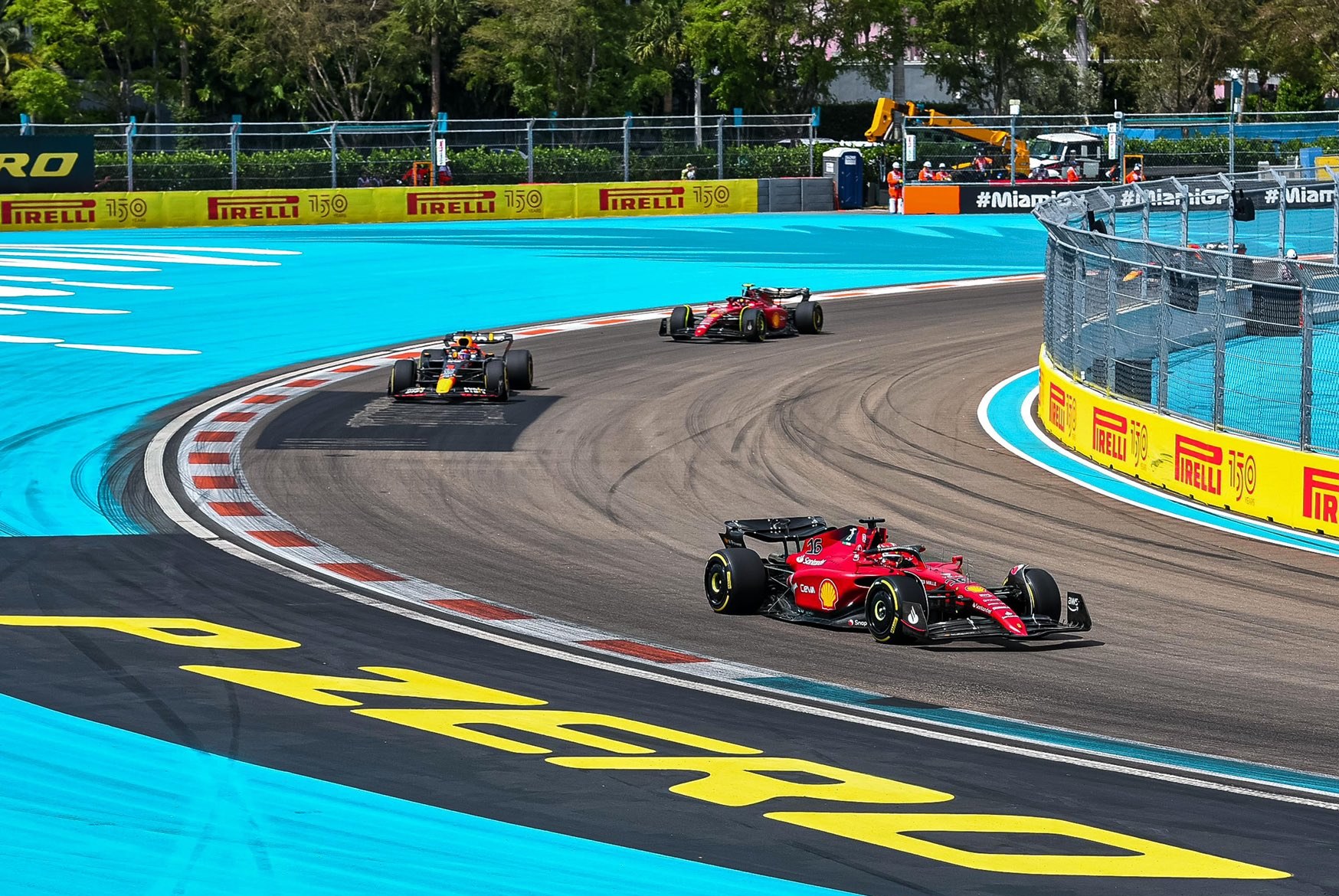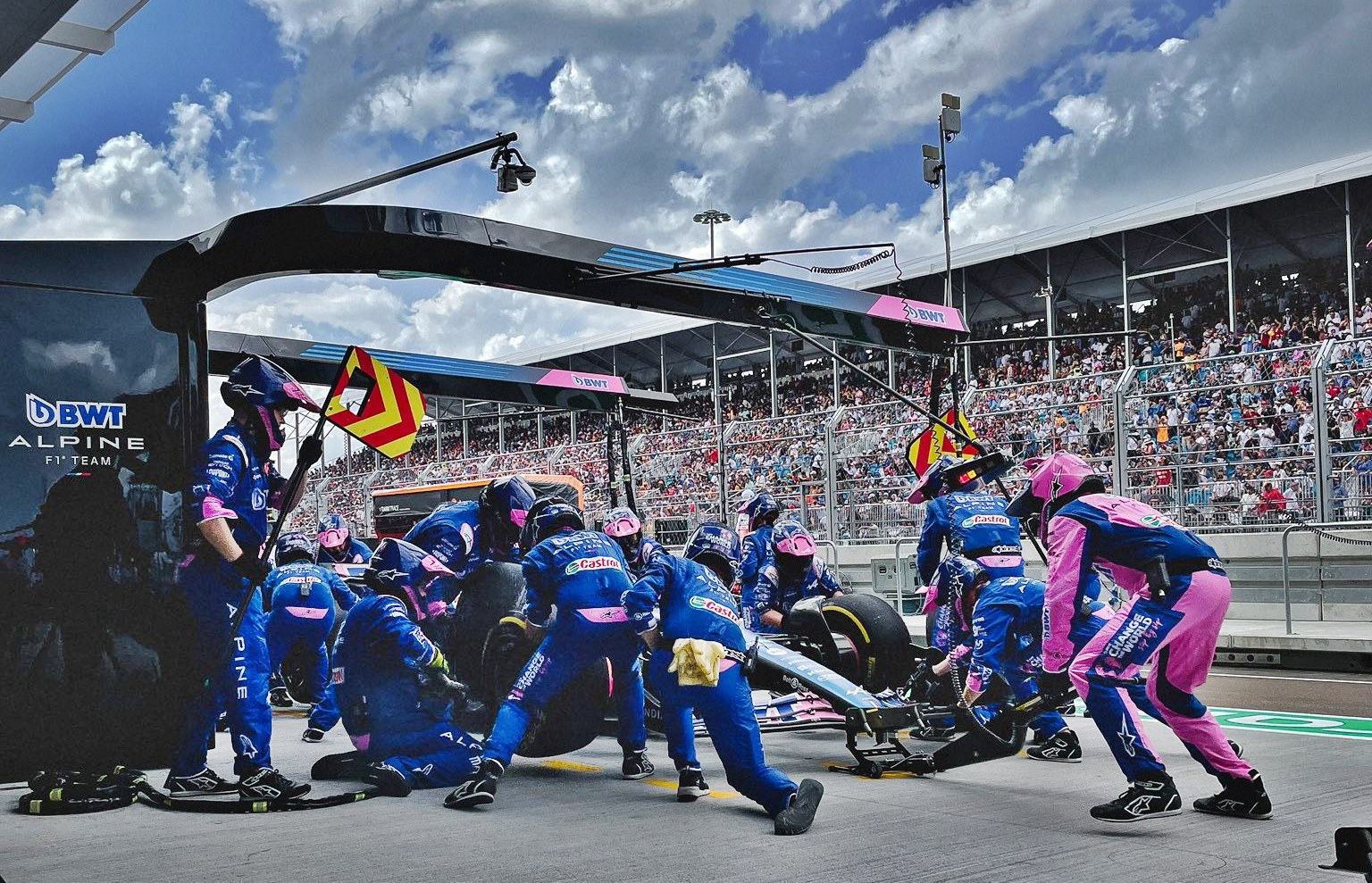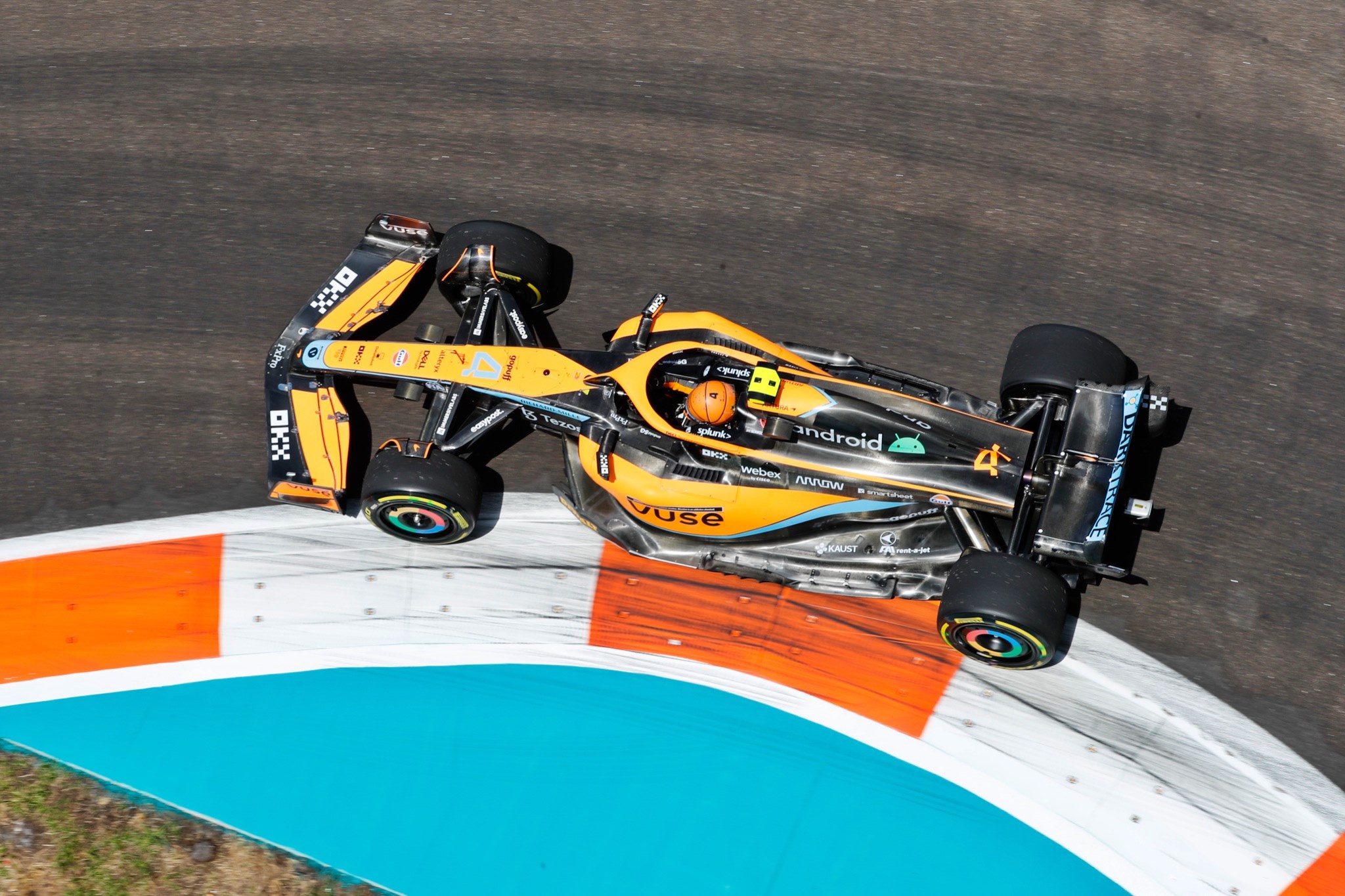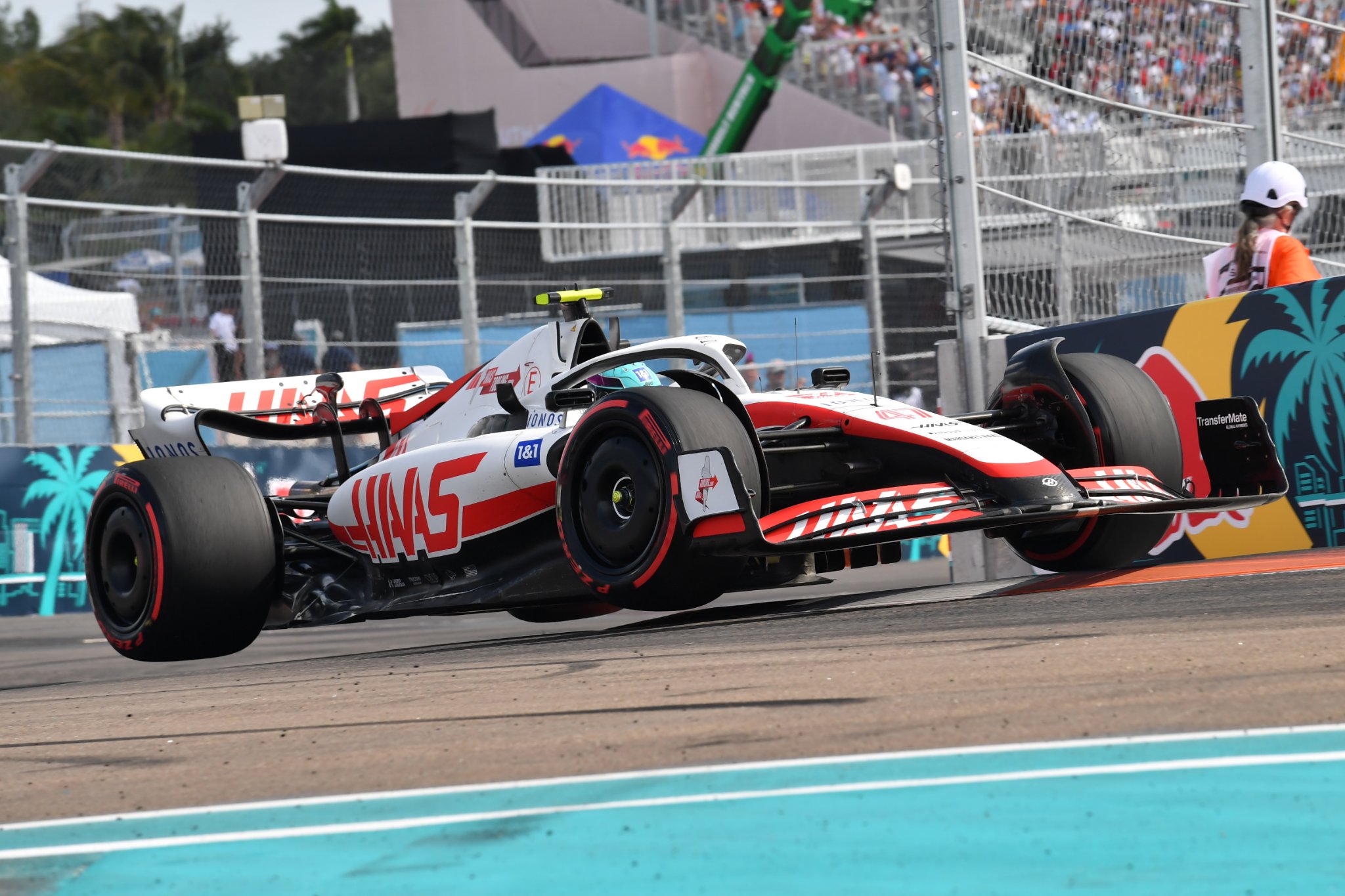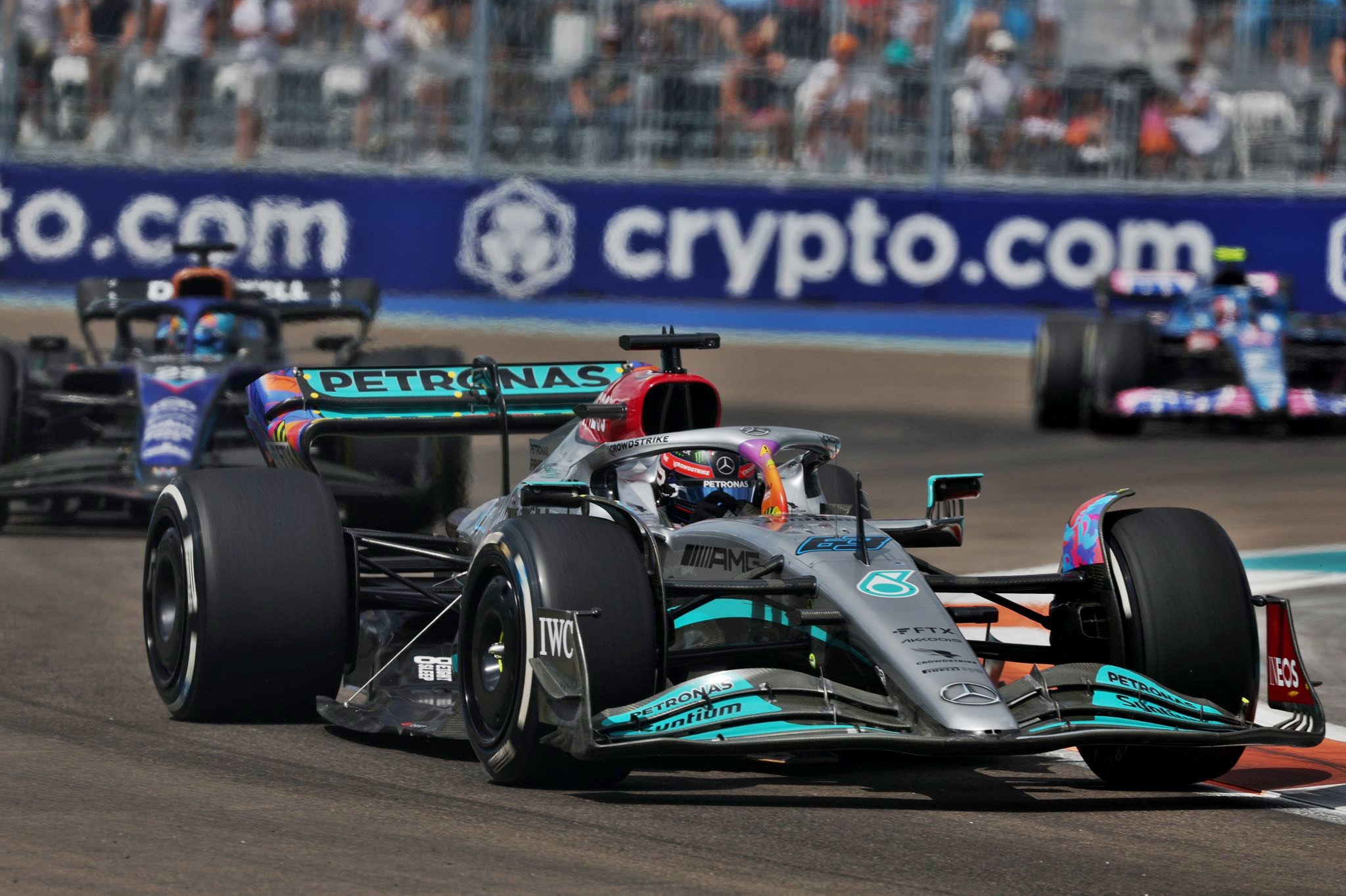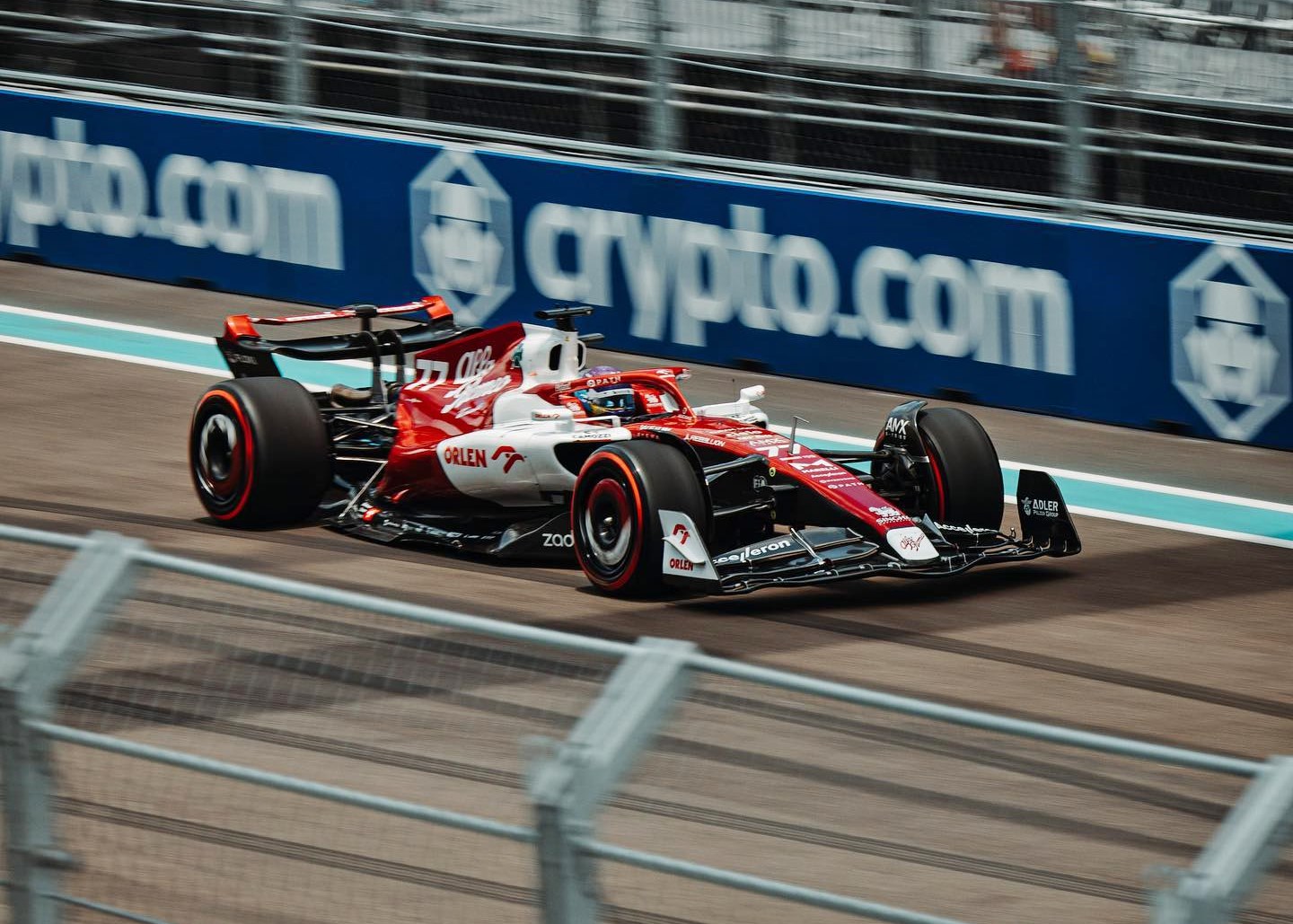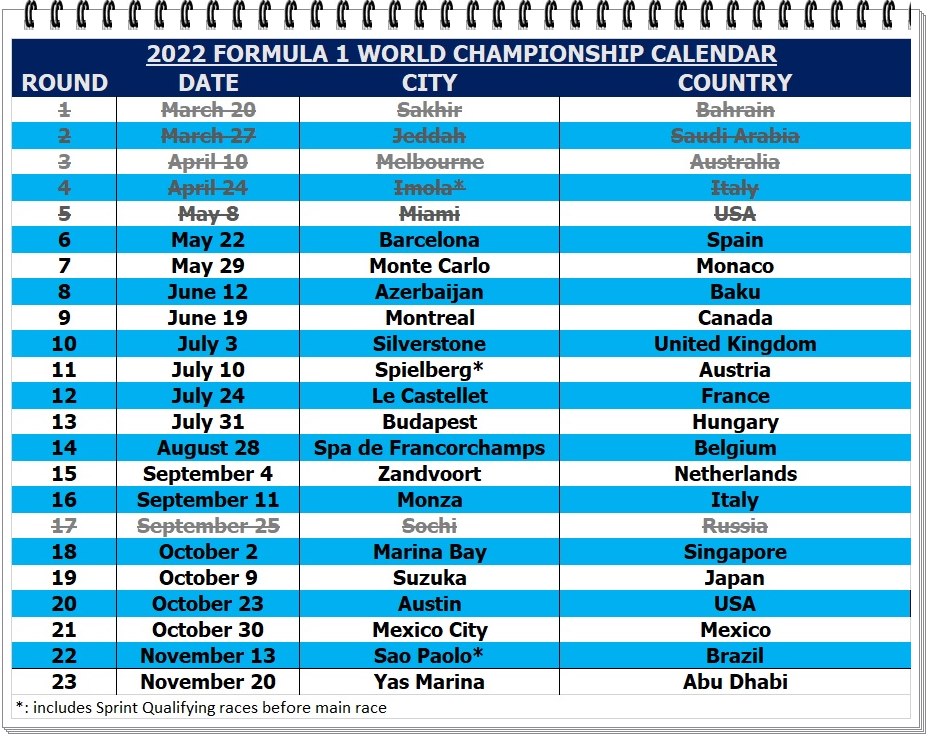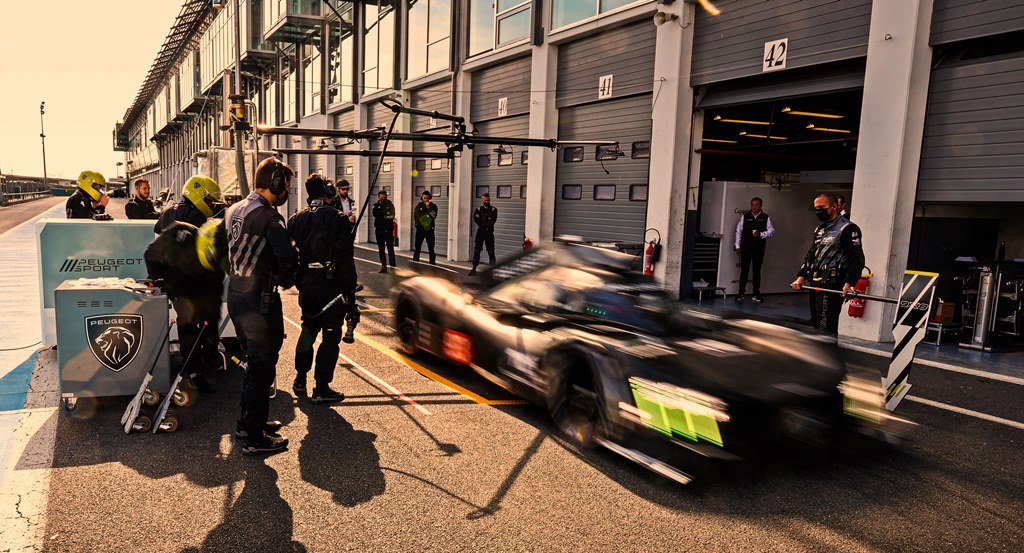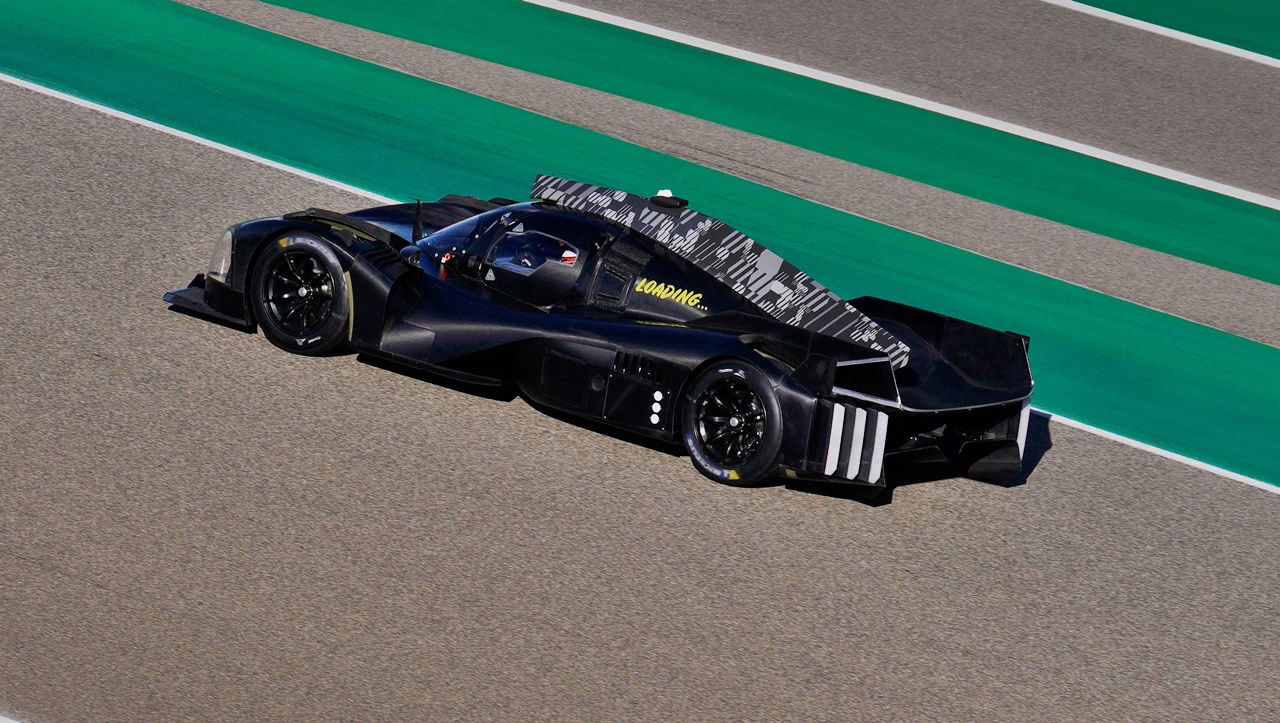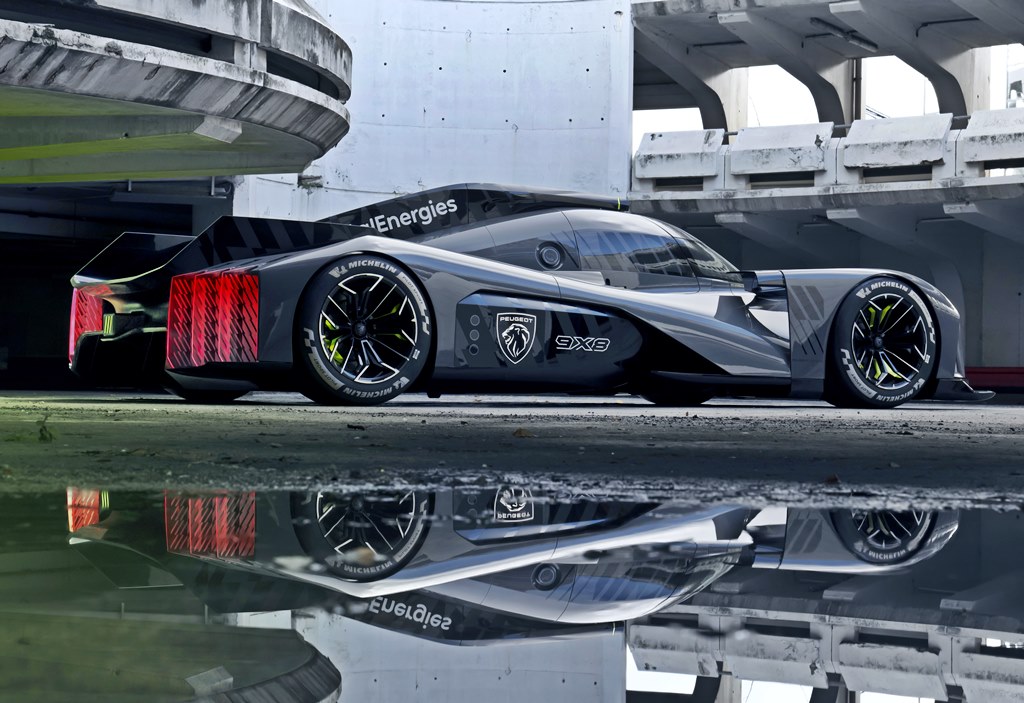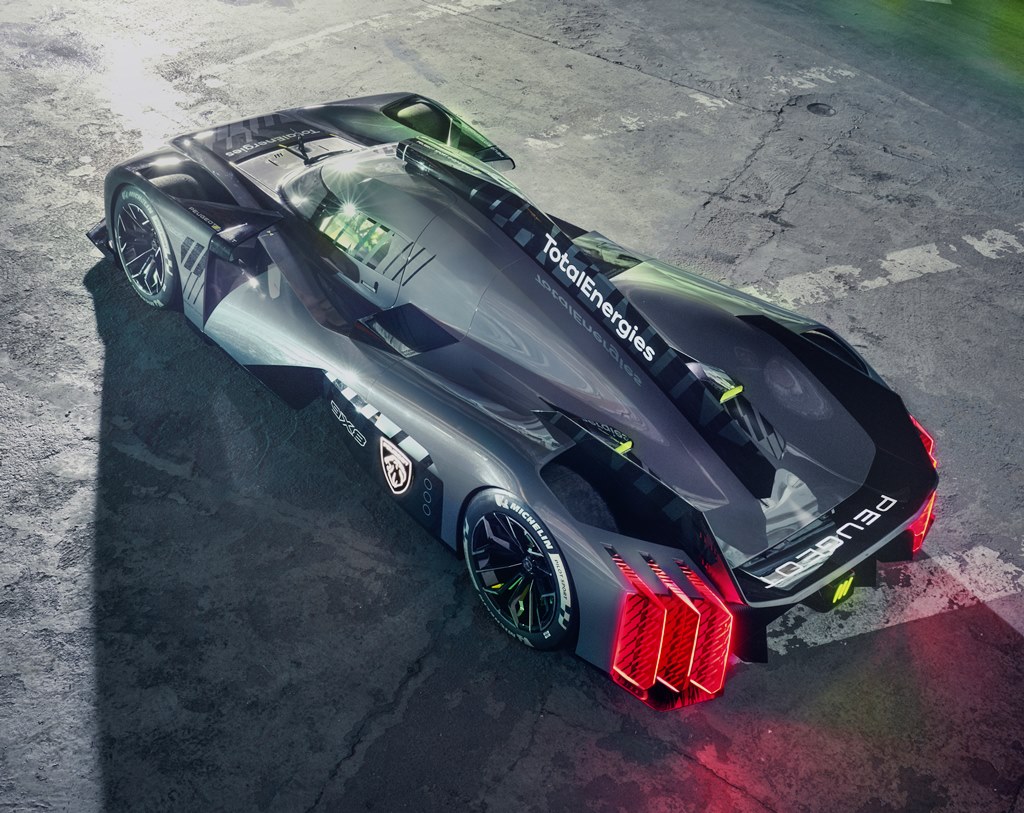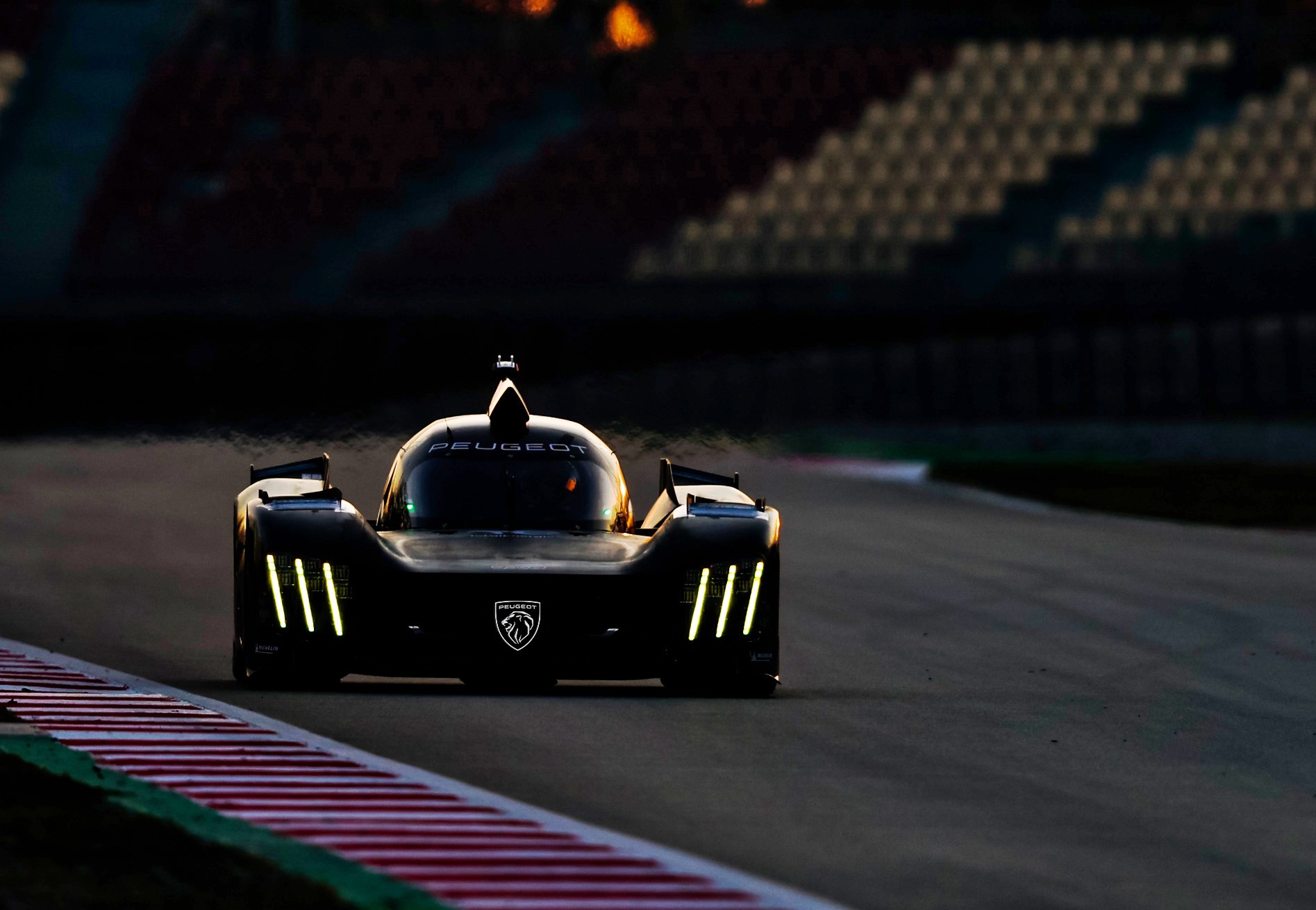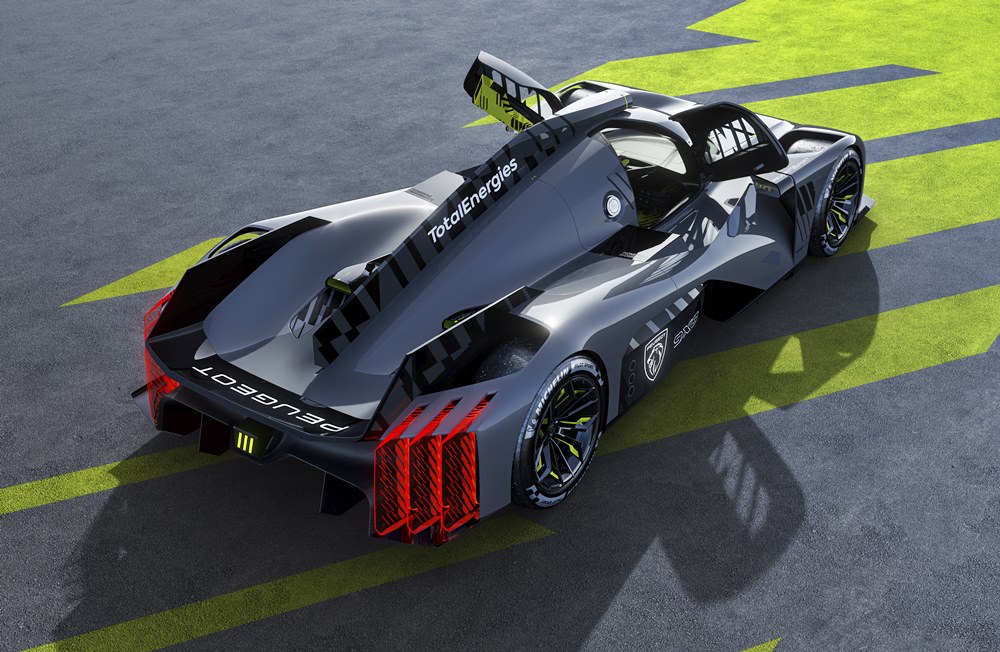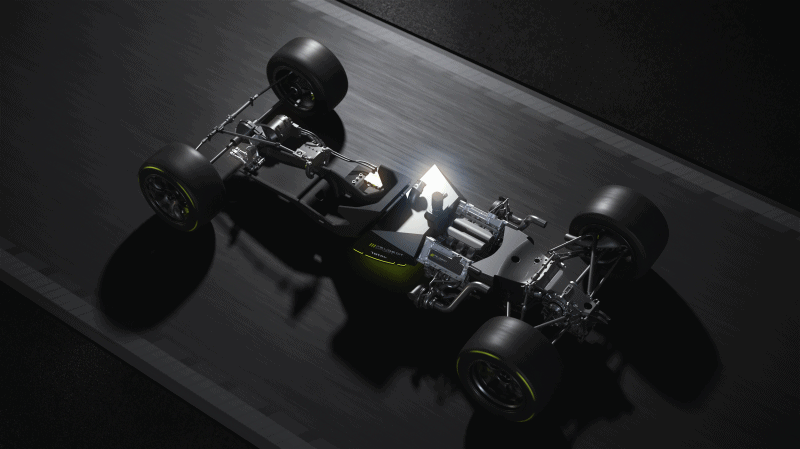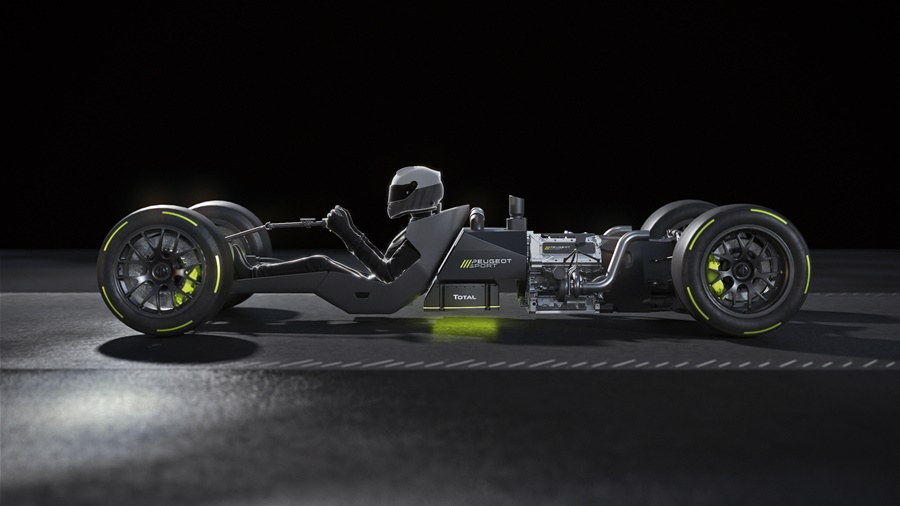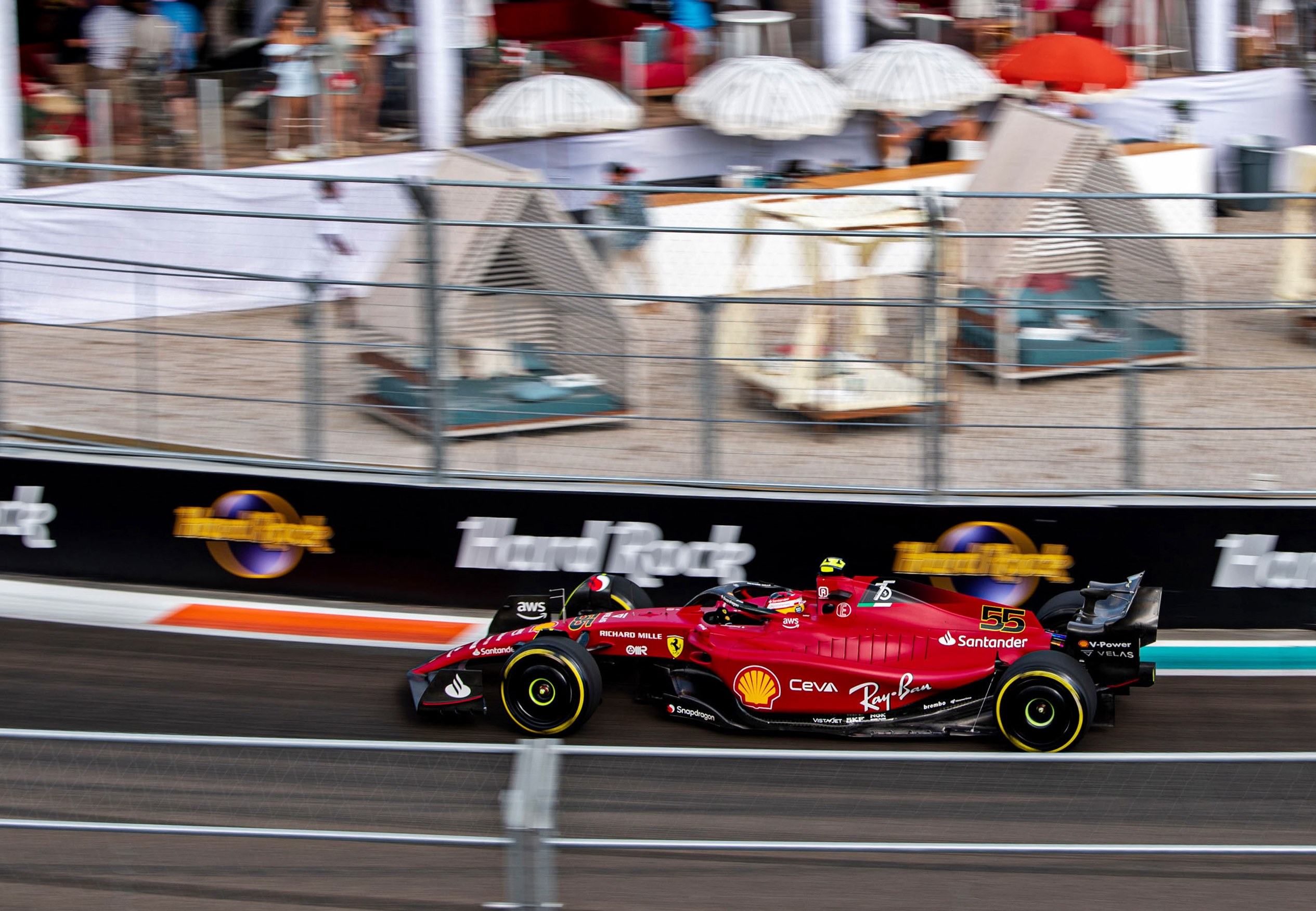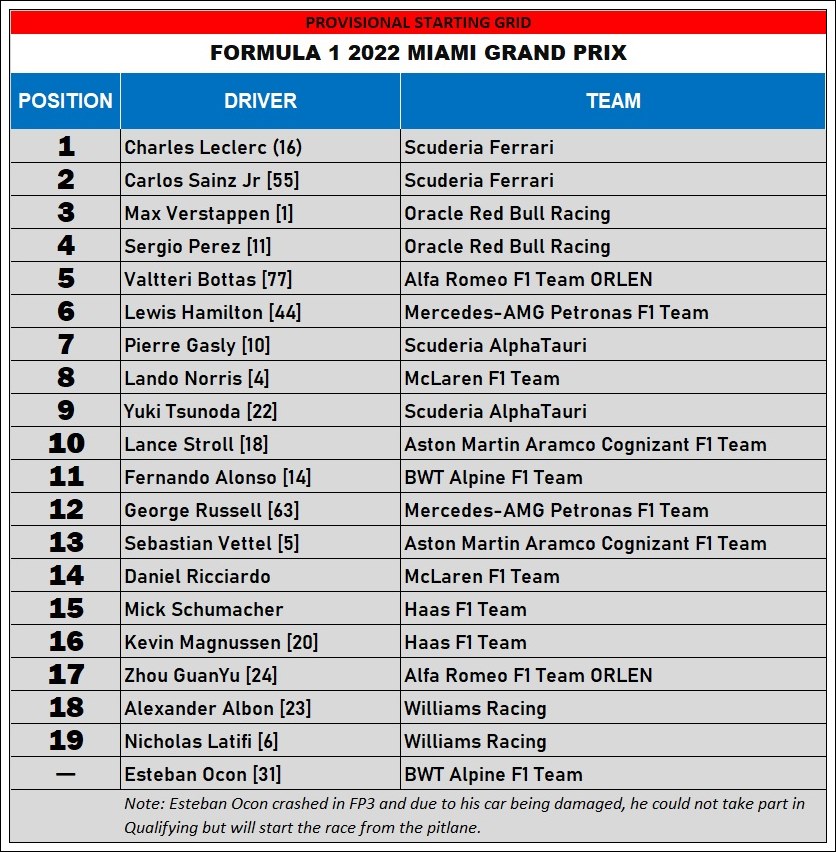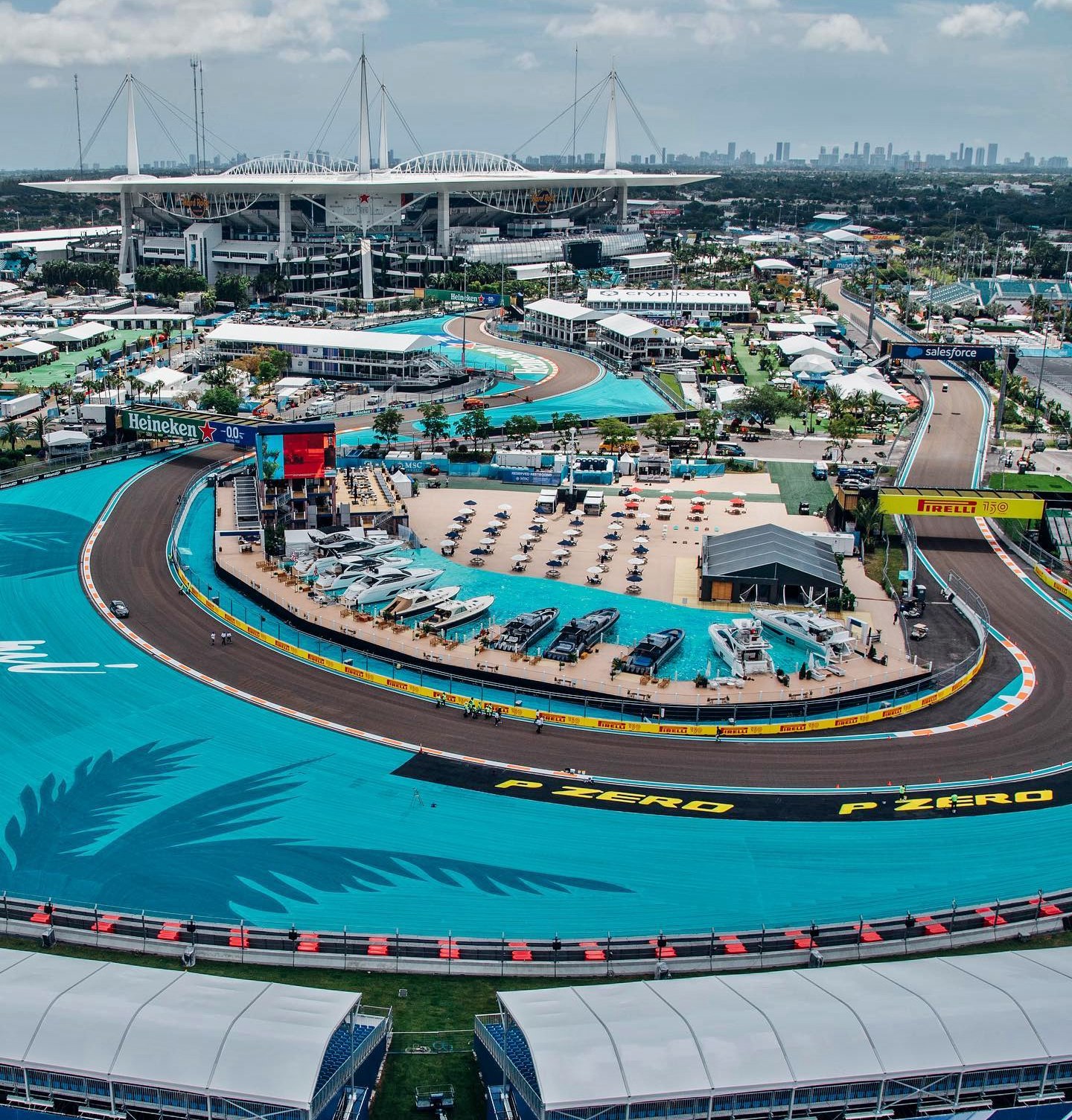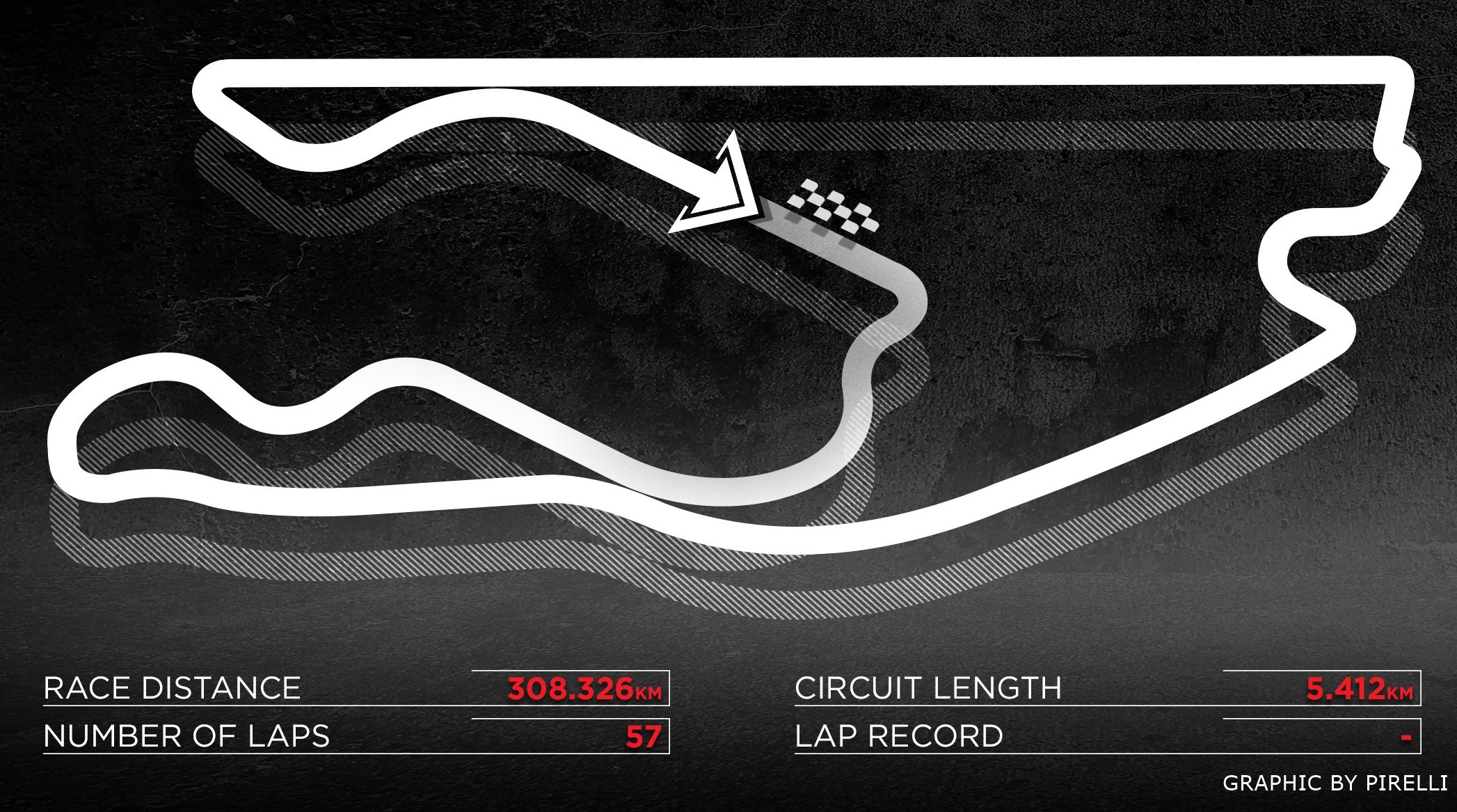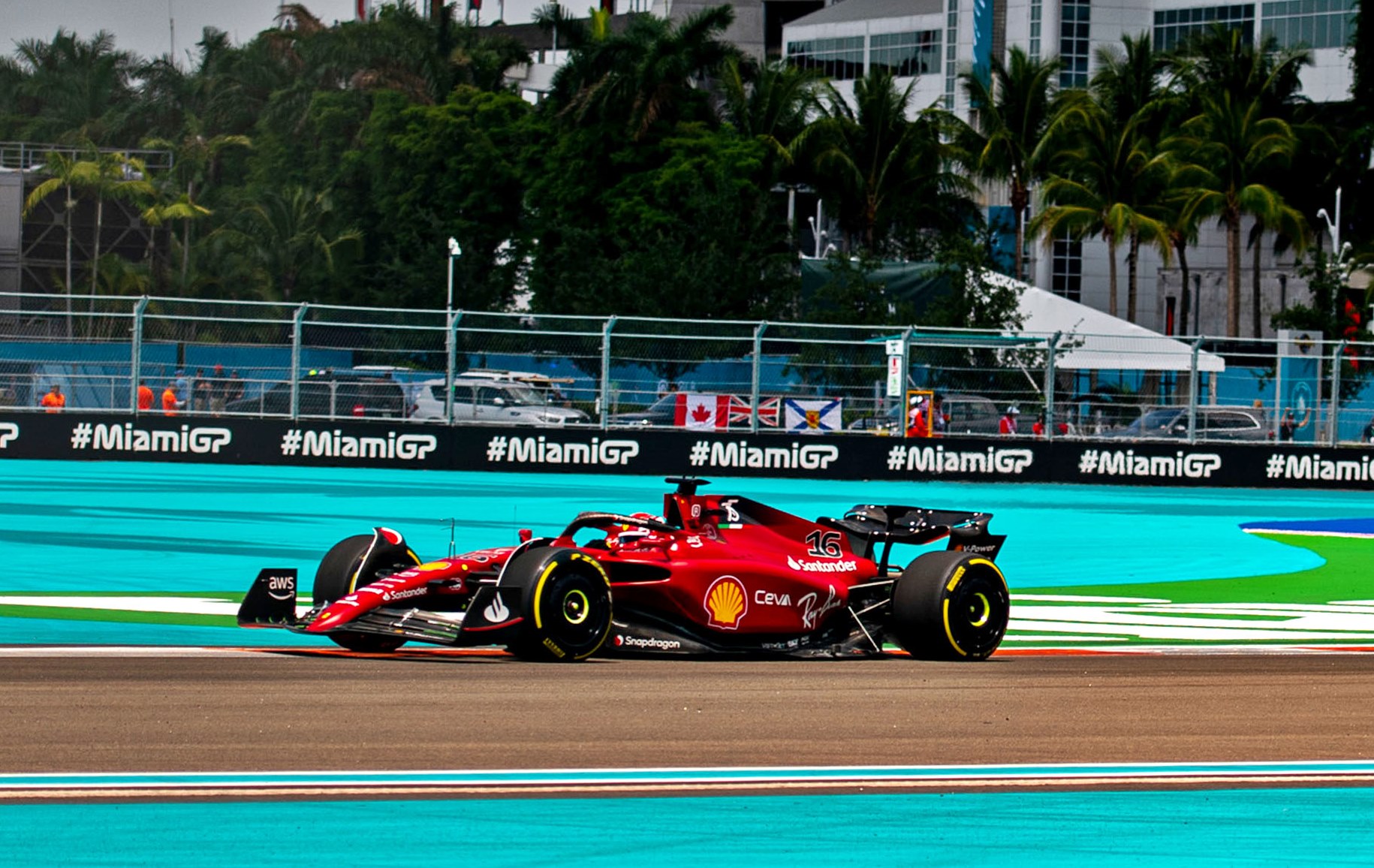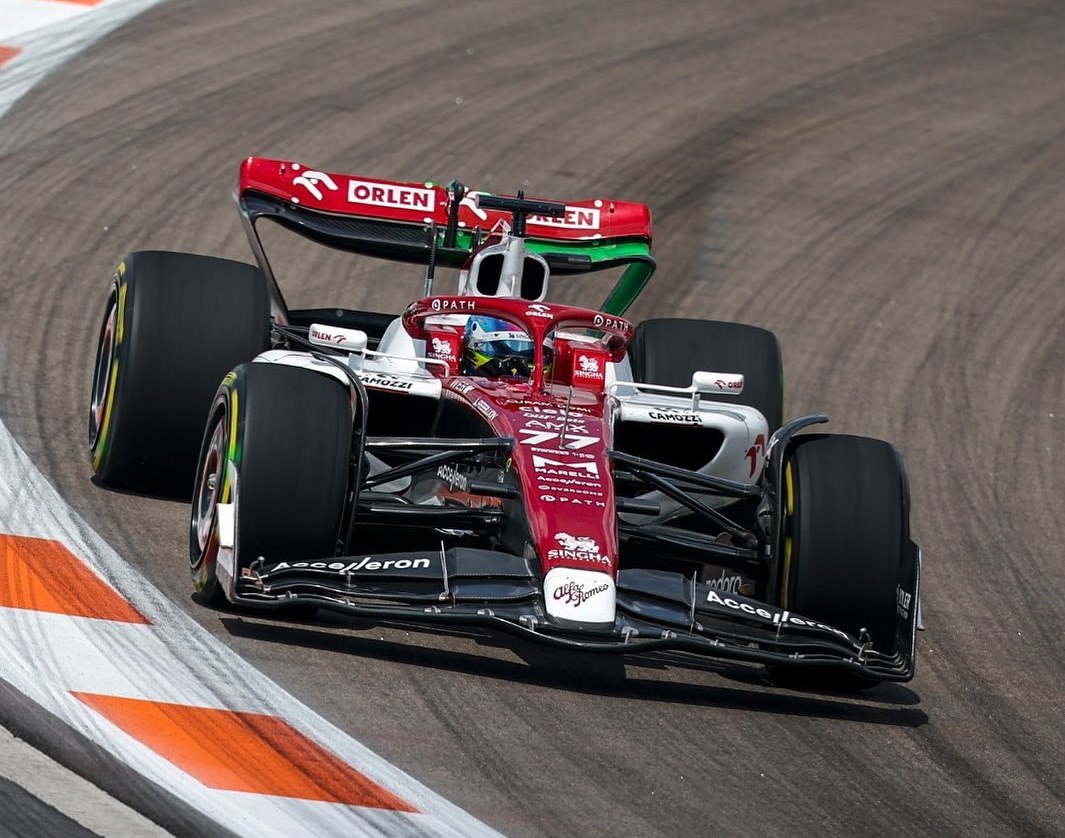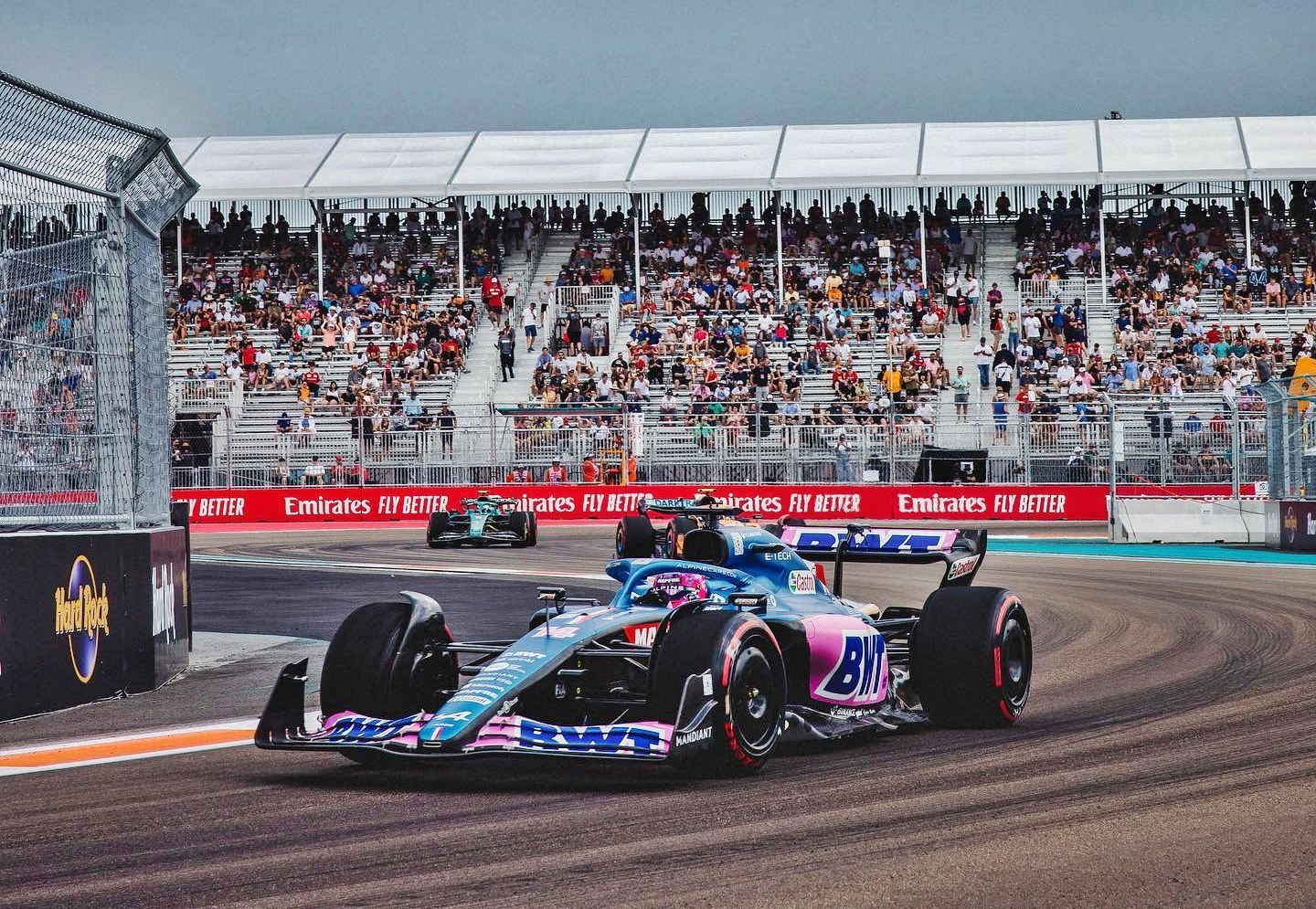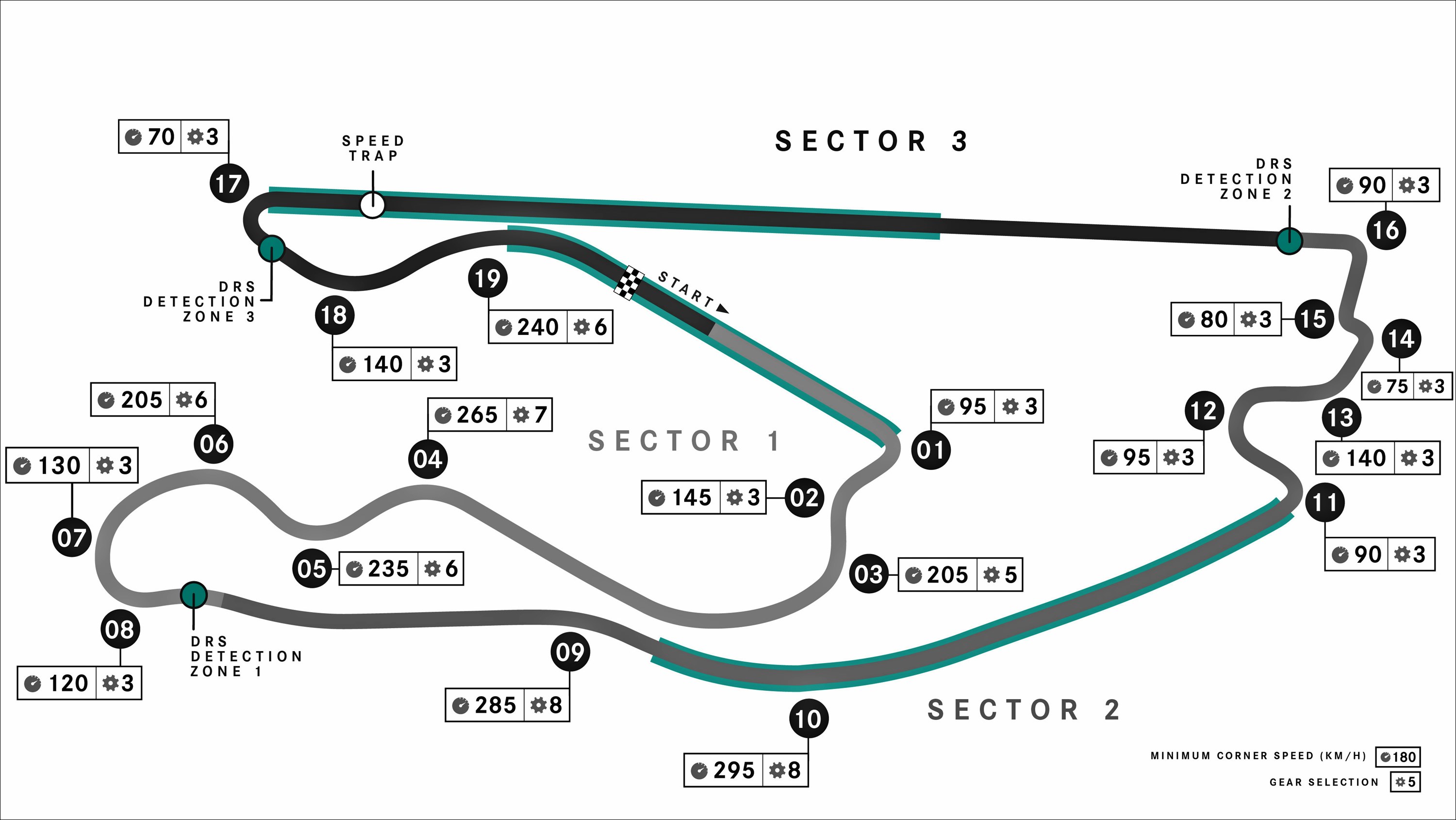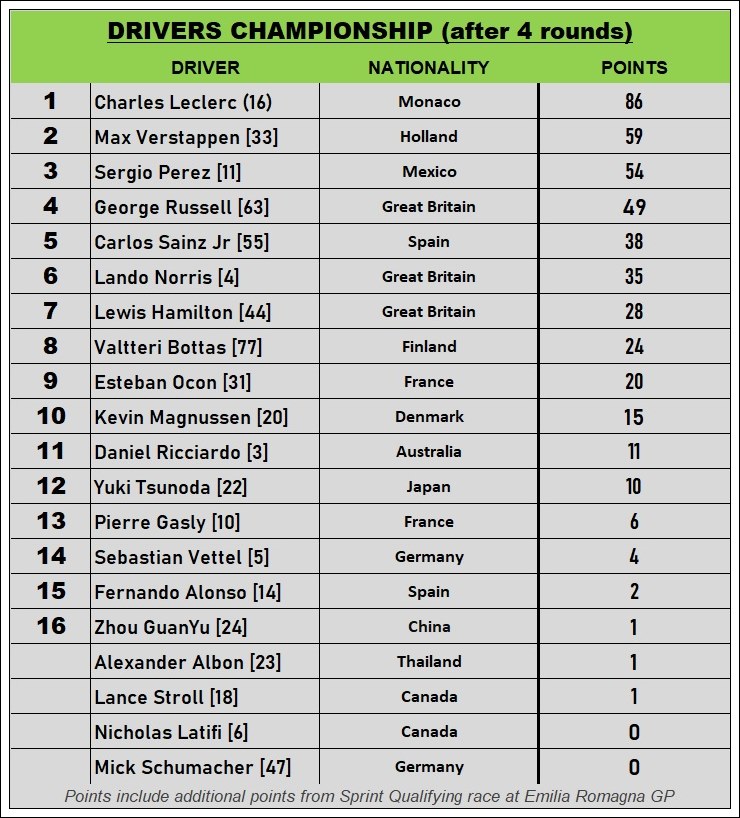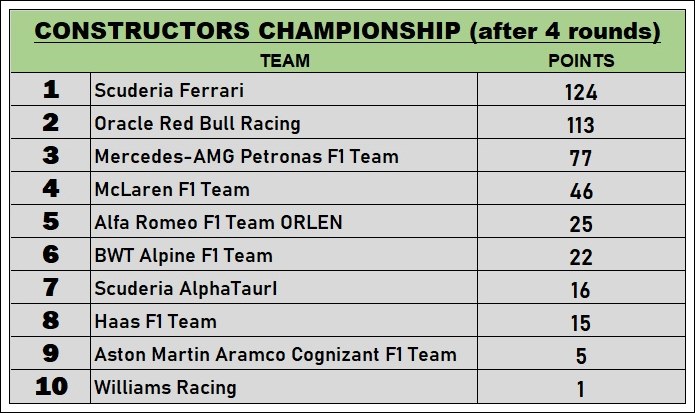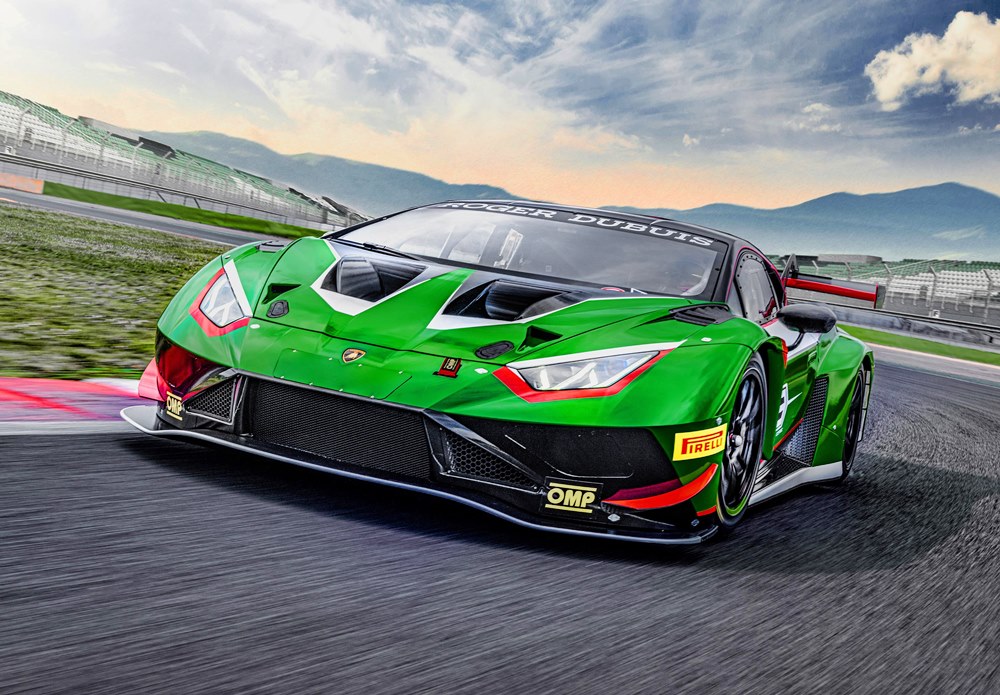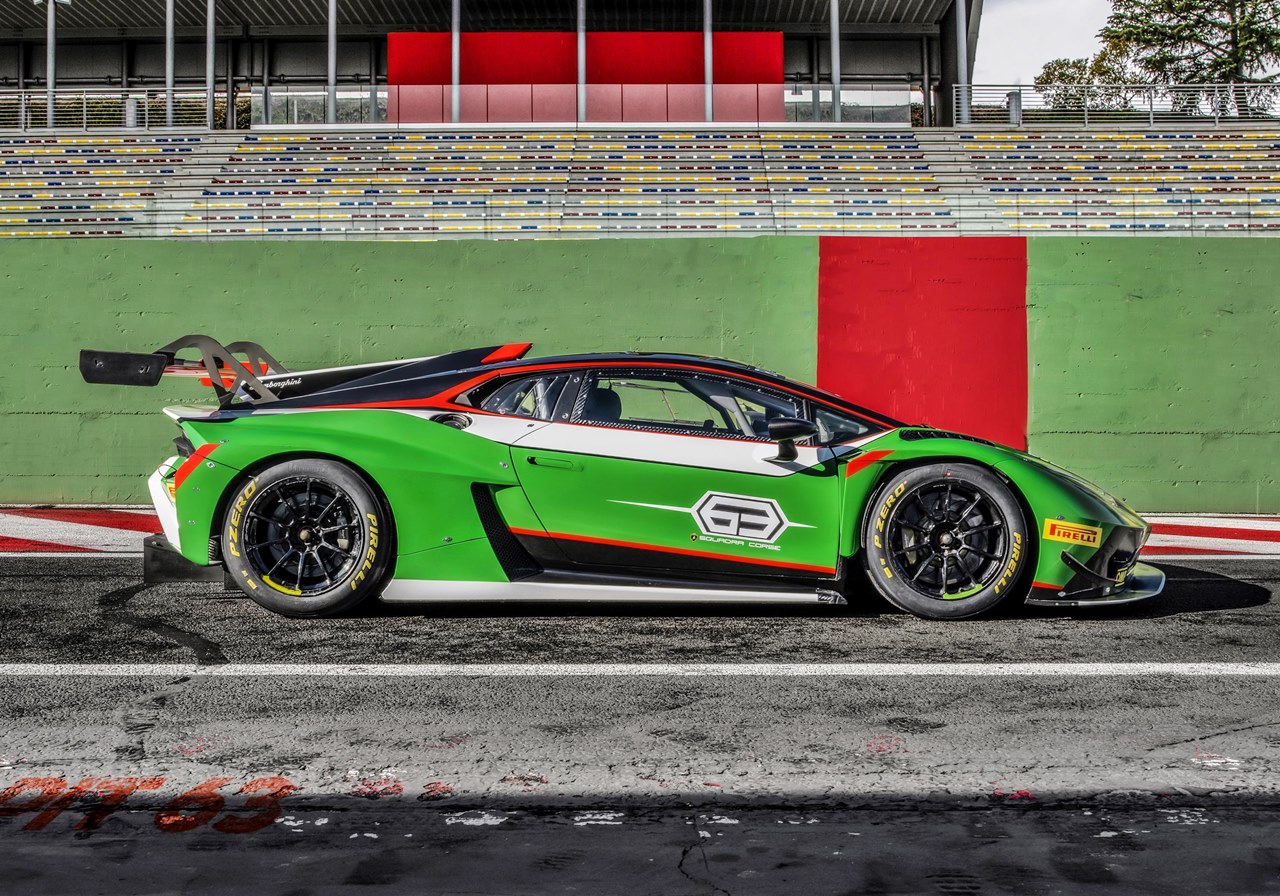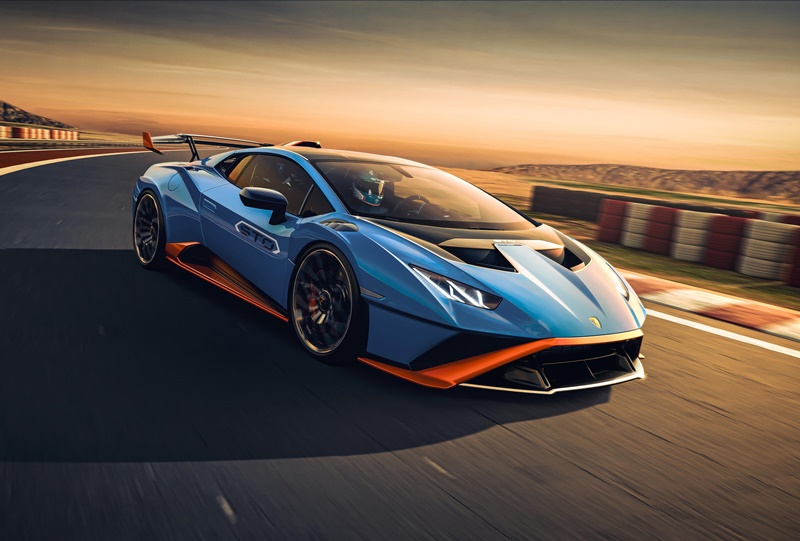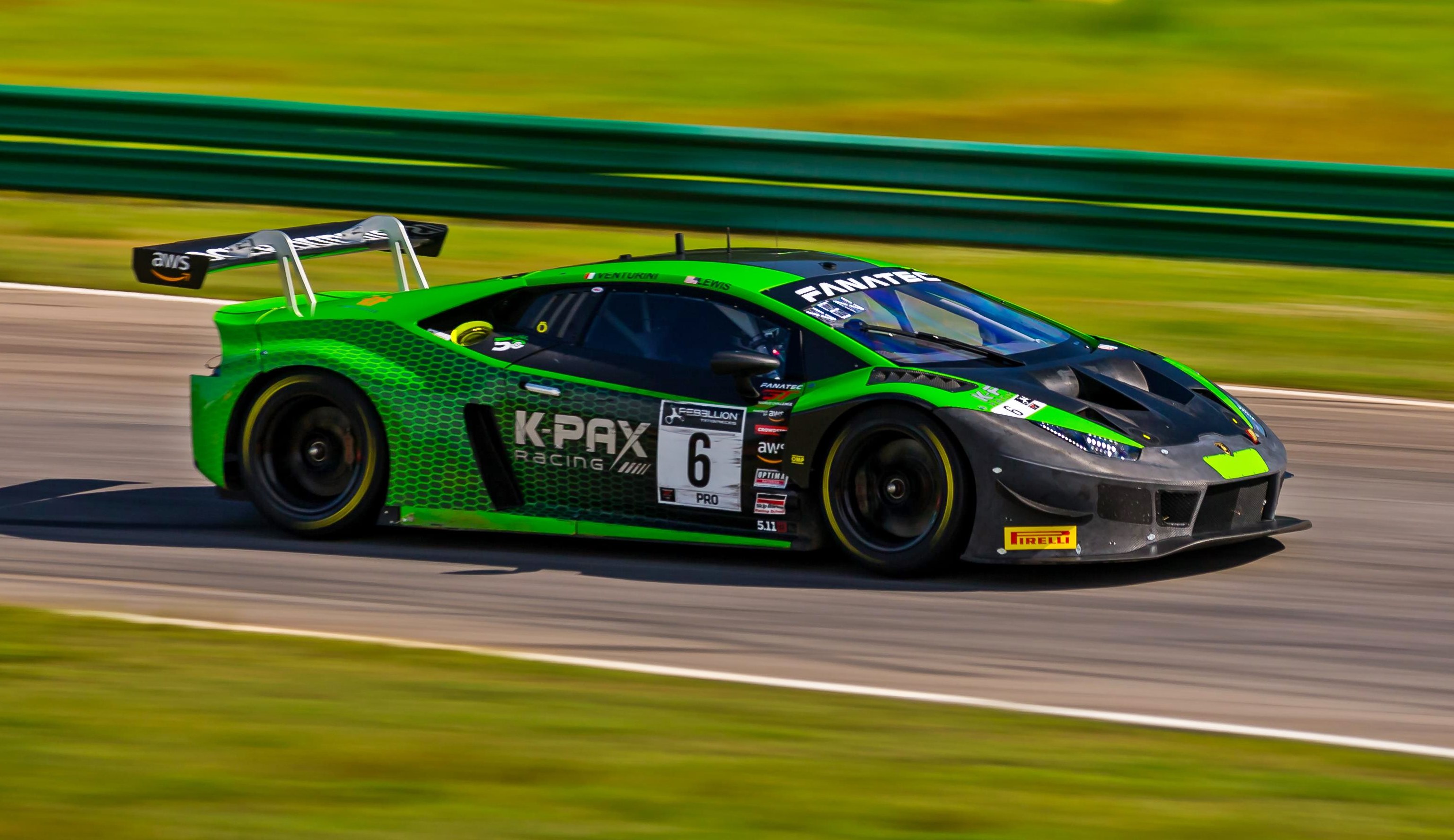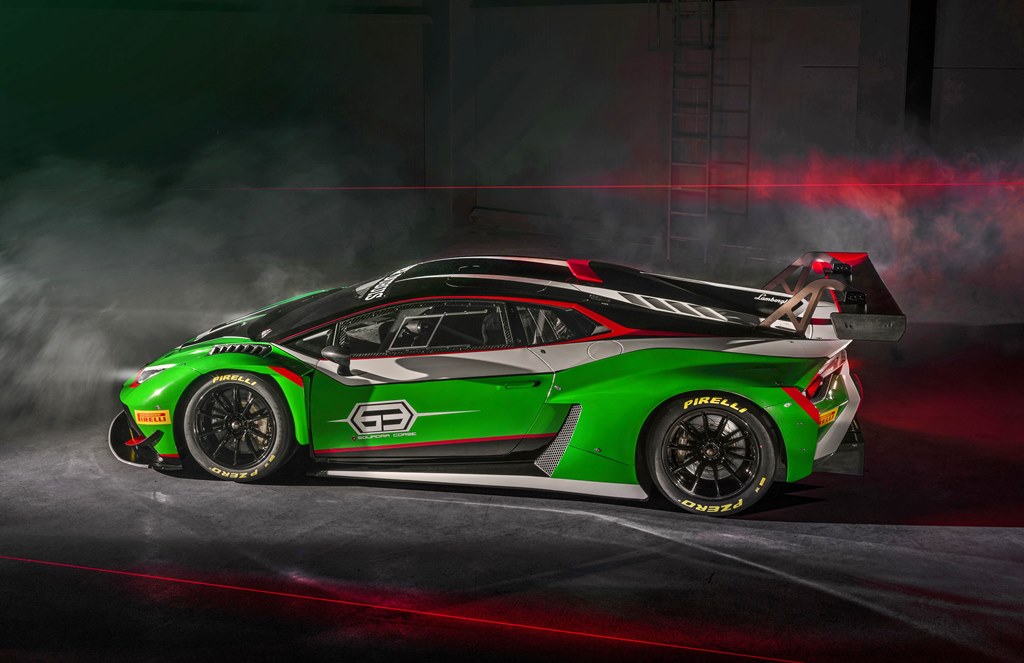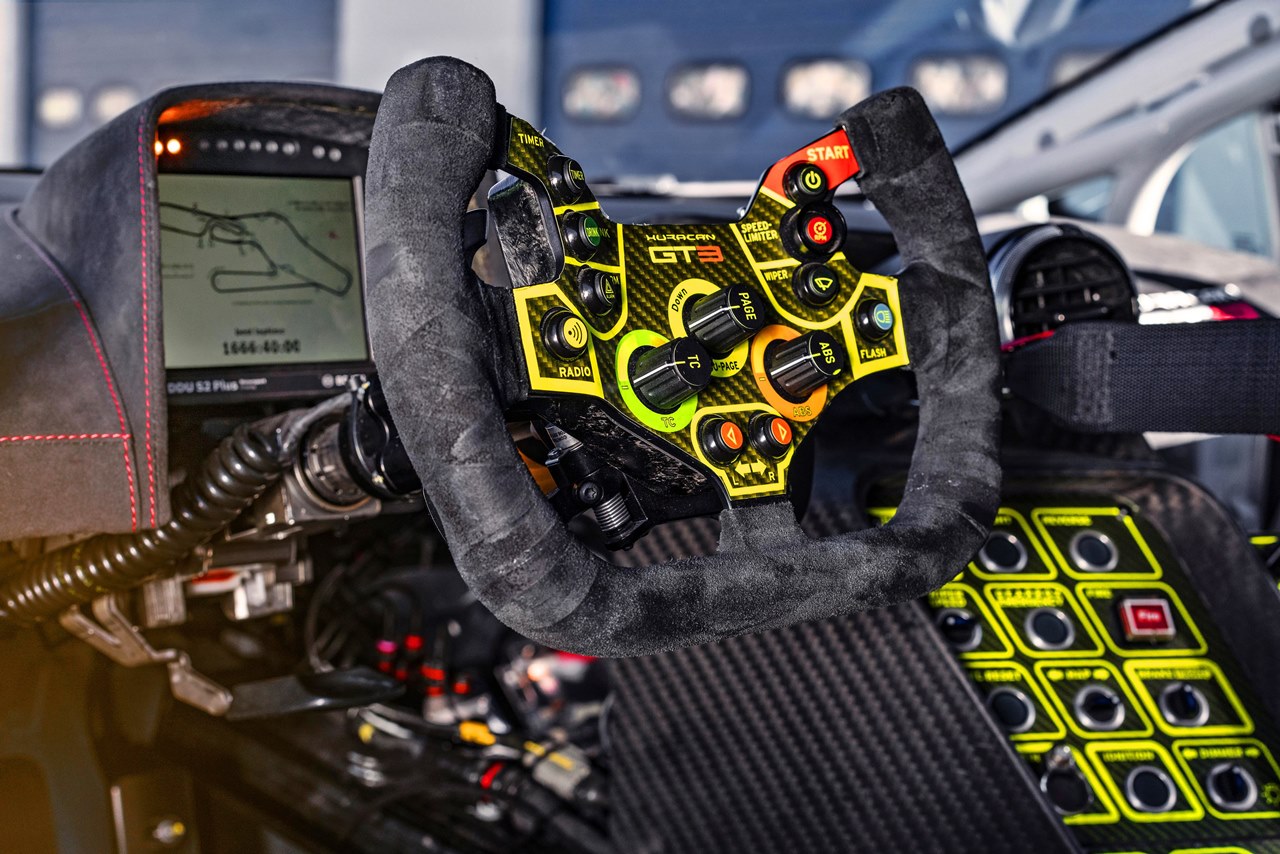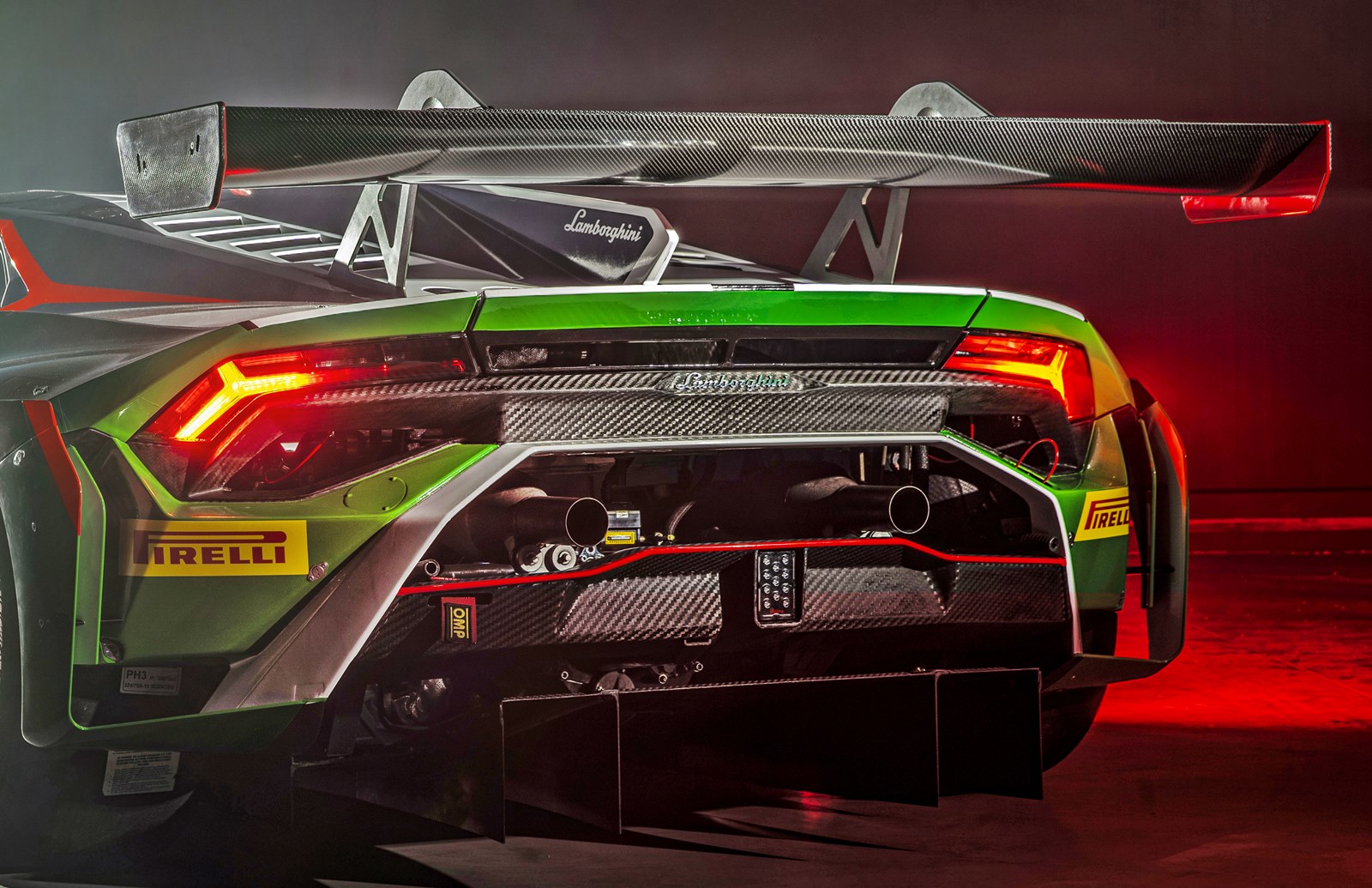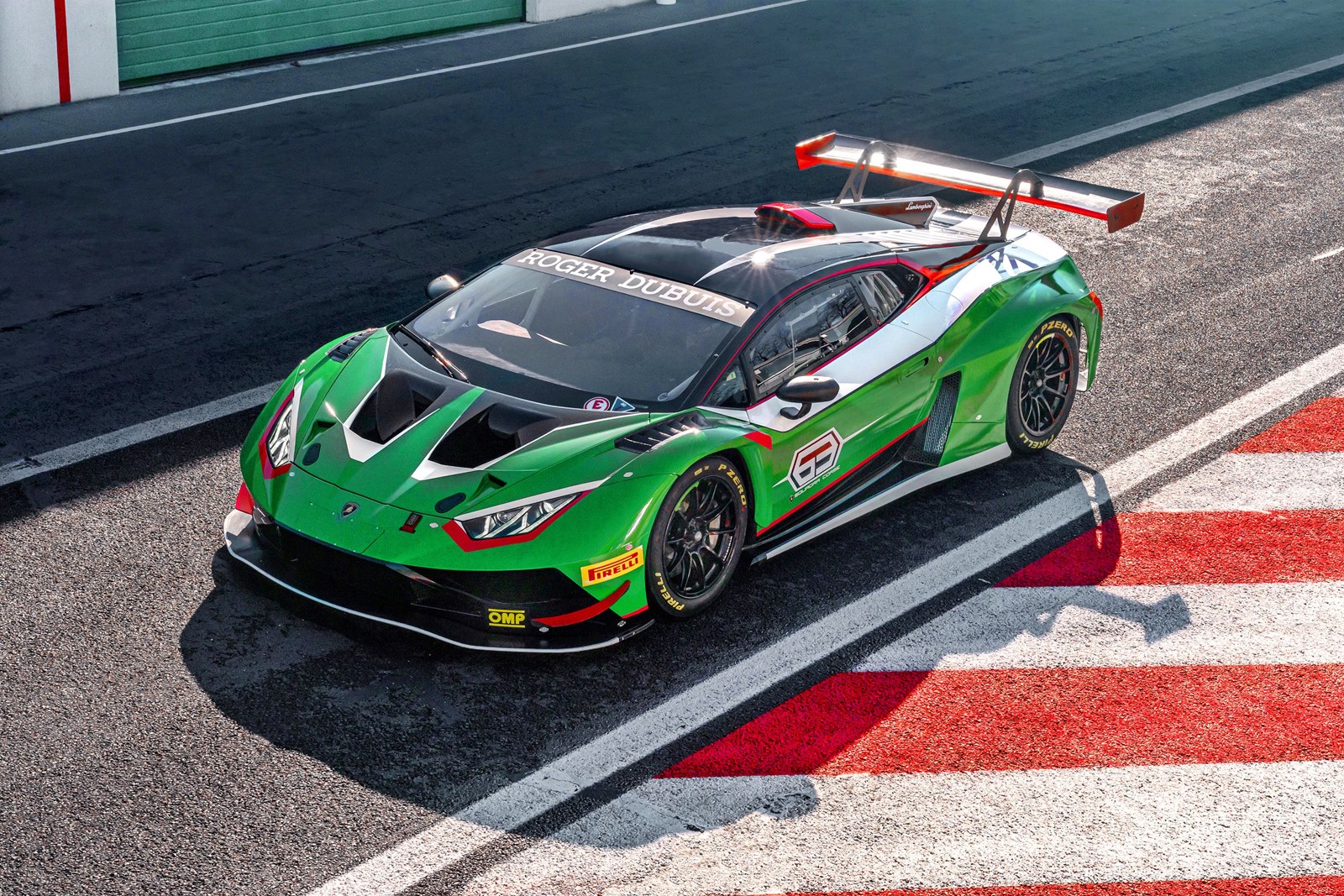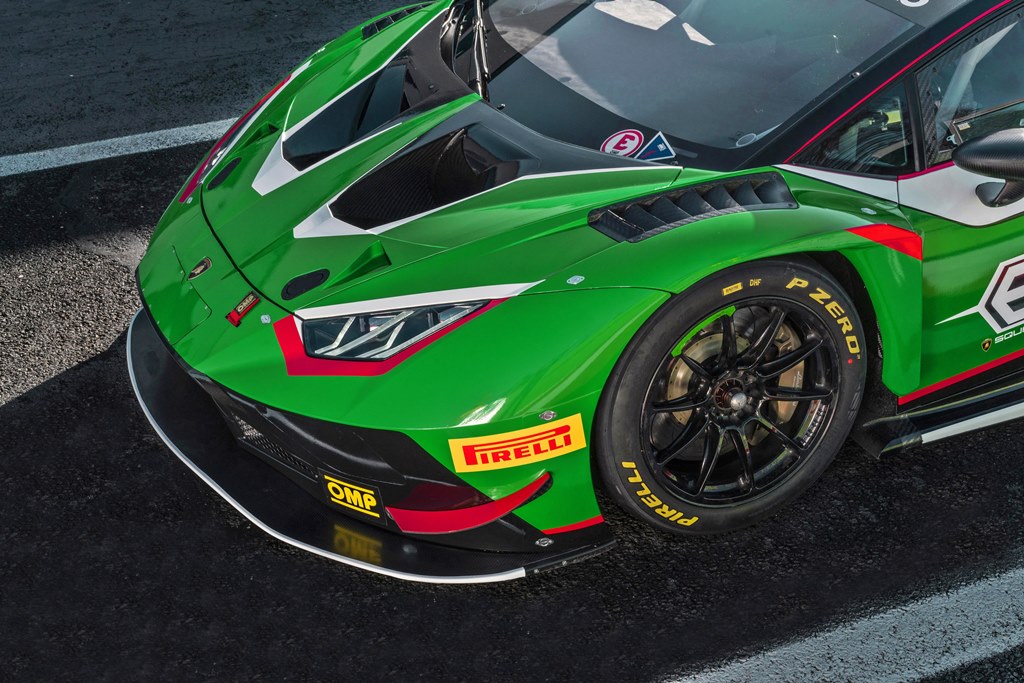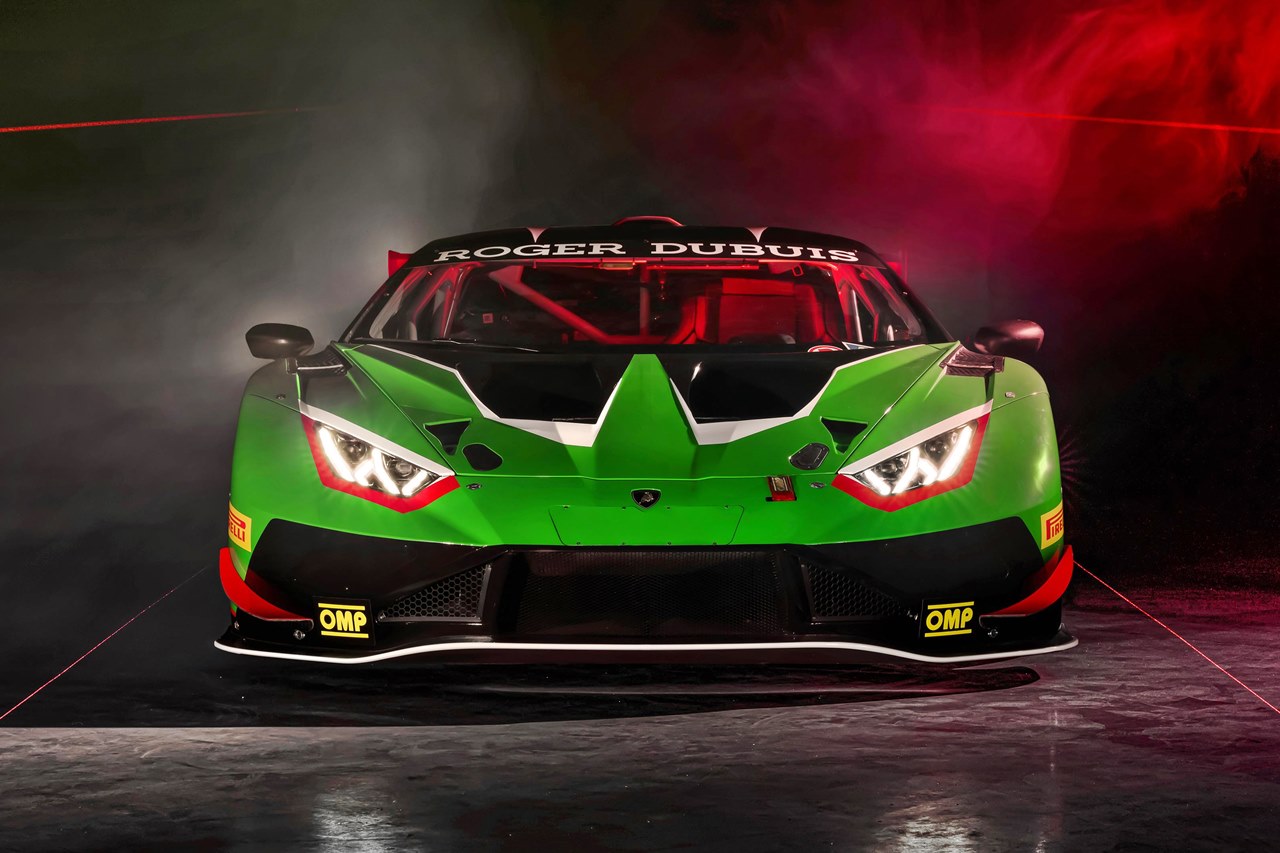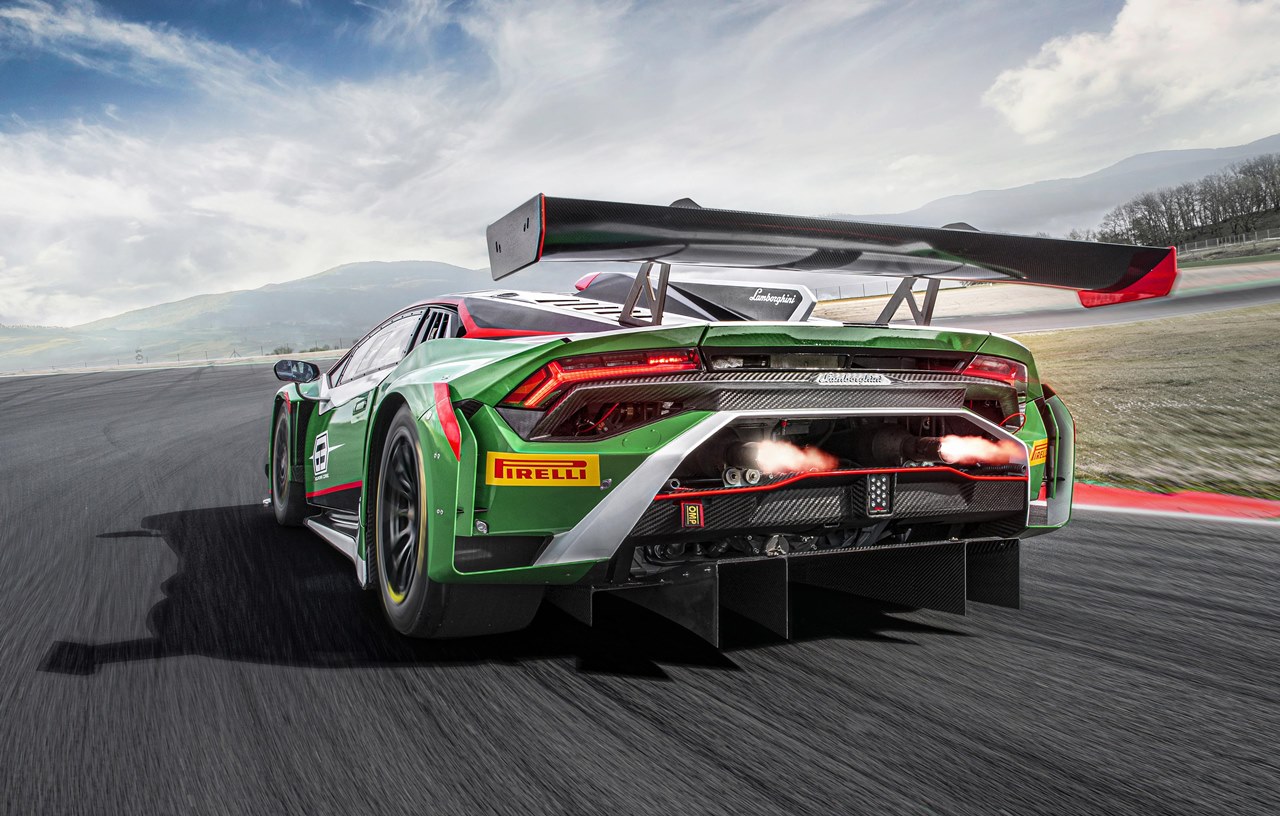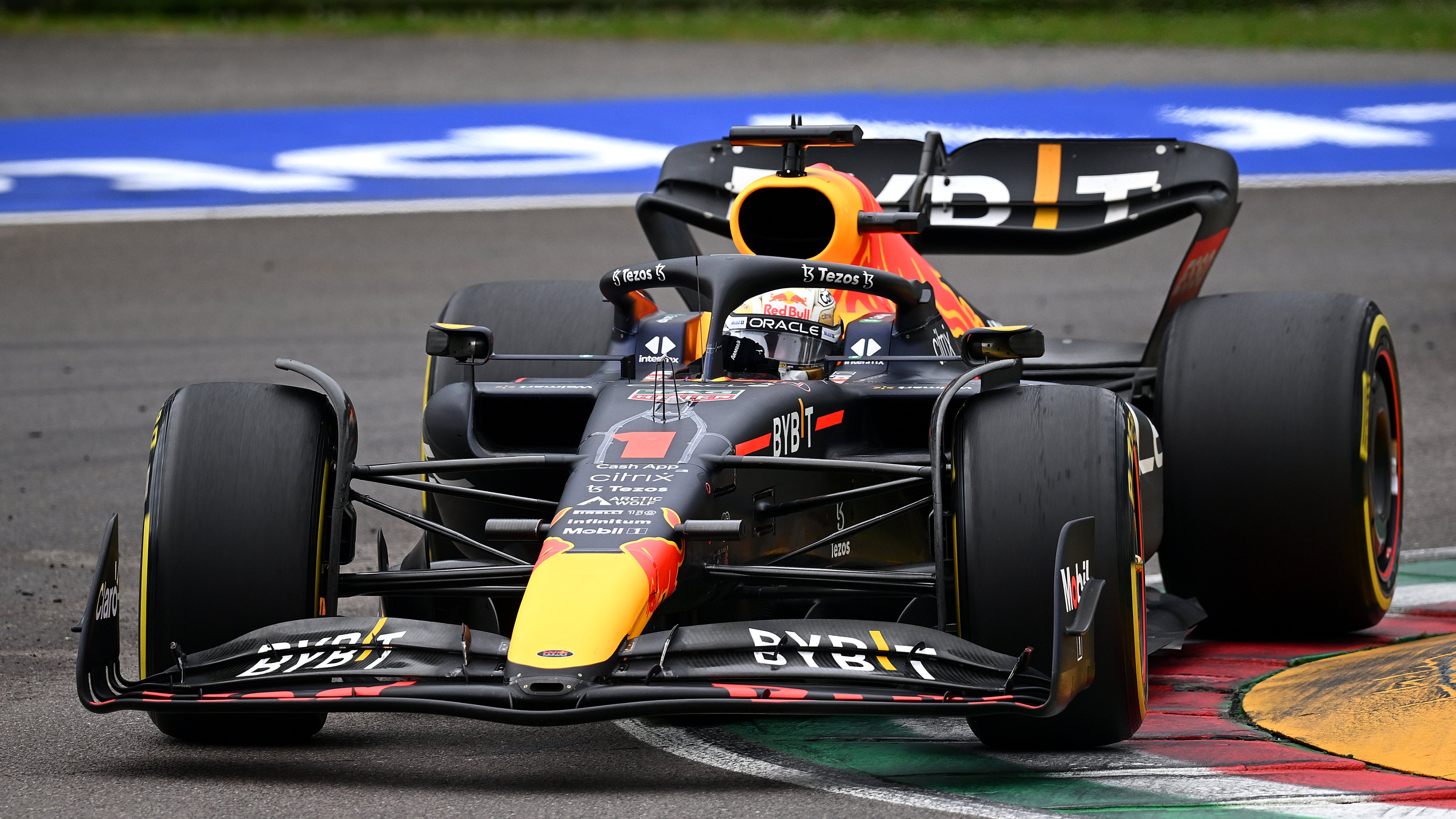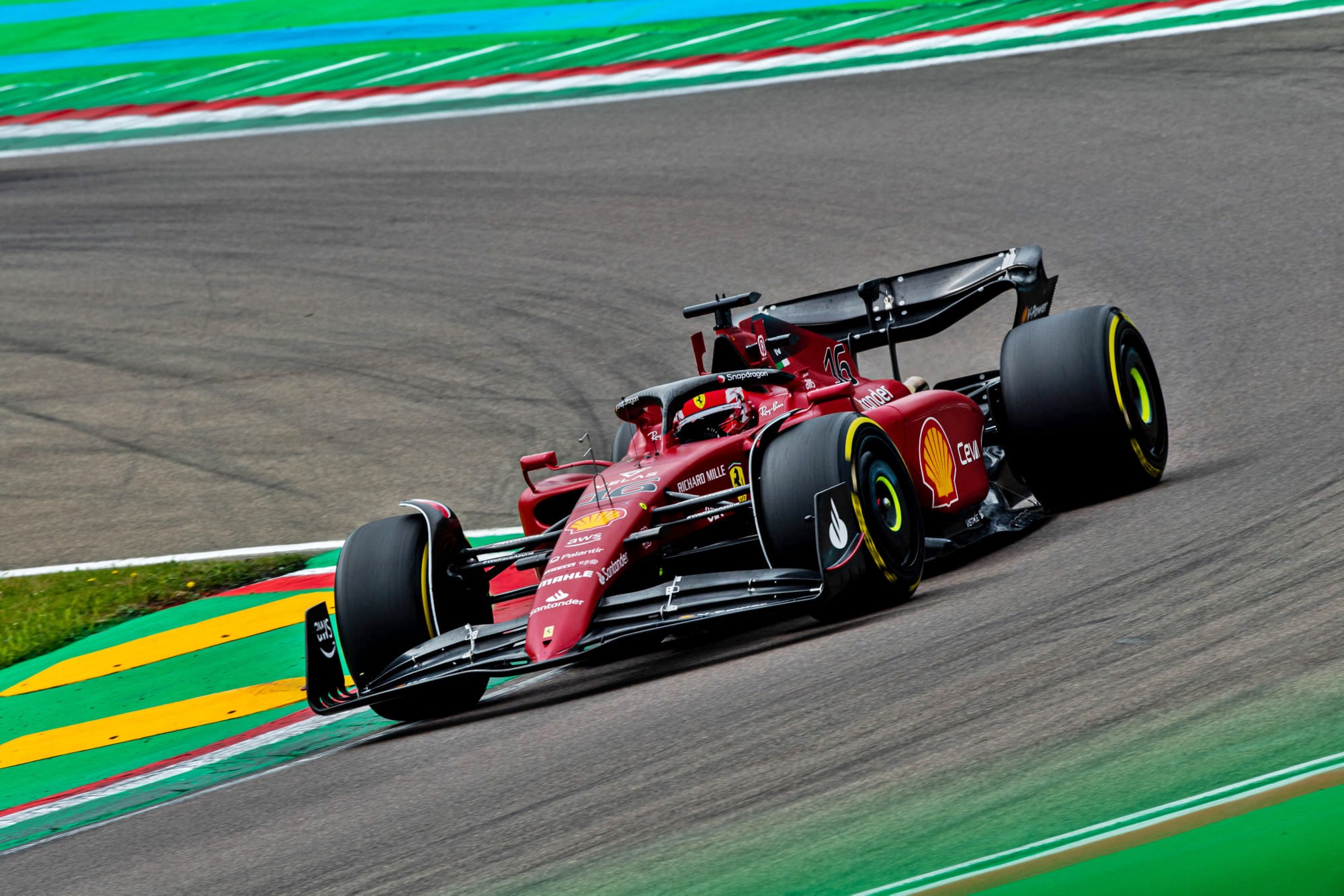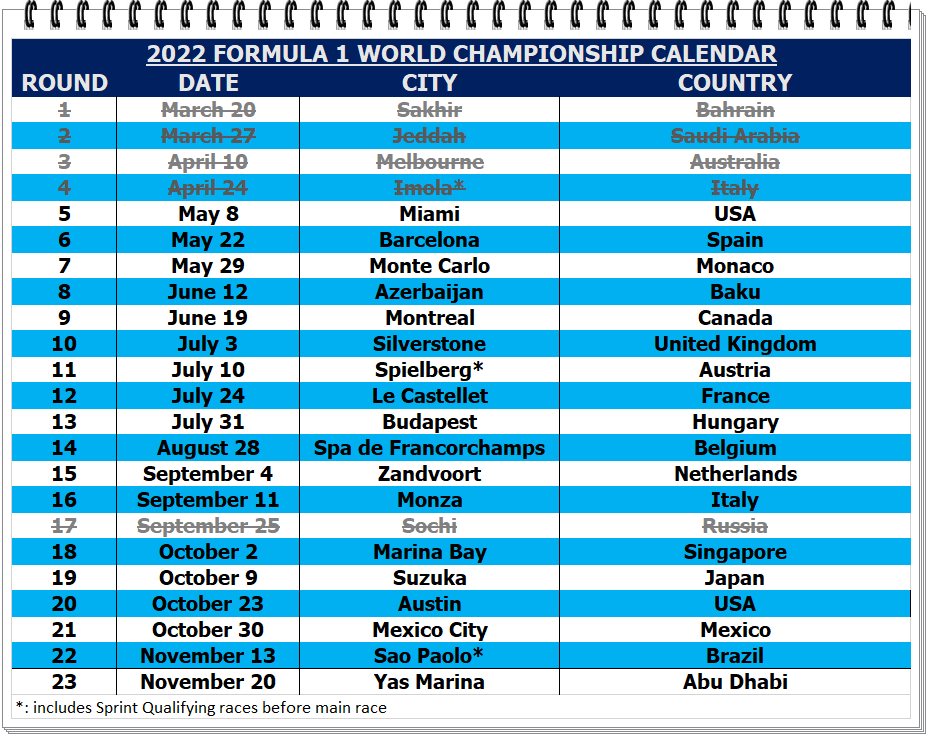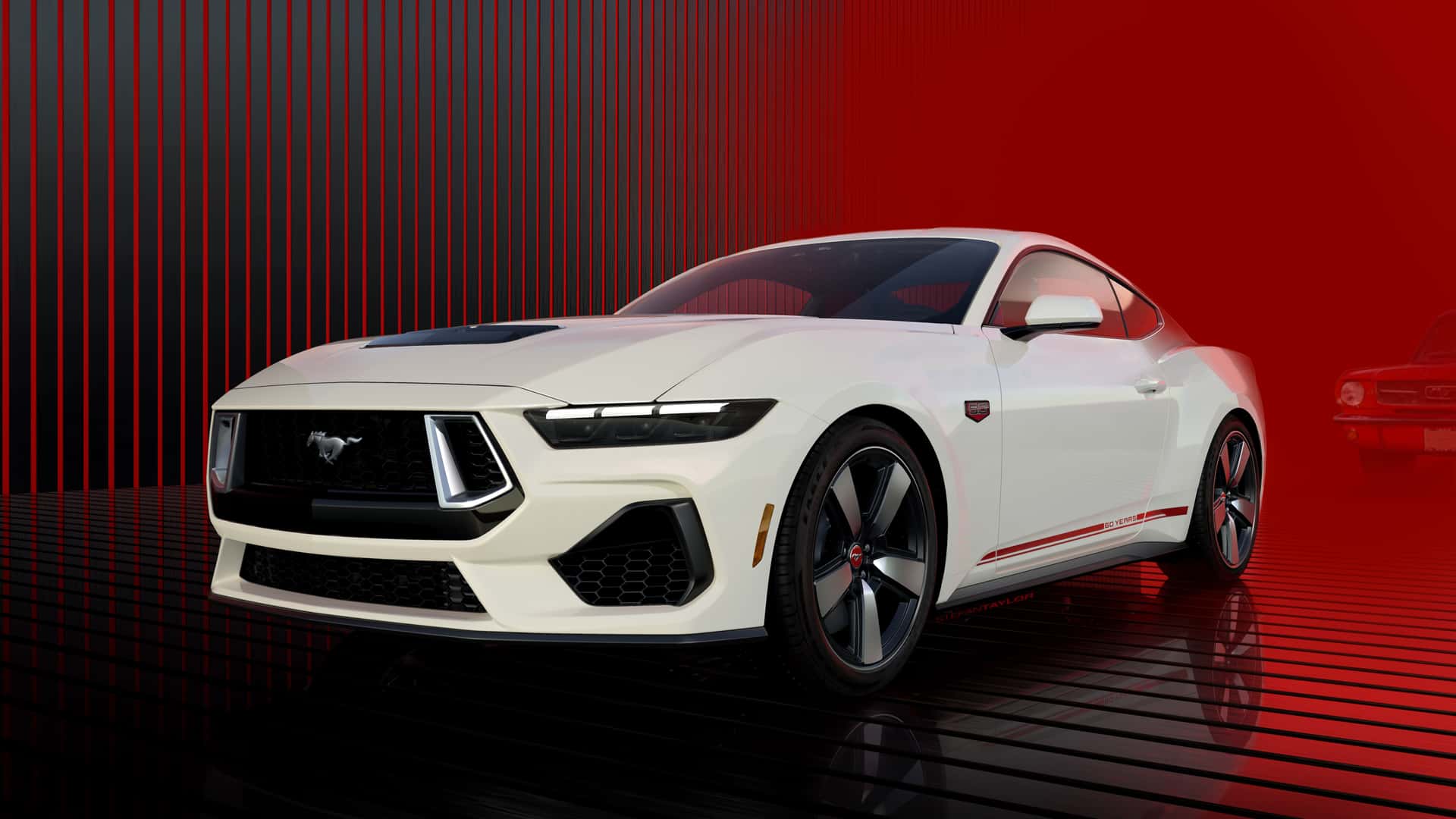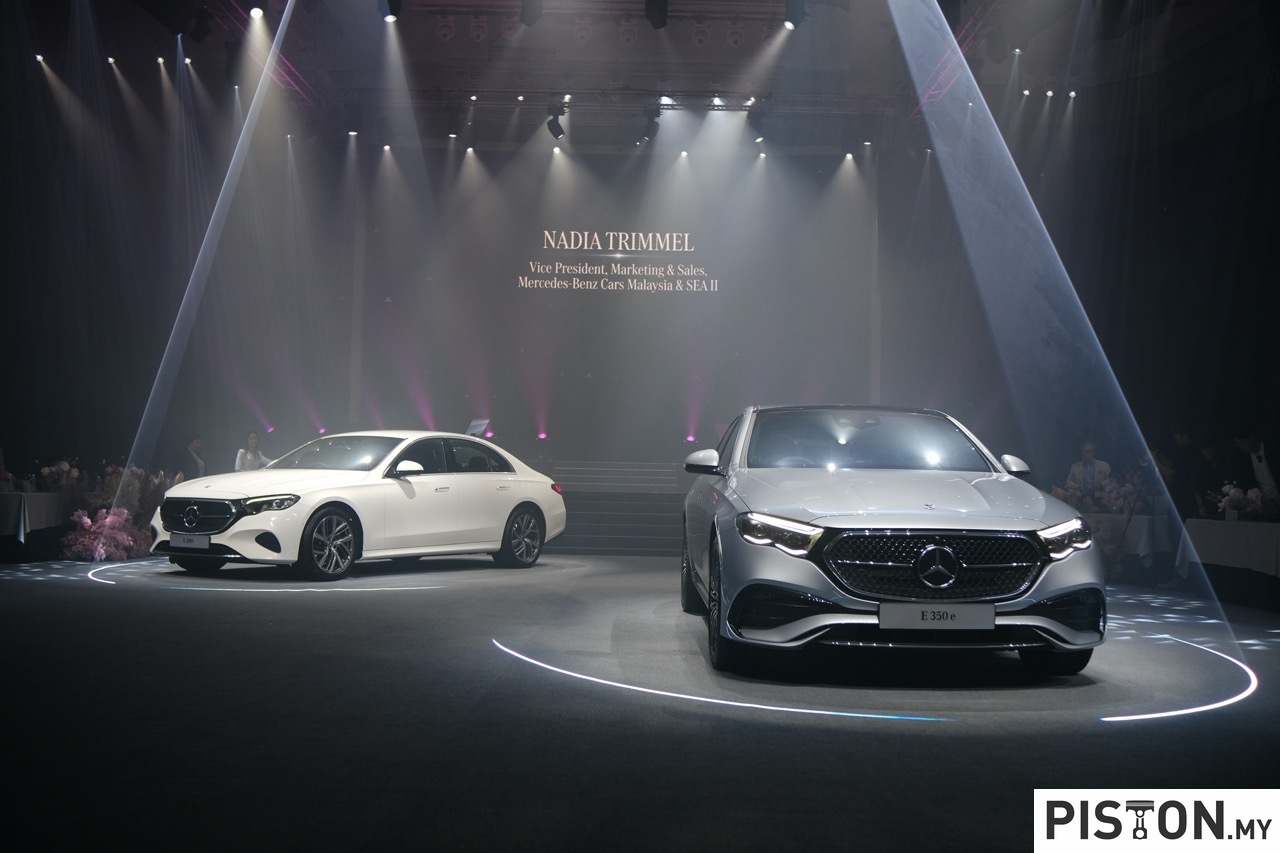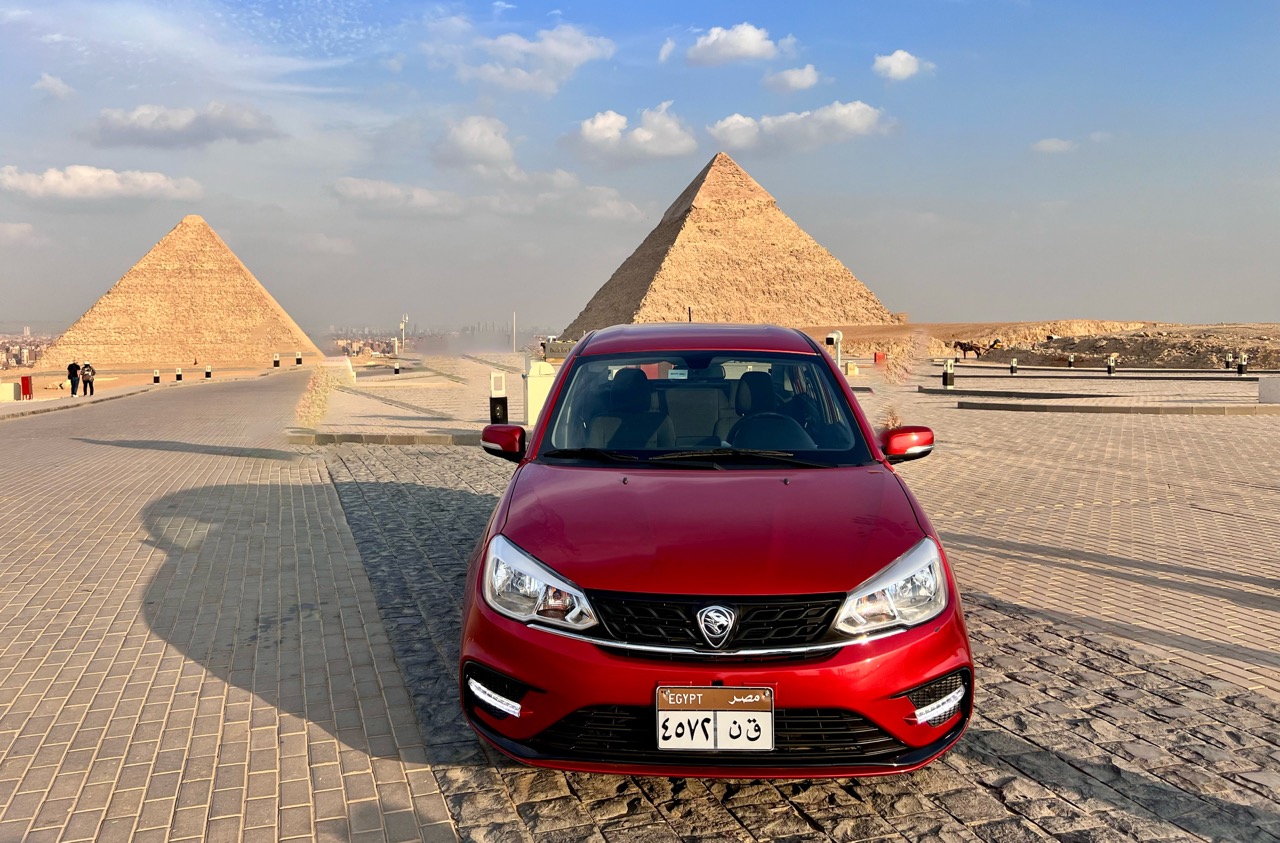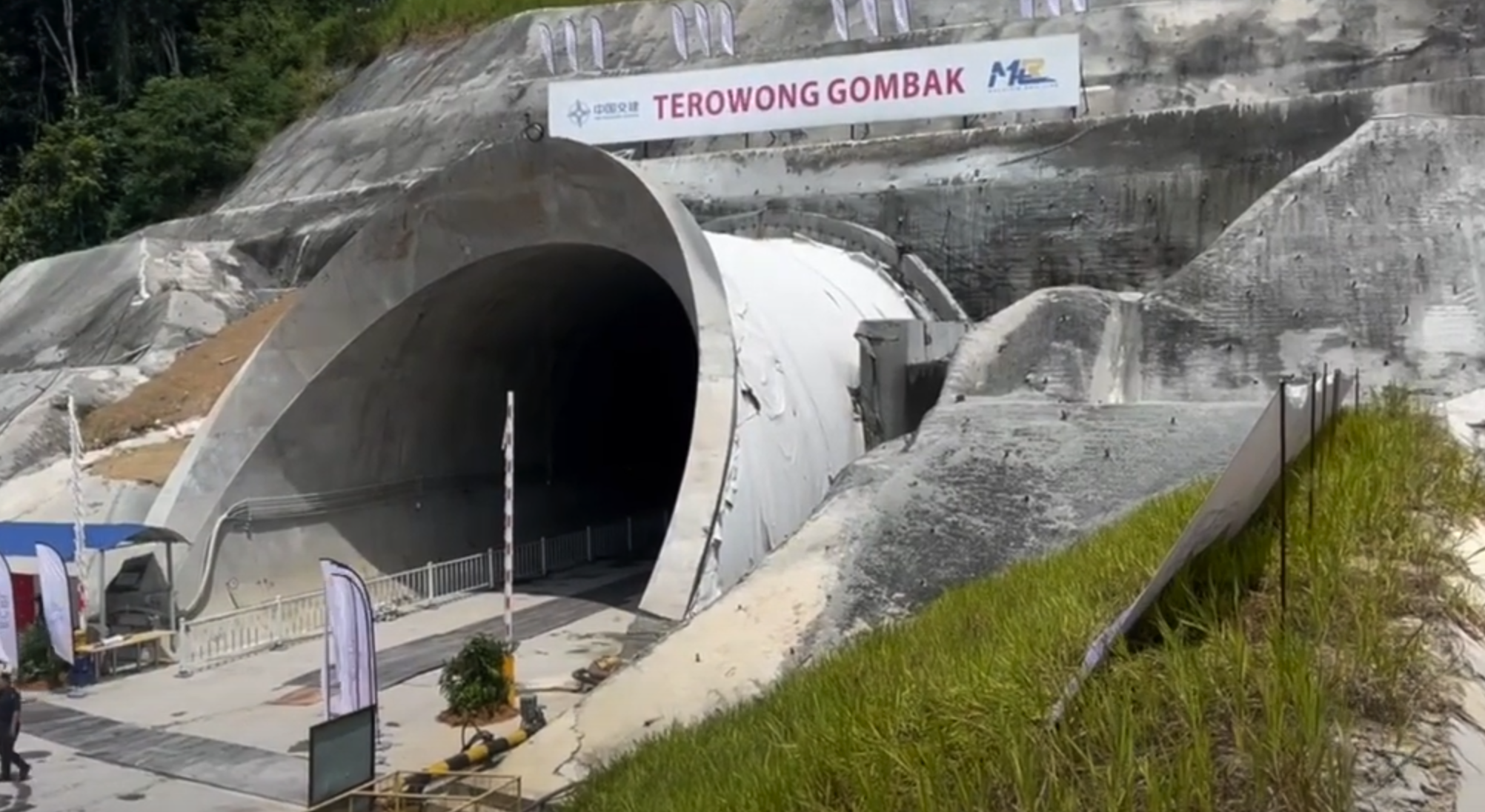The high temperatures caused much concern as race preparations started, the heat growing quickly and even the drivers needing to stay hydrated. Pirelli engineers were warning of tyre degradation and teams were figuring out how their drivers should manage the tyres and how many stops would work. All the drivers chose to start on softs, except Mercedes-AMG’s Lewis Hamilton who had medium compound tyres on his car.
Ferrari’s Charles Leclerc got off to a good clean start from his pole position, outrunning Red Bulls’ Max Verstappen to the first turn. However, Leclerc’s team mate, Carlos Sainz did not get a good start and the fumble allowed the other Red Bull, Sergio Perez to slip into third place.
Hamilton must have been counting on the tyres to help him get off the line fast and as he raced up to Sainz, the Spaniard suddenly pulled ahead and the Mercedes-AMG driver had to manoeuvre away. Problem was, Haas F1’s Kevin Magnussen was nearby and brushed into Hamilton’s car before heading into the gravel. But he managed to get back onto the track although Hamilton had a puncture and had to quickly get back to the pits. And that excitement was in just the second lap.
Hamilton’s car was then fitted with soft tyres and when he rejoined he was way down the field. There would be a lot of work ahead, and uncertainty as to how the Stewards would judge the incident with Magnussen. But his team mate, George Russell was doing great, having taken second by lap 10. He had gotten past Sainz who spun into the gravel, and was followed by Verstappen too. So the young British driver had two angry bulls coming after him as he chased after Leclerc who was 10 seconds ahead.
Verstappen passed Perez to go after Russell but on lap 14, Russell and Verstappen came into the pits and took on medium tyres. Both teams have skilled pit crews and got quick stops, with Russell able to get off faster. However, Verstappen had a frustrating problem which was that the DRS flap on his car could not open properly.
Lap 19 saw Perez coming in for mediums and when he rejoined, he was in fourth. With fresher tyres though, he would have more confidence to push harder if necessary but Verstappen was 7 seconds ahead at that time.
16 seconds behind Perez was Alfa Romeo’s Valtteri Bottas in fifth. He was not yet hassled by BWT Alpine’s Esteban Ocon who was busy trying to stay ahead of Sainz. Hamilton was way back in 16th, struggling to get through traffic. Even to get past Alfa Romeo’s Zhou GuanYu proved difficult as the Chinese driver managed to stay out of reach.
Leclerc was about 8 seconds ahead of Russell when he came in on lap 22 for his first stop. It took just 2.2 seconds from top to go again and when he rejoined, he still had a 5-second gap from the Mercedes-AMG driver. Russell was doing his best to keep his second place with Verstappen trying everything to get past. On lap 26, seeing how his angry team mate was struggling to overtake the Mercedes-AMG, Perez radioed to the team to ask Verstappen to back off and let him go after Russell instead.
And on the next lap, disaster struck the leader who was 12 seconds ahead… Leclerc’s car visibly slowed down and seemed to have lost power. He managed to get back to the pits but did not come out again, and his leading position was taken over by Russell. It was Leclerc’s first retirement of the season.
Since Perez wanted a go at Russell, Verstappen decided to go into the pits, switching from the mediums to softs. The Mexican Red Bull was eager to do battle with the British driver who was less than a second away.
With temperatures hitting almost 40 degrees C., many cars were coming in for tyre changes. With half the race completed, the Stewards informed Pierre Gasly’s Scuderia Alphatauri team that he was given a time penalty for an earlier collision with Aston Martin’s Lance Stroll. On the same lap, Zhou had to retire again, the second time in a row.
Russell put up a good fight but on lap 33, Perez outsmarted him and took over the lead. Now the Mercedes-AMG driver had to watch for Verstappen who was closing in from 6 seconds away. By then, Hamilton had moved up to sixth but some 44 seconds behind Verstappen.
Russell came in on lap 37 for new tyres and rejoined in third. Right after, Perez also came in which let Verstappen take over the lead. Russell was comfortably ahead of Bottas so he could concentrate on regaining his position. For the Dutchman though, the lead was unlikely to last till the end as his soft tyres were already 13 laps old.
On lap 43, drivers who were comfortably in points-collecting positions were Oc0n, McLaren’s Lando Norris, and BWT Alpine’s Fernando Alonso. Aston Martin’s Sebastian Vettel was also in the top 10 but when he dropped out for tyres, he rejoined down in 14th and that allowed Scuderia Alphatauri’s Yuki Tsunoda to move into 10th and get at least 1 point (if he could stay there till the end).
On lap 45, Verstappen finally came in to get the mediums; after 2.4 seconds of standing still, he rejoined and got in just ahead of Russell so it was 1-2 for the Red Bulls. Russell was 10 seconds behind, reasonably safe from Bottas who was 14 seconds away. He would get on the podium but which step would depend on whether the Red Bulls would get their bad luck again. Verstappen certainly wanted to win as it would then move him into the championship lead.
The gap between the two Red Bulls was less than 2 seconds when team orders came over the radios and Perez was told to move aside and let Verstappen take the lead since has quicker. He mumbled something about it being ‘unfair’ but obeyed the orders nonetheless, as he is expected to.
Russell decided to come in again and get new rubber, which allowed Bottas to move into third position. When the Brit rejoined, he was in fourth and just 3 seconds behind the Alfa Romeo. He had to watch out for Sainz, though, who was not far behind. It took 1 lap for Russell to regain his third position and as he was doing it, Perez also shot into the pits to get new tyres as a precaution in case he had to work harder in the closing stages.
Sainz and Hamilton began duelling on lap 60 and the Mercedes-AMG driver closed in on the main straight, then swept around on the outside to get past into fourth position… quite an impressive recovery from the back. Unlike Red Bull, the Mercedes-AMG team was unlikely to ask Russell to move aside and would instead just be praying that their two cars would make it through the remaining laps and collect a nice set of points.
With 2 laps remaining, Verstappen looked set to take the chequered flag, followed by his dutiful team mate across the line. Russell was also on the way to finish third but then Hamilton’s car had overheating problems and Sainz swept past on the second last lap.
And so it was a 1-2 for Red Bull but not 3-4 for Mercedes-AMG as Sainz took Hamilton’s place. Fortunately, the race ended as Bottas was coming up behind Hamilton.





